|
15th March 2022 We're with the Woking Gaming Club at The Sovereigns for some Tuesday evening entertainment. Four Gardens is a game about you guessed it... four gardens, it's also about spinning a pagoda! I'm not sure if Spinning Pagodas would be a better name or not? Why are players spinning a pagoda? Apparently, the pagoda contains some gods! Who... I guess... like... being spun? What's in a game?
The resource tokens felt like they were wooden and the wooden cubes were pretty standard wooden cube components, which is something I like. The tiles were standard quality card tile and fine, I thought having tiles with little hole to hold resource tokens was a pretty smart move. The card were also pretty standard quality from what I could tell. From the large, eye-catching and rotating pagoda to the tactile resource tokens shaped and coloured identically to their icons in the game; Four Gardens has excellent presentation. The backs of the cards which, when placed together form the panoramic views of the titular feature excellent, colourful and interesting art. Four Gardens features a fair amount of iconography, from the 4 scoring tracks and types of gardens to symbols for resources and different actions available on cards. For the most part, it's instantly understandable and there should be few problems with the iconography. How's it play? Setup
On to play As the name suggests, the objective is to create 4 garden panoramas using the backs of the cards. Four Gardens uses the traditional turn, with the active player acting with play then progressing to the player on the left. During their turn, the active must perform exactly 3 actions. Each action also requires the player to play or discard one of the cards in their hand. There are 4 actions that can be performed, these can be performed in any order the player sees fit. The actions are:
Endgame Depending on the player count, once 8-10 panorama cards have been constructed by any player, play goes into the endgame and the current round is completed. Players calculated VPs earned from the 4 scoring tracks and points they may have gotten from a bonus VP track. Points are tallied, highest score wins. Overall
I'll start by discussing the pagoda - the game's most obvious feature. Is it a gimmick mechanic? Maybe. Does it work well? Definitely. It's also quite a unique mechanic and not something I've seen anywhere else. When used in conjunction with the rule limiting how many resources can be collected on the planning tile, it forces players to really think about how they have to manipulate the pagoda to get the resources they need: It takes an action to empty a planning tile that's been filled unnecessarily and that's an action that could be used elsewhere. I think it's a set of mechanics that works very well. Talking about the pagoda does lead me to one gripe: Which is the rule where all players should sit around the pagoda at 90' angles. Players don't always have the right gaming space to accommodate this and while strictly speaking, it's not necessary as players can remember what side of the pagoda is meant to be facing them, it's inconvenient and finicky. The card-synergy, or more accurately score-synergy is a pretty clever rule, providing players a reason to work towards completing panoramas. The 4 scoring tracks seem a little unnecessary but in practice they work fine. This brings me to the knock-back mechanic. It feels a little harsh that, if a player gets their scoring marker knocked off the board, it can't come back into scoring. On the other hand if a player has reached maximum on a track and other players are lingering at the bottom, it's probably not a priority for those other players, so not that much of a loss. So yes, it feels a bit harsh but it's not game breaking. All of this means players will look to optimise the order in which they play cards to optimise how they increase their scores. Concentrating on increasing scores in 1 or 2 tracks can potentially knock-back other players. Conversely, working towards completing panoramas can earn bonuses which may prove useful elsewhere; sometimes you'll be able to do both but sometimes not and looking for opportunities to exploit these times is vital. The also makes use of a variation of the hand-as-currency mechanic, except here it's used to trigger actions and not to actually pay for something. Despite this difference, it places that same conundrum on players; which is how to choose which card to discard? Obviously, they'll be times when it has to be a card with the action they need but otherwise, it's another meaningful decision to make. In conclusion; Four Gardens is a fairly easy to learn set-collecting game that provides players with enough decisions to be engaging, fun and provides unusual resource gathering and scoring mechanics which makes it feel unique. I enjoyed it and think it's worth a try.
0 Comments
17th February 2022 It's a Thursday night and we're round Simon's for some gaming goodness. The game of the night was Star Wars: Outer Rim. Turns out that playing a scoundrel in an open world Star Wars game ain't like dusting crops. What's in a game?
Regardless of whether it's practical or not, the semi-circular board looks like eye-catching. From an art perspective, it's clear that they've used some photo-referencing from the films for some of the illustrations and I think that's fine, it still looks like good artwork and means the game wisely eschews using actual photos anywhere. The quality of the art is good. Star Wars: Outer Rim uses quite a lot of iconography, for stats, for factions, on the dice etc. Fortunately, much of it is pretty clear and self-explanatory, it requires little referencing to the rulebook. This is helped by the use of tags which is easily understood. How's it play? Setup
On to play In Star Wars: Outer Rim players take on the role of outlaws, bounty hunters and scoundrels, the general scum and villainy of the galaxy I guess and the objective in Star Wars: Outer Rim is to acquire fame. There are varied paths to achieve this. collecting on bounties, delivering goods and other tasks or jobs that will occur during the game. In their turn, the active player will perform actions in 3 phases before play moves on clockwise. These phases are Planning, Actions and Encounter.
Endgame Play continues until the any player reaches 10 fame, the game then immediately ends and they are considered the winner. Overall
I haven't covered the entirety of the rules here but even so, from the perspective of complexity, Star Wars: Outer Rim isn't too bad or that complicated. You move a few spaces, perform actions, have an encounter and that's it. There are a number of situational exceptions (Mostly coming from cards that are drawn.) that need remembering though, players will want to pay close attention to their playing area to know what they'll be good at, paying attention to their tags in particular. The game also possesses some RPG aspiration here and makes use of very light RPG system, there's no XP as such but characters and ships can be levelled up after completing their goals. Having said that, the rules will probably be a little too convulsed for non-gamer types. I don't think that this is a game for Star Wars fans wanting a board game to play. It feels more like a board gamers who want a Star Wars game to play, which is not a thing necessarily bad and honestly, there's going to be a bit of crossover between the 2 groups. Because of the fairly open nature of the game, it's quite hard to describe what players will expect and strategies they might employ. Players will likely acquire jobs, encounters, bounties etc randomly to some extent, this will require them to adapt their strategies. Optimisation, picking up and completing jobs while working towards other jobs is vital here, as this finding the most efficient route across the map, The board's unusual shape essentially funnels travel along 2 or 3 routes. All of this is provided of course, that all the pieces fall in the right place. This would include watching how patrols move and the reputation players have with their respective factions. There are also other paths to accruing fame points such as fighting patrols. Players will also look to gain crew, improved ship and mods. Additionally, there's nothing to stop players fighting other players, in fact, the game may sort of encourage this as circumstances ay put one player's bounty aboard another player's ship. I'm not sure how I feel about Star Wars: Outer Rim. One aspect that irks me is the entirely different set of mechanics used for skill tests and combat. Another is the shape of the board. For an open world game players are in essence limited to the choice of going one way or the other, clockwise or anticlockwise. Yes. the board looks good and perhaps it makes sense within the context of the Star Wars setting but ,t feels like it's been done to nudge players to undertake tasks in a certain order, all in the name of game balancing or game play. I also found the game a little unengaging. I think this was down to a mixture of what felt like a long downtime between turns and frequently slightly unexciting turns. And as with a lot of open world games that sort try to implement a go-anywhere-do-anything theme. It feels like a bit more of an effort than it's worth. I wonder if it wouldn't be better to get a player to gamemaster an actual table top RPG instead. 9th February 2022 It's Wednesday night and we're round Simon's for some gaming fun. The evening's game was In the hall of the Mountain King. Ask yourself: What is it that trolls like to do? Live under bridges perhaps; no. Chase goats maybe; no. What about make trouble on the internet; no. What trolls really like to do is dig tunnels (The fancier the better.) and move statues! What's in a game?
There's certainly a good amount of wooden tokens and meeples here, the acrylic crystals are also a nice addition. None of the other components struck me as being poor quality and they're typical of what is expected in a modern game. There are a couple of minor quibbles though. The pedestal points tokens are a bit small and fiddly to handle The second is a bit of personal grumble - which is that all the carts are brown but depending on where the carts are acquired from will represent different colours. Carts in a player's central area can be used for any colour of statue. But carts from icons on troll cards can only be used to move statutes of a certain colour - which is indicated by the colour of the icon used to acquire the cart! Makes sense... right? Maybe not? Surely it would have been useful to include some carts of the relevant colours? There isn't a great deal of art in the game, mostly on on the spell and troll cards but it's all well illustrated with bold colours and and is fairly varied. There are 4 types (Or clans.) of troll cards and 3 types correspond to the blue/orange/white colour motif that runs through the game and I quite like how those trolls cards have a colour pallet to match it their types. Having said that; the starter cards all feature the same piece of artwork that has been coloured matched to each player colour which is a little disappointing. For the most, the game's iconography is actually straightforward and easily understood. Only the aforementioned issue with carts being a small problem. If the cart icon has a coloured background then a cart that is sourced from that icon can only be used for that colour of statue. Luckily it's not a gamebreaker although it's finicky rule to remember. How's it play? Setup
On to play Play during In the Hall of the Mountain King will have active player performing 4 actions before play moves clockwise to the next player.
Endgame The endgame is triggered when there no coronation tokens left to acquire. The current round is completed and 2 more rounds are played. Players then calculate VPs, a player's VPs may come from the following sources. Score tracker. Statues - depending on their position in the 5 zones and doubled if the player managed to place them on a pedestal. Great hall tokens in a player's network - with or without statues. Pedestal points for placing pedestals. Coronation tokens. Unspent resources; these can earn points. Every 3-of-a-kind scores an extra VP. Points are tallied, highest score wins. Overall
Despite having quite a few rule to remember and sounding quite complicated, In the Hall of the Mountain King is actually pretty straightforward in practice and many of the rules are obvious when in action. There's definitely a couple of finicky rules though, and again - it's to do with the carts and pedestals. It feels like an unnecessary complication to have these differently coloured carts to move statues. The rule that restrict pedestals to 1 per colour in each zone also feels a but cumbersome. I know why the rule is there: It encourages competition in a game that otherwise has little interaction between players. Players will want to be the first to get a pedestal as close to the Heart of the Mountain as possible. It locks out completing players and offers a big scoring opportunity. It means that players are put into a balancing act of needing build their tunnel network but also acquire resources to make this expansion happen. Clever placement of tiles will earn players some resources but recruiting trolls is the best way to get them and you'll note that digging and recruiting are pretty much the only 2 mutually exclusive actions in a turn. There's more to tunnel tile placement too, pedestals and thus statues have to go on anchor spots and it's these need to be as close to the centre of the board as possible, sometimes it'll be tricky to get it right, or it'll require not getting something else. Being able to avoid rubble spaces helps as well. Resource management also has more to it. Spending resources from troll cards first is prudent, as is using workshops to change them into other resources - because they go back on to the storage space and not the troll card. It does involve trying to think ahead about what resources can be acquired and what will be needed. This brings me neatly to the Trollmoot/Horde elements of the game, with their overlapping and cascading mechanics for both buying cards and acquiring resources they almost feel like a different game to the tile placement taking place on the game board. I have to say that I like the cascading mechanic, it's simple but provides some interesting decisions for players to make. Building up a Trollmoot, like much of In the Hall of the Mountain King requires a little forethought. If my calculations are correct, the cards in the centre columns will be activated the most. Players will want to identify and prioritise what resources they'll need in their Trollmoot setup. Additionally, deciding where to place a troll card will determine what resources the player immediately. I do also have some concerns about the game, I found using the tunnel tiles, creating pedestals and moving statues more of a chore than satisfying and the game it didn't quite gel with me. I'm also not sure how much value there is in replaying the game. The player and statue starting positions and workshops may vary but mostly the board's resources stay unchanged. And while the card mechanics are good, the cards themselves only vary in which resources they provide. In the Hall of the Mountain King is another one of these games that does nothing really wrong and I've got nothing against the game. If someone else wanted to play it I would happily join in but somehow it's missing that special something that makes me want to play it again. 3rd February 2022 It's a Thursday and we're round Simon's for a night of gaming. The first game of the evening was My Little Scythe. My Little Pony What does does My Little Scythe have to do My Little Pony? Well... err... nothing... obviously... My Little Scythe is a reskinned iteration of Scythe that has been simplified and pared down to make it more accessible to younger players. I have played Scythe but it was some time ago, long before I started this blog in fact. What's in a game?
It's obviously that the game's art direction is meant to emulate the style of a Saturday morning kid's cartoon. It makes use of bright colours and features well illustrated cartoon styled art throughout. The game's iconography is clear, all of the symbols are easily understood. What's in a game? Setup
On to play My Little Scythe is all about victory conditions and the first player to achieve 4 of them will win. The turn structure in My Little Scythe is very traditional, with the active player having their turn and active play moving to the person on the left.
Endgame Play continues until a player has earned all 4 of their trophies which triggers the endgame. Each player who has not earned their 4 trophies now has a further single turn to do so. Additionally, the 1 trophy per turn restriction does not apply during the endgame. In the case of a tie (Which can be likely considering the small scoring range.), whoever has the highest friendship score wins, if the tie still isn't broken, whoever controls the most resources wins and if that's equal, victory is shared. Overall
My Little Scythe has done a good job of paring down the rules of Scythe without really diluting its game experience. Players of Scythe will find a lot here that is familiar. Like Scythe, My Little Scythe is a blend of doing your own thing and competing with other players. This is due to how the trophy mechanics work; players are attempting to complete any 4 objectives out of 8 which generates a lot of routes towards victory. Different players will naturally approach how they can go about winning individualistically. It means that player behaviour can generally be quite varied, players may simply ignore each other, compete for resources or even engage in outright conflict, or any amount of combination of those. However, I feel that acquiring apples and gems is perhaps the most important goal in the game maybe overimportant, they provide the most ways to earning most trophies, competition for them can be stiff, especially with higher player counts. Players in My Little Scythe will want to optimise there strategy dependant on a number of factors, including personality card and resource locations, they can also to pay attention to what other players, trying to predict what they're doing, react accordingly and may have to change their strategy. With it's colourful, cartoony presentation and relatively stripped down rules, it's obvious that My Little Scythe is at least in part aimed at younger players - that's not to say that it can't be enjoyed by adults or doesn't have some crossover appeal. Having said that, I don't think the rules are that simplified, I'd say they're still fairly intricate and could prove an obstacle to younger players, particularly if there isn't an older player present who's familiar with the rules. I'd say My Little Scythe is family-friendly more than kid-friendly. I think it's a fairly good family-friendly game as well and a good introduction for kids or 'non-gamers'. For me though; I'm not sure how I feel about My Little Scythe. It doesn't feel like my kin of game. There's nothing wrong with the game mechanically, nor do I think it's overly simplistic and I'm fine with the theme. I can see how other people enjoy it but I was just unenthused by it and found it unchallenging. To me, It felt like there was synergy lacking between actions I'd have no problem playing it again if others wanted to, but it's not one I'd choose to play. 28th January 2022 It's Friday evening and we're round Simon's for a night of gaming. The game of the night was Apollo. Houston.... we've had a game here. One small step for gaming and errr, umm... one cooperative game for gamers? Anyway, enough of the bad jokes. What's in a game? Apollo is an symmetrical cooperative game where 1 player take on the role of mission control and the other players take on the role of astronauts on the titular mission.
The boards, tokens and player screen are all constructed of suitability thick card. While the dice are not wooden, they use a old school LCD numeric font for the numbers which is pretty cool, as are the pouches to store the mission cards. The astronaut board and particularly the player screen feature very well themed artwork that calls back to sixties computer tech. The art on the astronaut board displays various dials and buttons is perhaps a little sparse but is also clean and doesn't interfere with the game element. Most of the player screen is decorated with evocative artwork of of what I imagine is module controls, the inside has some game information but the rest is an illustration of what mission control might look like. Dig the cup of coffee! The art that depicts the Earth and the Moon is perfectly fine, they look like what they're meant to. Finally, the flight stage cards are double-sided and as each one is completed, it's flipped over to show an illustration of that actual stage, which is a nice touch. The game features little in the way of dedicated iconography, all the information is presented clear terms and is easy to comprehend. How's it play? Setup Since Apollo is a asymmetrical game, it has a asymmetrical setup.
On to play Apollo is played over a number of rounds, each round has its setup and then is played over a number of turns. To make matters worse, Apollo is played in real time and each round only lasts 4 minutes.
What are these actions and how do they work?
Endgame During play, if the module passes a flight stage space on the board without completing its requisite task or the flight control rating is lower then 4, then the mission immediately fails. If the module reaches splashdown without completing the required number of experiments, then the mission fails. However, if all the flight stages and experiments are completed, then mission is a success and the players win the game. Overall
The rules for Apollo sound quite clunky in writing but in actual play, they felt straightforward and once players begin performing actions, it becomes quite understandable. I wouldn't call it a crossover game but I imagine that it would be easy to pick up. Apollo is quite unusual, being an asymmetrical cooperative game and I think it fits its theme quite well too. Having that slight disconnect between mission control and the astronauts somehow lends the game a greater sense of teamwork. Astronauts having to rely on mission control to get information and mission control having to rely on the astronauts to get comms tokens and to be able to make changes to systems means players have to work together. It's definitely a bit different to the typical cooperative game where players are cooperating but generally sort of off doing their own thing. Another noticeable and welcome difference is how there's no characters running round a global board trying to stop the spread of something here. During the game, players will be, broadly speaking, faced with 3 types of obstacle; successfully completing flight stages, successfully completing experiments and firefighting damage that occurs during the flight. There's a real need to strike a balance between these 3 priorities and players will also have to approach this as efficiently as possible, the flight module moves along the board after every turn and is in essence another countdown timer. It means planning for the known variables of the flight stages, somewhat knowable experiments and also reacting and adapting to unpredictable damage inflicted on the command module and there will be damage! There are 15 damage spaces on the flight damage board and only 10 dice to cover them, that means at least 5 damage to the systems every round. Being a cooperative game, Apollo uses the luck or specifically the bad luck that arises from rolling those dice to challenge players. The game also features a time limit in the form of a 4 minute timer: On paper this might not seem like much time but in play it's perhaps a little overgenerous. 4 minutes to assign 10 dice works out to be 240 seconds for 10 dice or 24 seconds per die, which we did not find much of an issue. We played the Gemini mission board a couple of times and it didn't present too much challenge for us, there were a definite couple hiccups and dicey (sic) moments but otherwise it was pretty much plain sailing or more accurately, plain err.... orbiting? Mission control never had to reach for the puzzle boards. However, we are a fairly experienced band of players and maybe for once, the luck went our way this time. We didn't get round to playing the Apollo mission board which is probably where the meat of the game lies and certainly looks more challenging, so I'm reserving judgement on the game's difficulty. I'm not certain about the game's replay-ability either, it wasn't boring but at the same time felt a little samey, players are ultimately just assigning dice to tasks, some of which may become quite familiar over multiple plays. Easy to learn with a reasonable play time and providing some interesting decisions to make, I'd say that Apollo is a good game to play every once in awhile and if cooperative games are your cup of tea, then it's definitely worth checking out this fresh take on cooperative gameplay. 15th January 2022 It's Wogglecon and the final game of the day was Ginkgopolis. What's a Ginkgopolis? Good question, I guess it means Ginkgo city but what does Ginkgo mean? It's a type of tree, so Ginkgopolis must mean tree-city. In Ginkgopolis, players take on the role city planners in tree-city and attempt to manage it's expansion, both outwards and upwards. What's in a game?
Ginkgopolis has solid components, the tiles and tokens are constructed from suitability thick, chunky card as are the screens, while the meeples and resources are wooden which is always appreciated. The game makes good use of colour, effectively mixing primary colours with green and emphasising the ginkgo tree motif employed throughout. Ginkgopolis' artwork is high quality, character cards are well illustrated with slightly cartoonish, colourful individuals that follow the game's red-yellow-blue and green theme, the same is true of the building cards/tiles which depict various different types of structures. The iconography in Ginkgopolis is a bit strange, there's not too much of it and it's fairly simple to understand. However, due to Ginkgopolis' almost counter-intuitive rules, getting to grips with it took a little time. Nothing too bad though. How's it play? Setup
In the basic flow of actions in Ginkgopolis, players simultaneously put down cards and then resolve them in turn order.
There are 2 ways in which Ginkgopolis can end. If the building tile supply is depleted a second time or if a player has put all resource tokens on to the city. In either case, the current round is resolved and the game goes to scoring. VPs come from various sources in Ginkgopolis.
Points are tallied, highest score wins. Overall
Firstly, one small fascinating thing about Ginkgopolis is how the game almost operates like a machine! Cards played to build something must not be put into the discard pile, otherwise they'll end up going back into circulation and later, players will end with cards in their hands that can't be used to either get currencies or build upwards. Further to this, new buildings must be given a meeple so that players can track which new cards must be added to the building deck as again, it would leave players without cards to gain currencies or build. Get this wrong and like a machine losing cogs, the game will begin grinding to a halt! I don't know what kind of fevered imagination dreamt up this mechanic but it's both convoluted and brilliant! Ginkgopolis' rules are definitely a little counter-intuitive. For example; when you play a card, that's not what you're building but what you're building on top of. Or after building something, getting to keep the card you used to build something. Additionally; it took a little bit for me to wrap my head around the game. Remember: Playing a card without a tile earns currencies. Playing a card with a tile allows a player to build a tile. I would also say Ginkgopolis is little fiddly for beginning player but none of this a dealbreaker, it's more an indicator of how Ginkgopolis feels a little unusual compared to other games I've played and I don't consider this a bad thing. While there are various avenues to follow for scoring, I feel that the biggest source of VPs would come from controlling districts because it's possible to not only score your own resources but those of other players' too! It can be quite hard to plan ahead though due to the card drafting and they'll be times when you'll want to play more than 1 card from your hand. It pushes you to make hard decisions (And hope the other cards come back around.), it means you have to adapt and spot situations you can exploit. It also means watching your neighbours and trying to gauge their objectives. There's quite a lot of player interaction that goes on and putting the right tile into play at the right time can dramatically alter the landscape. There's also an interesting strategy when deciding which tiles to put in the city. Putting a 20-value tile down makes it harder for other players to build over it, they'd have to pay VPs to build a lowered valued tile, or an extra resource to play a 20-value tile in a different colour. On the other hand, keeping a 20-value tile back can give a player the opportunity to build over other higher value tiles later in the game. The building outwards or upwards mechanics provide plenty of scope here. Expanding outwards can be easier (Provided a player gets the right urbanisation cards.) because a player need less resources and will also earn currencies when doing so. The downside is that it's easier for other players to build over your tiles. The opposite is also sort of true, building upwards tends to be costly, but it's also more costly for other players to build over them. Building tiles also puts the related card (And it's bonus action.) in to play in the player's personal area, creating the opportunity to combo actions into bonuses. Players will need to balance the need to acquire currencies with the need to build tiles. However, as the city landscape and a player hand changes, so can the options to do either of these. Adaptation is vital and every decision can be critical This made my choices feel meaningful when playing Ginkgopolis, which is always good. I'd say that Ginkgopolis is a mid-weight tile laying game with some fairly interactive area-control gameplay that gives players interesting and changing options. It took a little time to warm to Ginkgopolis but I enjoyed the game and think it's worth giving a try. 15th January 2022 It's a Saturday and we're at the Bisley Scout Hall with the Woking Gaming Club for Wogglecon, for a day of gaming and hanging with with friends. There are a lot of national parks in the USA and you're about to hike a bunch of them in the first game of the day; Parks. What's in a game?
The quality of Park's components is universally high and it's obvious that a lot of care and attention has been put into the game, this extends even to the packaging and token trays. The cards are fine and the tiles are appropriately thick. The tokens are all wooden, well made and colourful, the individually shaped wildlife tokens are the standout here. Finally, the inclusion of a metal first player marker is pretty unusual but it has a satisfyingly weighty feel to it and is a cool addition. For nearly all of it's artwork, the game sources The Fifty Nine Parks Print Series which as the name suggests, is a project which consists of a picture of each American national park created by a different artist. Perhaps it could be argued that doing this saves on the art budget but honestly, it feels like a great collaboration. As a result the game features excellent and varied artwork throughout, all the park cards and photography tokens are uniquely illustrated, the art also features on all the card backs and even the inside of the box lid! Fantastic! Parks makes use of a fairly wide variety of iconography but for the most part it was easy to comprehend and presented no obstacle to the game. How's it play? Setup
On to play Parks is played over 4 seasons during in which each the players' hikers travels along that season's trail from left to right.
Endgame Once the 4th season has been completed, the game ends. Players score points from the parks they've visited (Bought.), they also score a point for each photo they took and whoever has the first player token at the game end scores 1 point for it. Finally; players reveal their year cards, completing the objective on these usually scores 2-3 points. Points are tallied, highest score wins. Overall
Parks is essentially a light worker placement game added where your 2 workers only ever head right combined with resource management. It's a game all about planning trips that means that it's about acquiring resources to buy park cards which generally provide the majority of VPs required to win the game. However, it is impossible to fully plan things out. Going from season to season, players will have a good idea what resources and tiles will be available but not where they will appear. It requires adaption and some creative thinking when faced with a different tile layout. Limiting the resources a player can own to 12 is an solid rule, it prevents players hording too much and splurging out big at once. It also makes players think about optimising their strategies. The initial urge in Parks is to travel as slowly as possible to collect as many resources as possible and in the early-game that's not a bad idea but sooner or later, players will need to use them up and that means visiting parks. Remember, players have only 2 hikers and that means they can only use the visit park action on the trail end twice per season (Provided they don't use any other actions on the tile.), this means that players have 8 opportunities to visit parks, yes; there's an advanced trail tile that allows extra buy actions but there's no guarantee where and when it'll appear. This brings me to the worker placement element of Parks. Each player can use their campfire a maximum of 2 times in a season, it means thinking carefully before moving on to a occupied tile, it also means trying to anticipate how other players will move and if necessary, getting there first! Or perhaps moving the other hiker so that whoever is occupying the tile you need may have moved by the following turn. Ultimately it means that players should look to optimise their moves, balance resource acquisition with card acquisition, players might well be competing for the same park card and watching a card you want being taken by another player because you tarried to collect an extra resource can be galling. Players will have the double-obstacle of reacting to both seasonal changes and the choices made by the other players. The game's rules are not over-complex but also provide a fair amount of depth. There's enough interaction between players to force you to pay attention to their choices . Decisions that players face are always meaningful and getting wrong could lose you out. Add to this the game's top notch thematically appropriate production values and you have a small package that delivers a big game. Having said that, it's not without a couple of drawbacks. Most significantly; the game experience can change notably with player count. A 3-player game will feel quite different to 5-player. The hiker count goes from 6 to 10, the tiles become a lot more crowded and it becomes more challenging to do what you want. While in games with 4 or more players an extra basic tile is added into the mix, it doesn't quite alleviate the increased clutter on the trail. Secondly, a 5-player game seems to last around 2 hours and that perhaps feels a little overlong. Parks doesn't outstay its welcome and it's not a game-breaker but it can feel a little long for what it is. Other than that, Parks is well presented, accessible and satisfying to play (At least when you get the park card you want!). It's definitely one that's worth trying. 4th January 2022 It's a Tuesday and we're round Simon's for the first in-person game of the year! 'Here be dragons', is something you don't want to shout in Clank! Instead you'll want to silently tippy-toe around without waking the damn thing up, then steal its stuff and run! NOTE: When we played Clank!, it was with an expansion that took the player count up 6 (Which was useful, as there were 6 of us!) and added characters with individual starting decks. What's in a game?
Clank features good, colourful artwork throughout, the board has a fairly unique look to it and is clearly illustrated, the cards and tokens also feature good artwork with well illustrated characters and monsters. The game uses a fairly small assortment of iconography and it's all easily understood. How's it play? Setup
On to play The objective in Clank! is to grab an artefact from the depths and escape the out of the dungeon alive! A player cannot leave the dungeon without an artefact neither score points. Play progress in traditional clockwise order during Clank! and the active player plays cards from their hand to generate resource pools which they can then utilise to perform associated actions.
Endgame There are 2 ways to trigger the endgame. It can be triggered by the 1st player to acquire an artefact and leave the dungeon or the 1st player to be knocked out. In either circumstance, the player who triggered the endgame places their meeple on the countdown track. Then when they become the active player, all they do move their meeple along the track. This will trigger a worsening dragon attack every round for the next 3 rounds, then on the final round the dragon will knock out all players who are still in the dungeon, regardless of whether they are in the depths or the upper levels. After this, the game goes to scoring, players who did not acquire an artefact or who were for any reason knocked out while in the depths do not score any points! Points may be accumulated from the following sources: Artefacts score 5-30 VPS. Tokens acquired. Card with VP values that players bought. Gold; each gold scores 2 VPs. Points are tallied, highest score wins. Overall
Clank! has an unusual mix of deck-building and push-your-luck mechanics and it's the push-your-luck element that interests me the most. Clank! makes use of this mechanic in several aspects of the game. Firstly, there's a definite push-your-luck element to generating clank. Players will obviously want to minimise how much clank they add to the banner and lessen the chances of their cubes being pulled when the dragon attacks. Having said that, lessening the impact of clank may slow a player's progress, sometimes generating clank will give a bonus, the question is; is it worth it? how much do you want to push it. There's also a contextual angle here, if you see other players are generating a lot of clank, that means it should be safer to generate a little bit of clank yourself. If the opposite is true, they you'll need to be even more careful. The most obvious use of push-your-luck is when collecting an artefact. Every player needs to collect 1 but there's quite a spread of VPs. The higher scoring artefacts are found lower down in the depths. Getting one and getting out will be more risky, but more rewarding. Compounding this is the rule that you can't drop an artefact once it's been picked up. There's no hedging you bet here, if you want a higher value artefact, you have to go for it. It's basically stick-or-twist. This also ties in with the game's other aspect of push-your-luck. The countdown mechanic adds an interesting wrinkle to all this, dramatically altering player priorities and objectives. If the countdown is triggered by another player, you'll find yourself wondering whether you can get one last scoring token before heading to the top or not - probably better to run? The penalty for getting caught in the depths is catastrophic and that 20 VP mastery token is pretty good. Conversely, if you're the player who has an opportunity to escape the dungeon and trigger the countdown, should you do it? Or should you try and get more points? It might seem like a no-brainer, but is it? Chances are the first player to get out didn't go too deep and got a lower value artefact. The combined value of a mastery token and a 5 point artefact is still less than the highest value artefact and I'm sure this is no coincidence, I put it down to well balanced scoring. Rushing to get out and put pressure on other players may work or it may not. The deck-building aspect in Clank! is light-ish and fairly straightforward, which I think is a good thing because it can have quite the influence on a player's turn. There's little in the way of card combos and mostly all the cards stand on their own. The only trash cards (And they're not really trash.) are the secret tomes, which score 7VP at the game end but otherwise clutter up a deck. This brings me to perhaps the only niggle I have about the deck-building and Clank! In most deck-builders, it's all about buying more cards, either to improve your deck or score you points and Clank! is unlike those deck-builders. In Clank! your needs may change from round to round; in a particular round you may want to move a lot, in the next you may want fight points and sometimes, the cards may just not give you what you need. Sure, in most deck-builders, the cards will screw you over but somehow it can feel worse in Clank! It can be frustrating when you don't enough quite have the movement you to reach an artefact for example and feels like nothing is going on. It's not a dealbreaker though and I guess learning to adapt as much as possible is key. Otherwise, Clank! is hard to fault. Colourful with an interesting theme and mechanics, not too tricky to learn, reasonably fast to play and with a dramatic endgame. What's not to like. If you like deck-builders or push-your-luck games or both, Clank! is worth a try. 30th December 2021 Thursday afternoon gaming on Board Game Arena continued with Dice Hospital. Doctor, doctor, please Oh, the mess I'm in Doctor, doctor, please Oh, the mess I'm in Mismanaging your hospital in Dice Hospital will definitely lead to a big mess! What's in a game?
The component quality in Dice Hospital is all round good. The tiles are study and cards are of the expected quality. The game's 60 or so dice are plastic but with well rounded corners and satisfying to roll. Finally, all the meeples are stylised after medical staff, it's a nice touch and appreciated, they're made of wood too! Good stuff. All of the art for the different departments on the hex tiles is quite small but also well detailed and depicts a variety of different medical equipment and hospital furniture, I quite like it. The specialist cards have headshots of doctors, it's sort of average artwork but on the hand, they look like medical staff, what more could you want? Besides, how much more exciting could you make the portrait of a urologist look! We found the game's iconography initially a little confusing but after a couple of references to the rulebook, it was always sorted out. None if it's a dealbreaker. How's it play? Setup
On to play Dice Hospital is played over 6 phases, some of these phases are completed in turn order and some can be completed simultaneously.
Endgame Play continues until 8 rounds have been completed. Upon reaching the end, players calculate their final scores, this includes: VPs for discharging patients over the 8 rounds. +1 per unspent blood bag. -2 per fatality token acquired. Scores are tallied, highest score wins. Overall
As well as randomly determining which improvements appear, I like how the game makes use of dice as both a randomiser and a resource to be managed. Using dice value to gauge health levels and colours to represent different types of malady is innovative and great. There's a lot of good gameplay in Dice Hospital and a lot to like. Figuring out how to strike balance the hospital's different needs, requirements and aspects is a satisfying challenge. In this regard, the game's 2-tier drafting mechanics work well, drafting patients that are easier to heal means going later when drafting hospital improvements, that's a good balancing mechanic with meaningful decisions. There's also a higher level of play at work here, if you can anticipate which patients/improvements other players are looking to acquire, you can either try and either deny them what they want or make it easier to get what you want. For example, if no one else wants a red doctor, then going last in the improvement drafting phase is not a problem. Knowing what and when to draft is probably the single most important aspect of the game, using those combinations of special abilities to heal multiple patients at a time is vital. It's also contextual, depending on the colour of patients and improvements appear and what a player already has in their hospital. Players may find themselves having to reappraise their strategy from turn to turn. Willingness to trash an improvement for a blood bag can also be a powerful play, used right, blood bags can provide much more than a single VP. Luckily, the game provides fairly good opportunities to combo departments and specialists off each other, especially toward the latter half. However, getting that balance wrong leads to sub-optimal play, having to many departments leaves them unused and too many specialists means they just do nothing. Even though it's an abstract dice game, it genuinely feels a bit like you're running a hospital, having to try and find ways to treat and discharge patients before the next influx of unending patient. This is not a coincidence. Players start the game with 3 patients and acquire 3 more every round, this means by the end of the 3rd round, they'll have filled all their wards (Provided they haven't already discharged any patients.), as a consequence, players will need to discharge 3 patients a round just to avoid sending some to the morgue. Thanks to the scoring though, there's a wrinkle here. Discharging patients in drips and drabs doesn't score many VPs. Players will actually want their patient numbers to build up a bit and discharge as many of them at once as possible to optimise scoring. It's a another balancing act and it all combines to make Dice Hospital a good game. If you like worker placement mechanics, blended with a bit mid-complexity, light randomness, meaningful choices and almost engine building elements; then Dice Hospital is worth a try. One I found an enjoyable experience. 29th December 2021 We're at Simon's for some Wednesday evening gaming goodness during the mid Christmas break. The game of the night was Lost Ruins of Arnak. "That belongs in a museum!" What does? Cliched old one liners! Lost Ruins of Arnak is a game about raiding temples of a long forgotten ancient civilisation on an uncharted island. What's in a game?
The game has really nice plastic pieces for arrowheads, tablets and jewels, along with wooden meeples, magnifying glasses and notebooks, you can never go wrong with wooden components and yet, makes use of unremarkable card tokens for coins and compasses. Yes it's a minor quibble but it's definitely noticeable. The game's cards and tiles are standard quality. From an art perspective, it's all pretty good, cards and tokens all have nice, clear and colourful thematic art. The standout however, is the board, with a pair of lovely landscape images, it's almost a shame that they'll mostly be covered with components during play. The game contains a fair amount of iconography, none of it was particularly unclear though. How's it play? Setup
On to play A round in Lost Ruins of Arnak continues until all players can no longer perform actions (Free actions don't count.) or have passed. The game features a pretty standard turn order that goes clockwise and in their turn, players will get 1 main action and any amount of free actions. A round proceeds as follows:
Endgame When the 5th round is completed, then so it the game and we go to scoring. There are a variety of opportunities to score. Research: Research tokens earn VPs depending where they finished on the research track. Temple tile: Players who reached the temple can score the VPs on these tiles: Idol tokens: each idol token acquired earns 3 VPs. Player board idol slots: Each empty slot on a player's player board earns the VPs it displayed. This means when an idol is slotted for a benefit, the VPs it covers are not scored. Guardian tiles: Each guardian defeated earns the player 5 VPs. Cards: Aretfact and item cards can also earn the owning player VPs. Fear cards: Finally; fear cards. Each fear card a player has deducts 1 VP from their total. Points are tallied, highest score wins! Overall
Hmmm, what to say about Lost Ruins of Arnak. It would only be a slight exaggeration to say that this game is sort of a jack of all trades and master of none. A little bit of deck building, a little bit of worker placement and a little bit of resource management, this game has it all! Joking aside, this, on a basic level represents 3 different approaches to accumulating VPs. That is; buying cards and using cards, visiting sites and moving up the research track. Card will get players useful special abilities and travel points, visiting sites will acquire players resources and going up the research track gets other benefits, including assistants. Players will not want to neglect any of these elements and there's fairly good synergy between different parts of the game, but generally players end up focusing on 1 of them during play. While the game isn't overly complex, there's quite a lot to consider. Personally, it felt like going up the research track was a good way to score big but it's hard to be sure. Another very important factor to think about is turn-economy, there's no set number of turns per round in Lost Ruins and finding ways to get extra main actions is vital. A player who gets 10 actions per round instead of 5 is going to just do better and I have to say, finding way to combo actions into more actions is pretty satisfying. For example, a player might use a card to get resources to move a worker to get different resources to spend on the research which would provide another benefit. Having said that, taking a single main action at a time can feel frustrating, yes it's a combo system, but it's a slow one - unless you're the only player still with actions. I found Lost Ruins of Arnak a fun game, but not a particularly compelling one; it's hard to put a finger on. The game's theme fits it's mechanics well and it has great presentation. I think maybe that all the game's systems, the worker placement and the deck building and so on are all on an individual level, a little uninspiring and bland. The deck building mechanic would never stand on its own for example, neither would the worker placement, on the other hand, they don't need to. So is the sum greater than the parts? The jury's out. When I encounter a game I like, I get the urge to buy a copy and I don't get that with Lost Ruins of Arnak. The game was entertaining but it wouldn't be first choice of mine to play but I happily play it if someone else wanted to. |
AuthorI play, I paint. Archives
March 2024
Categories
All
|

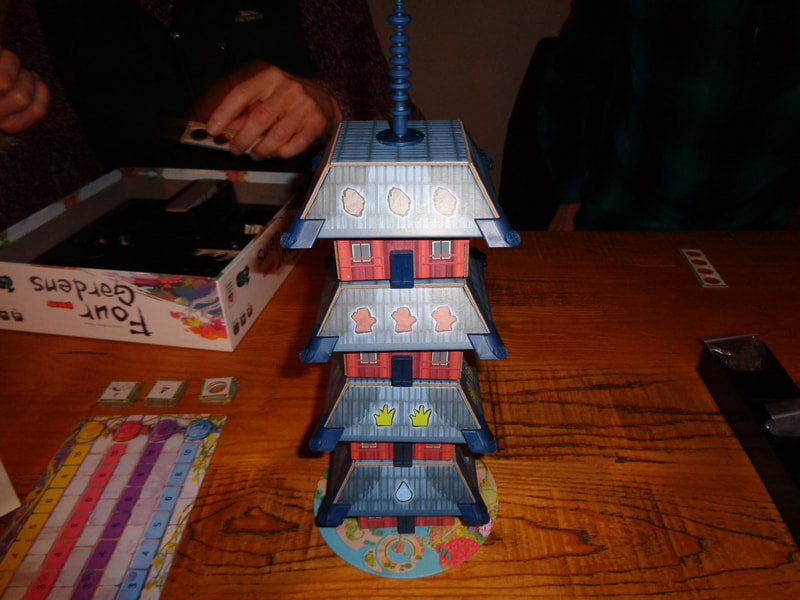
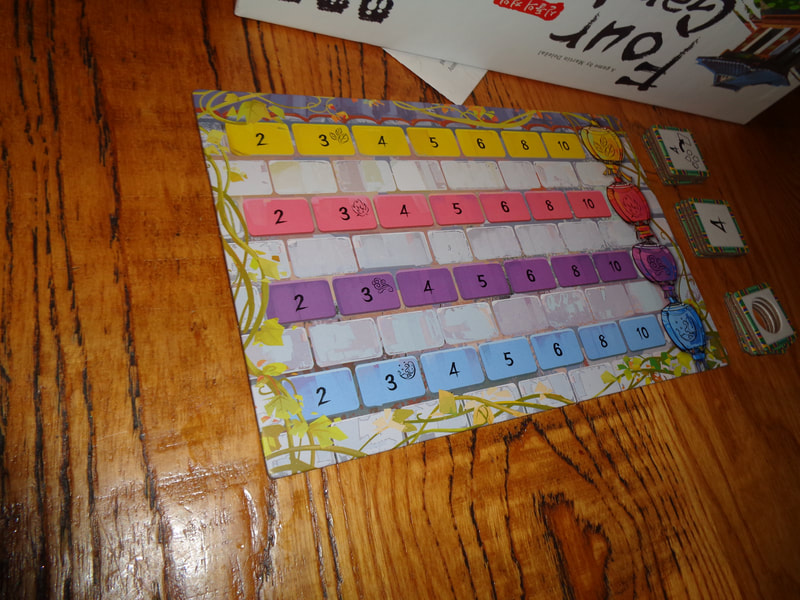
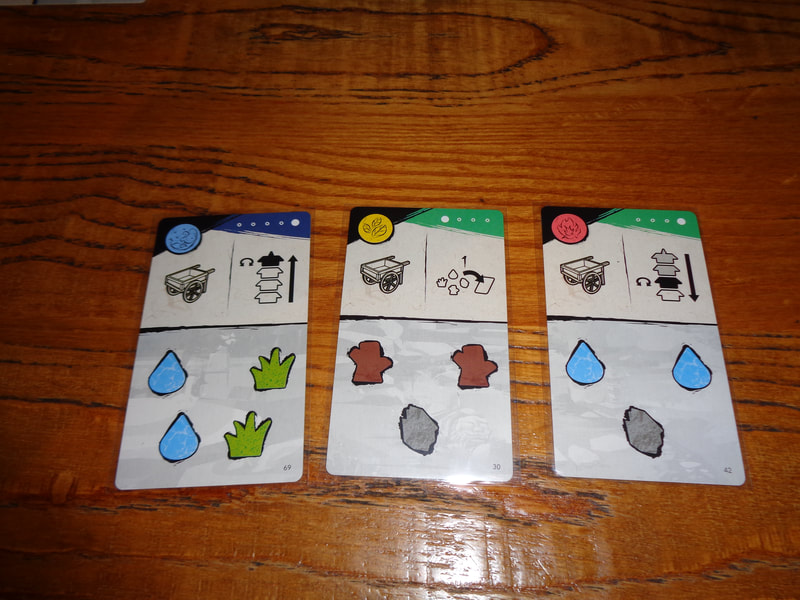
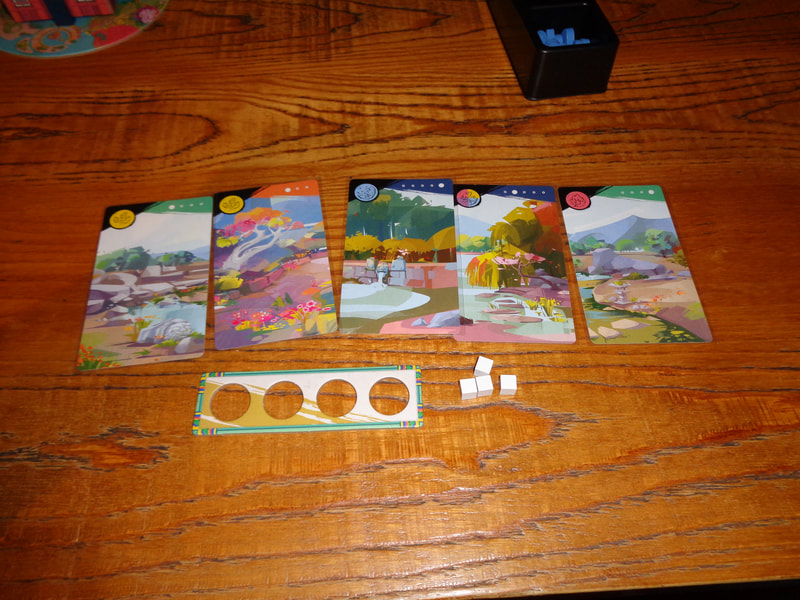
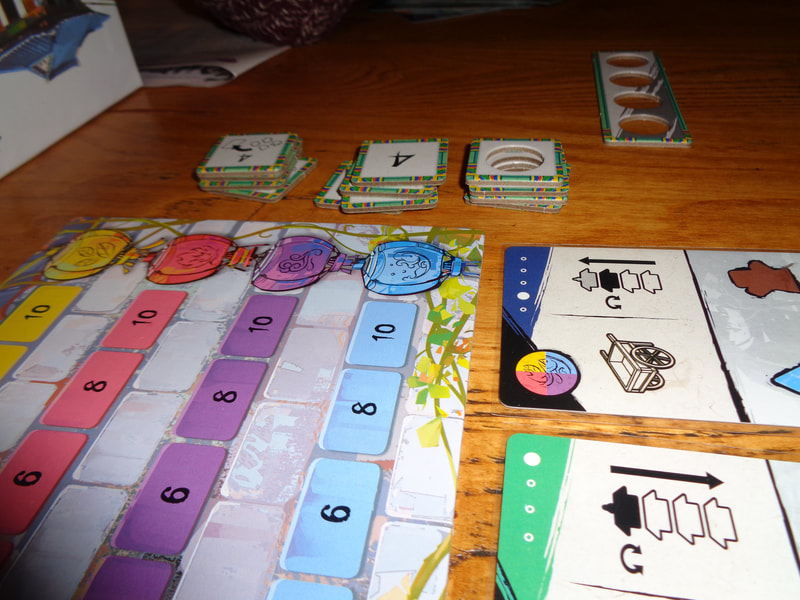
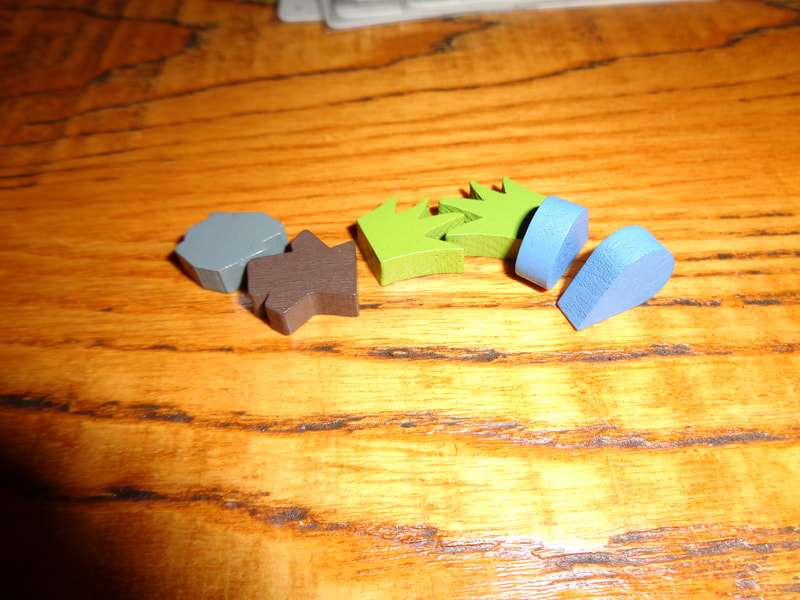
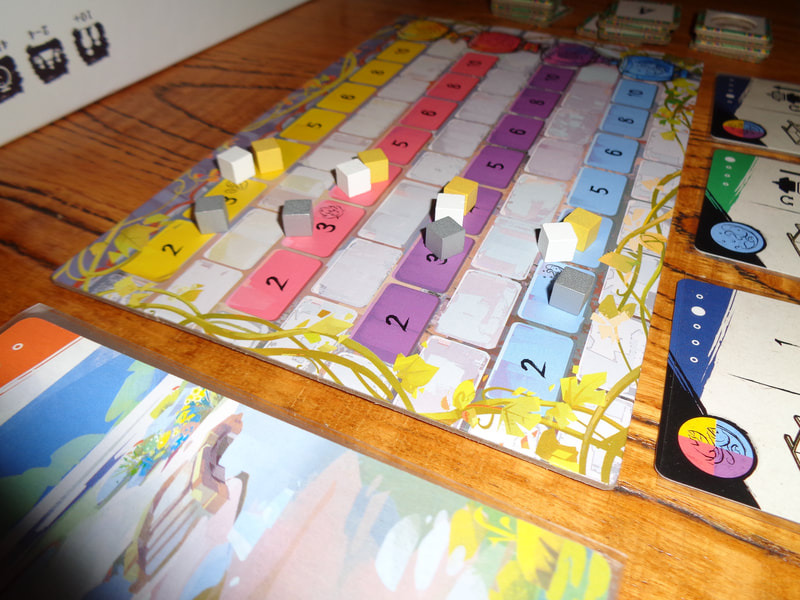
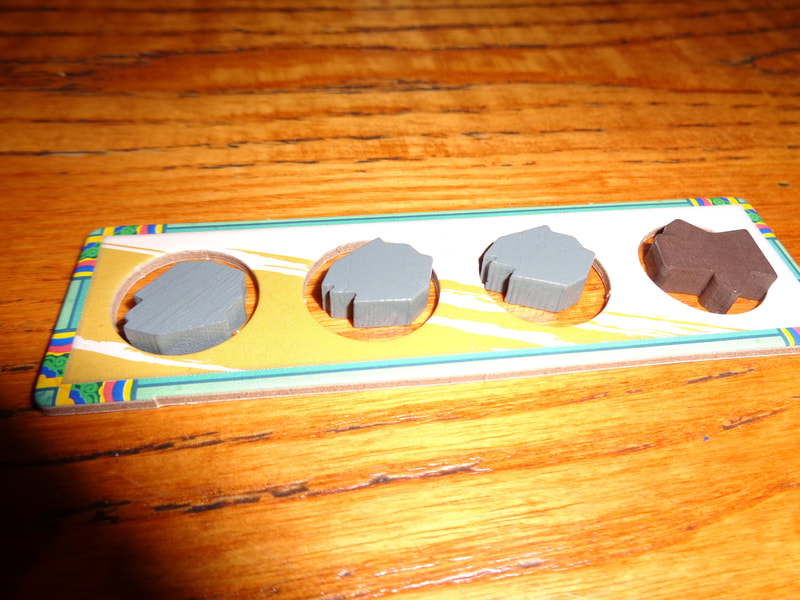
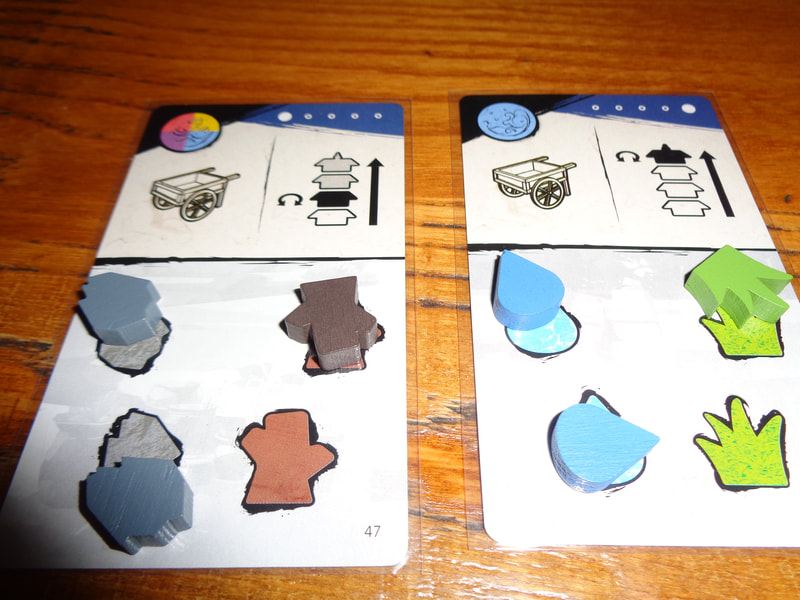
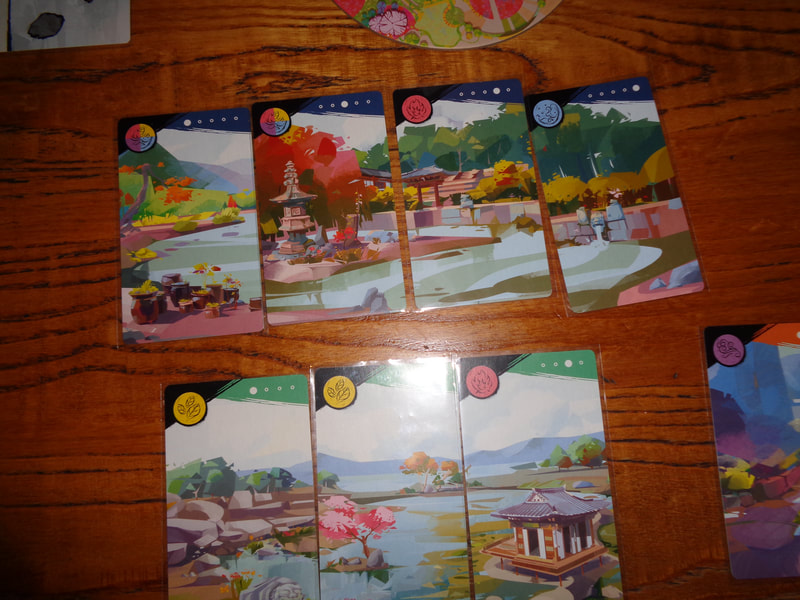


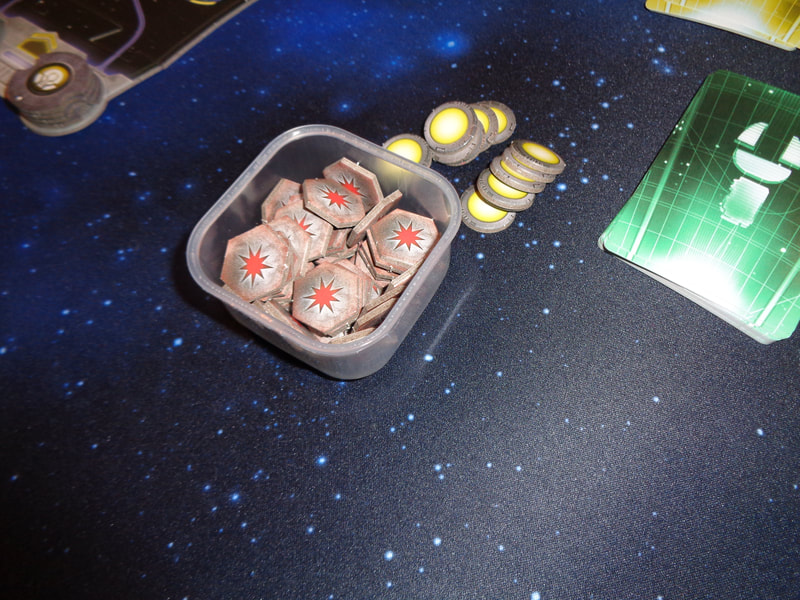
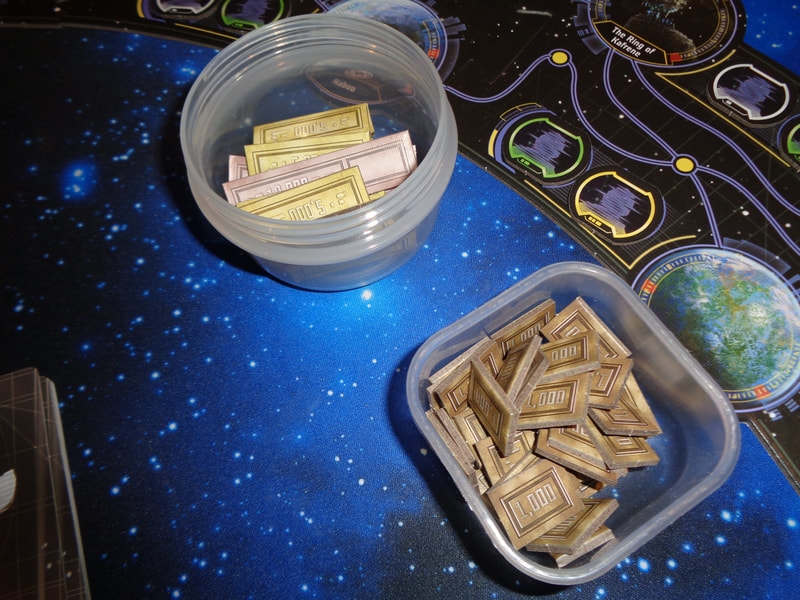
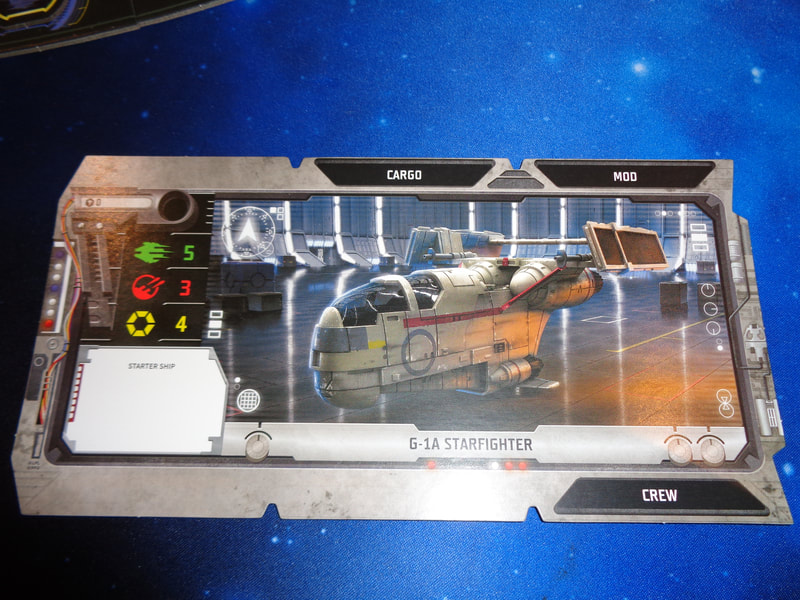
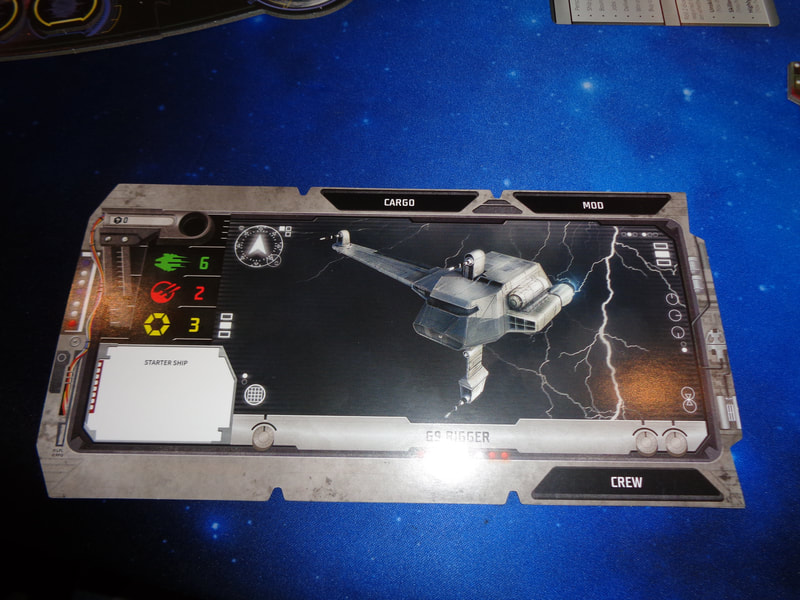
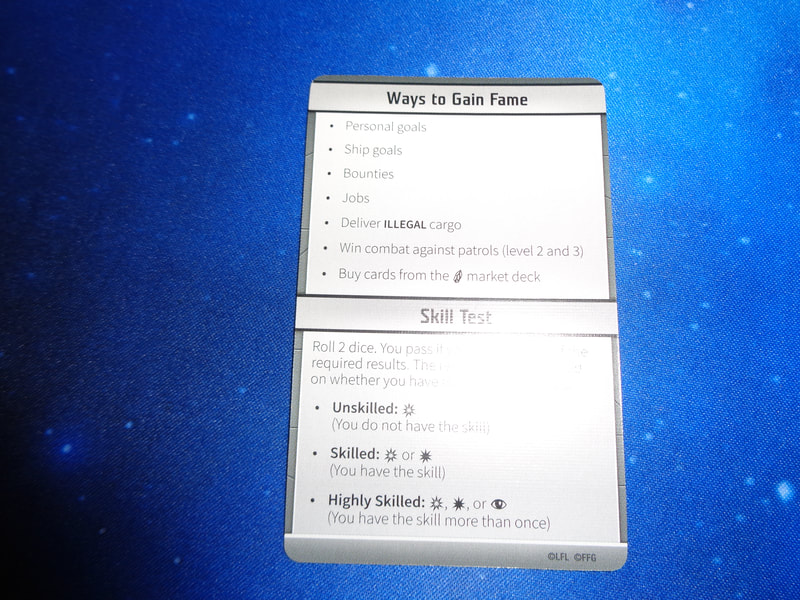
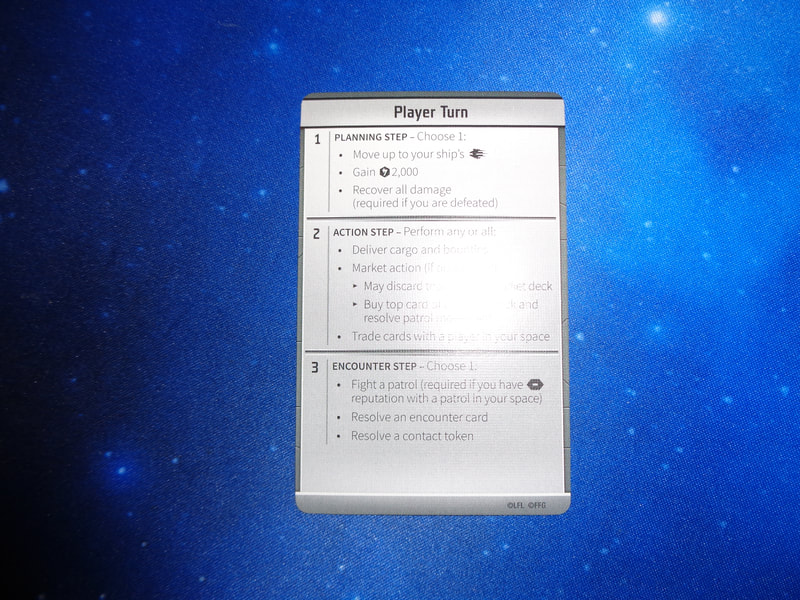
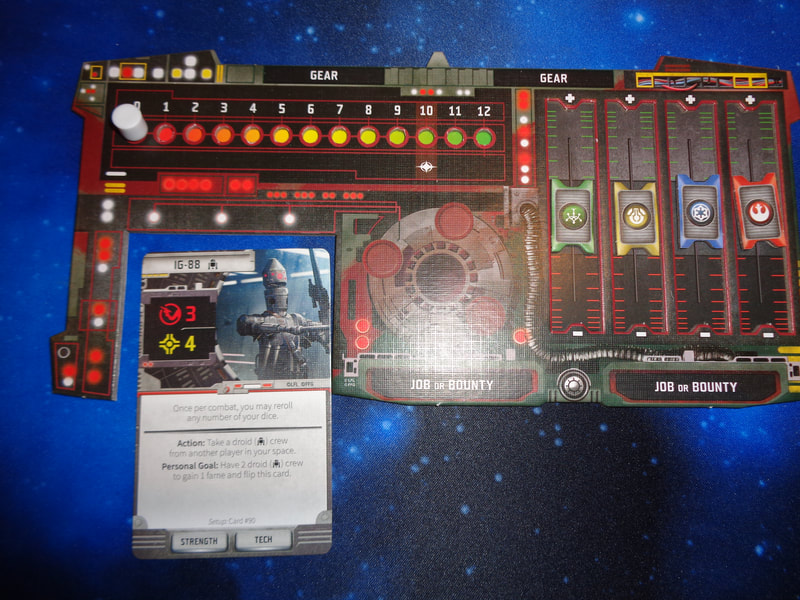
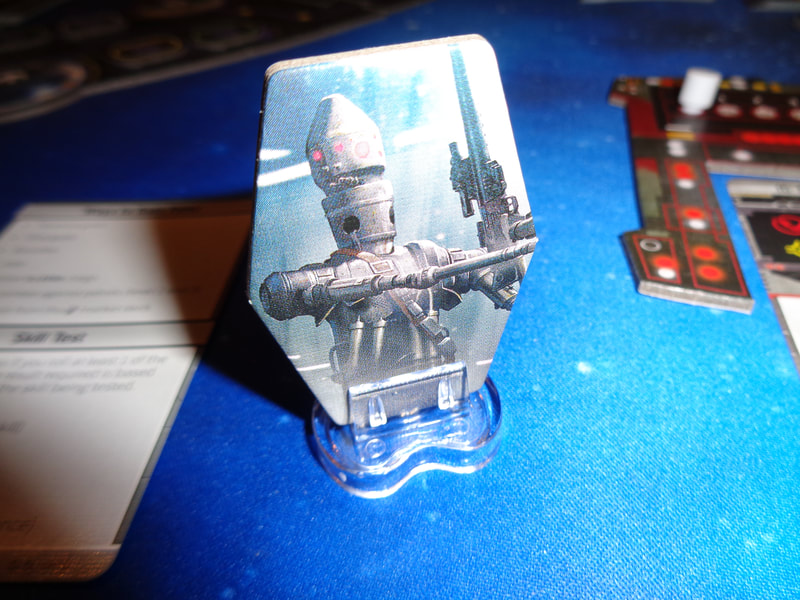
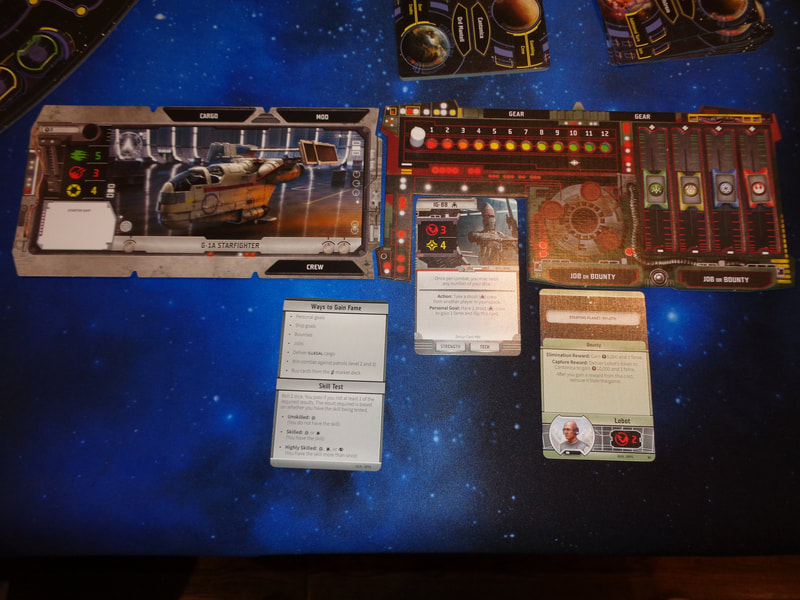
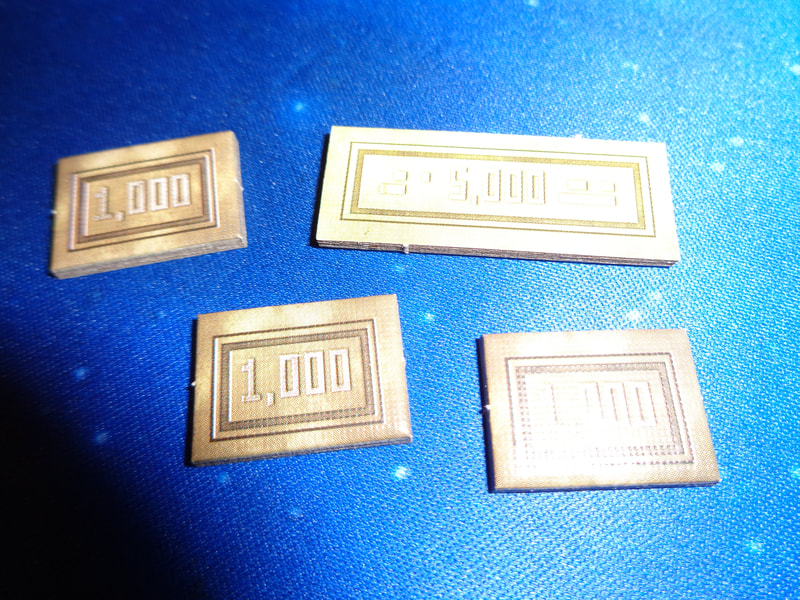
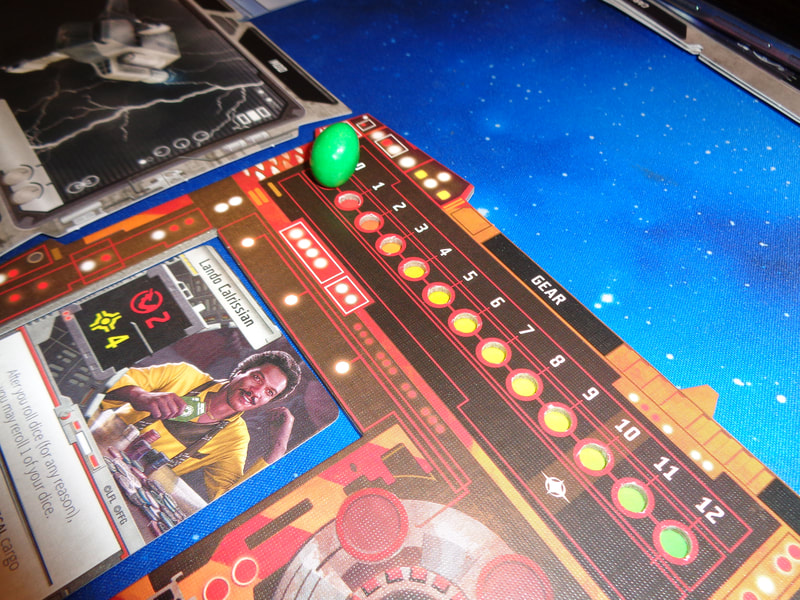
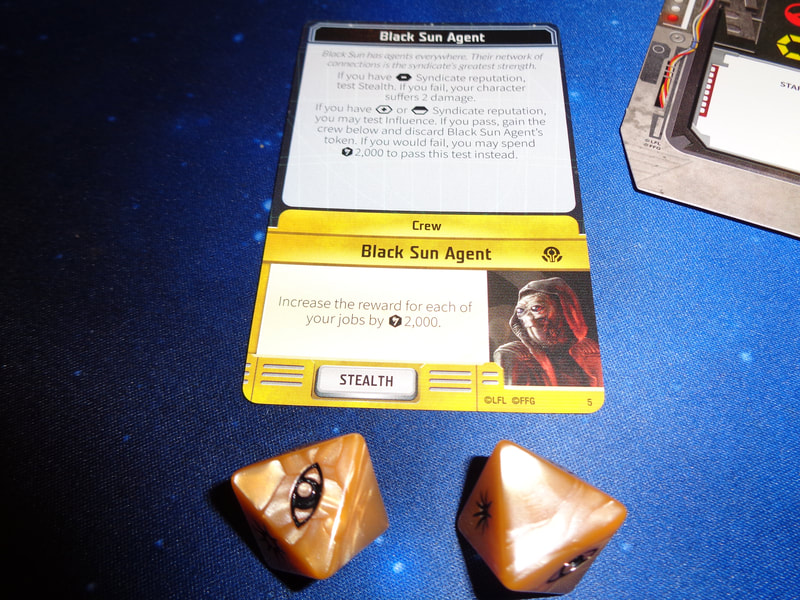
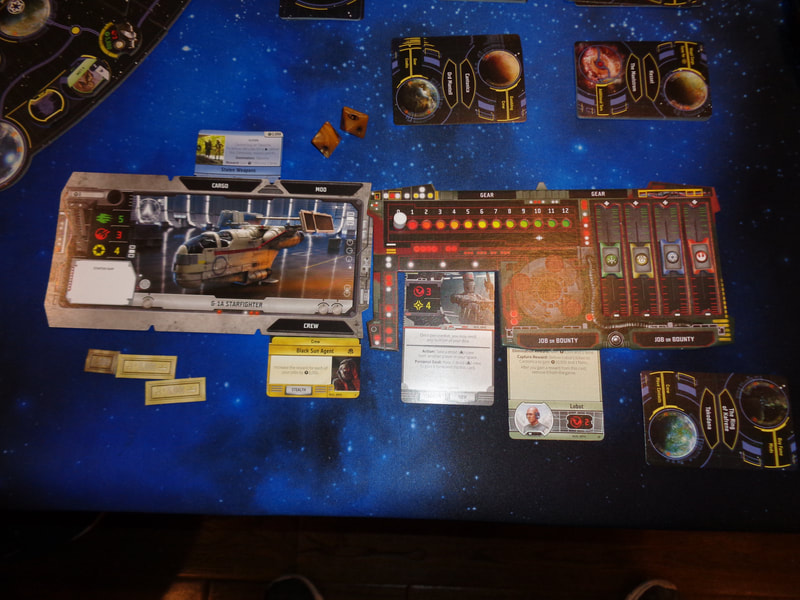
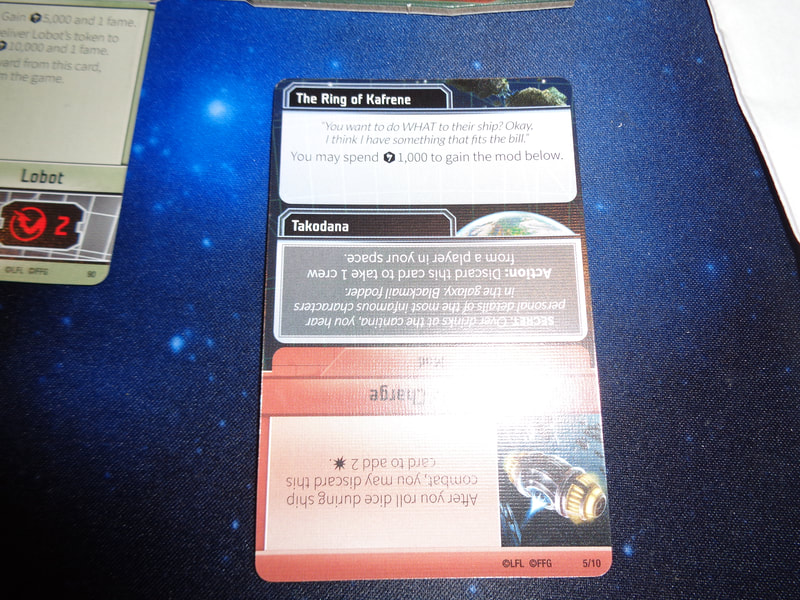
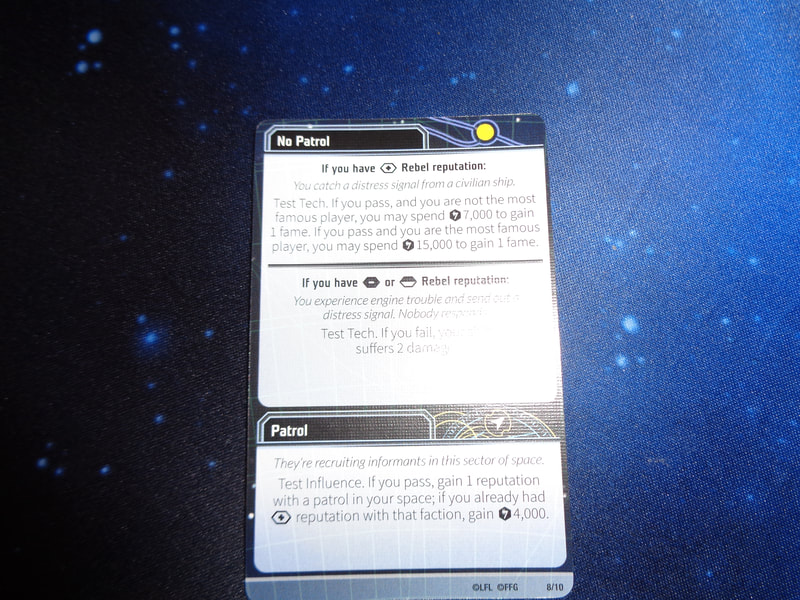
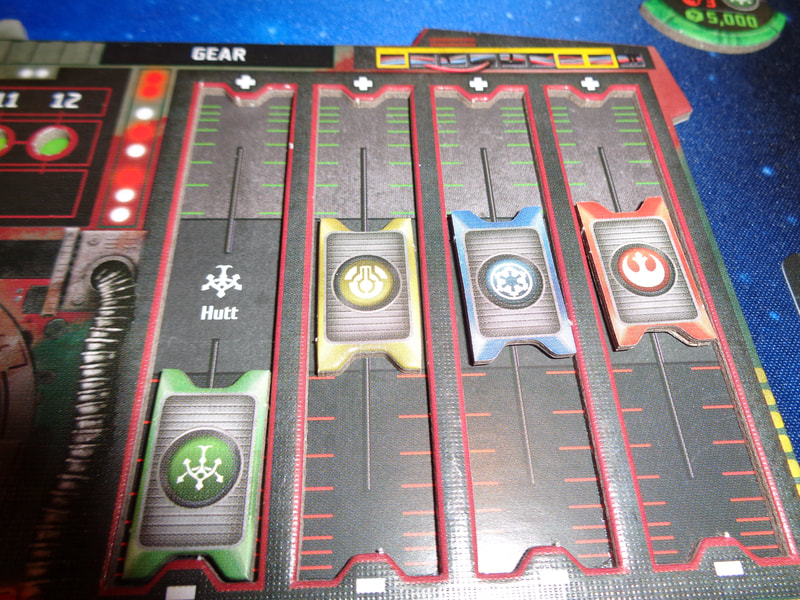
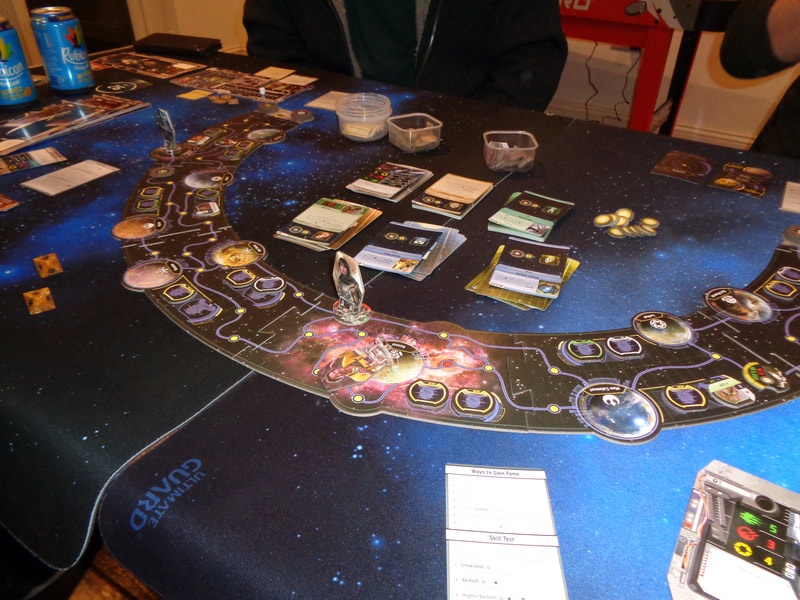
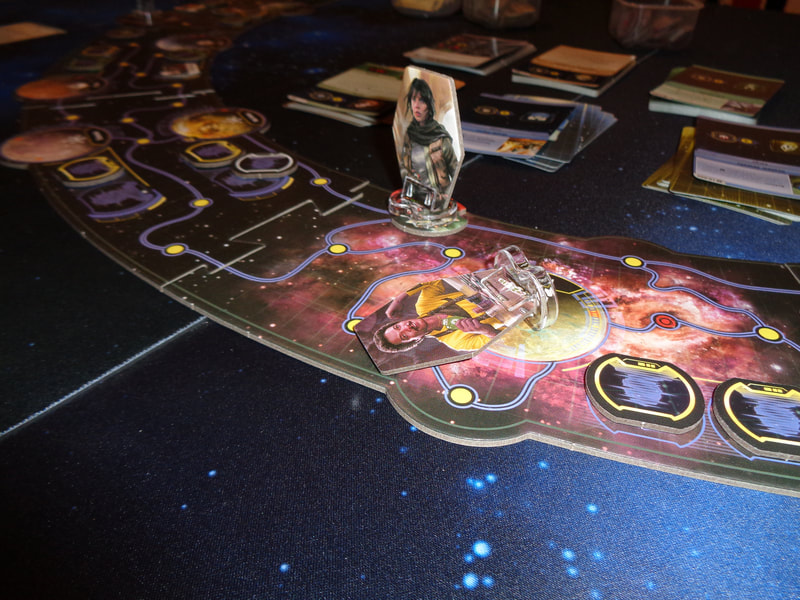
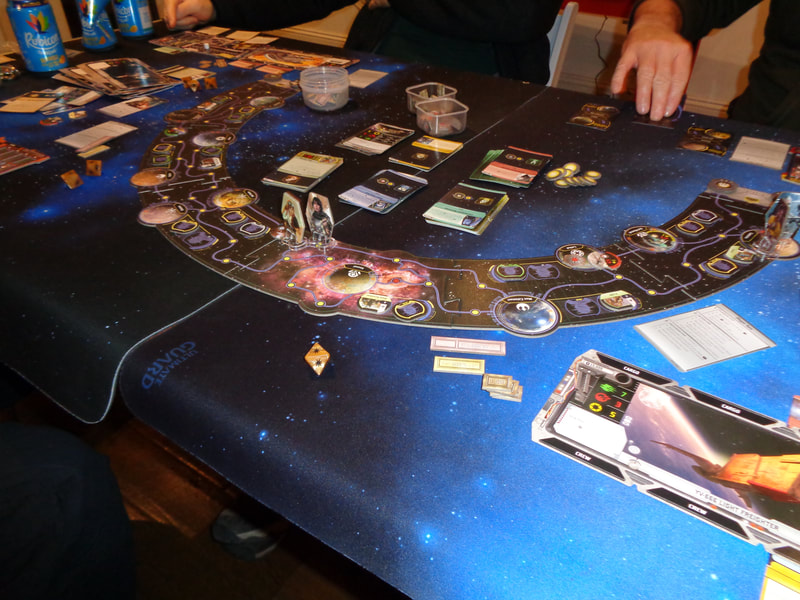
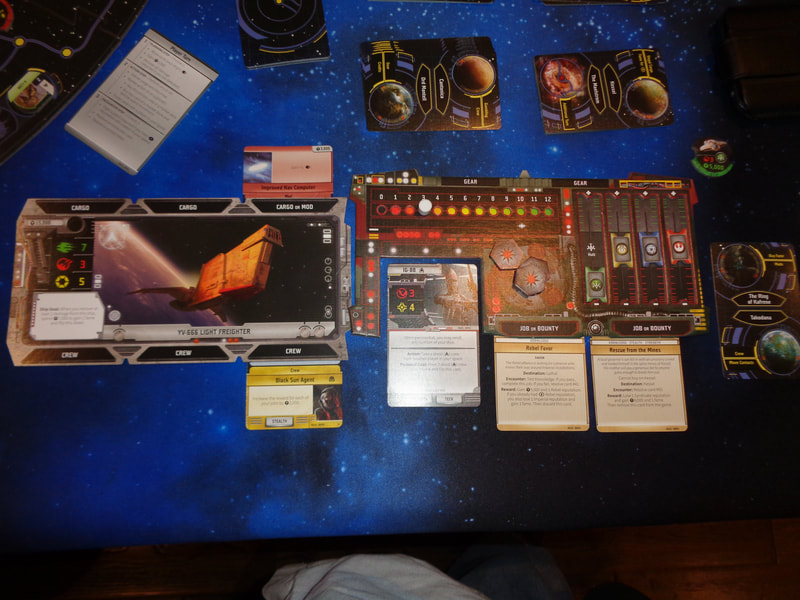
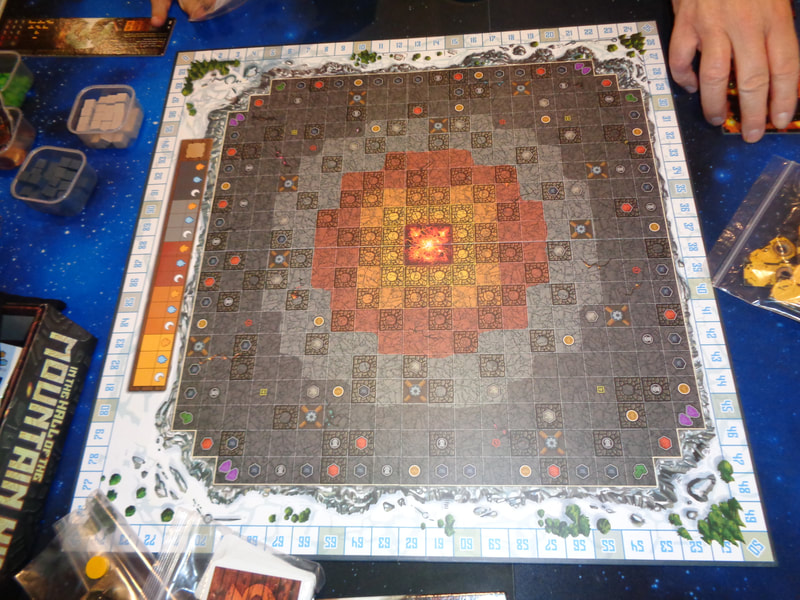
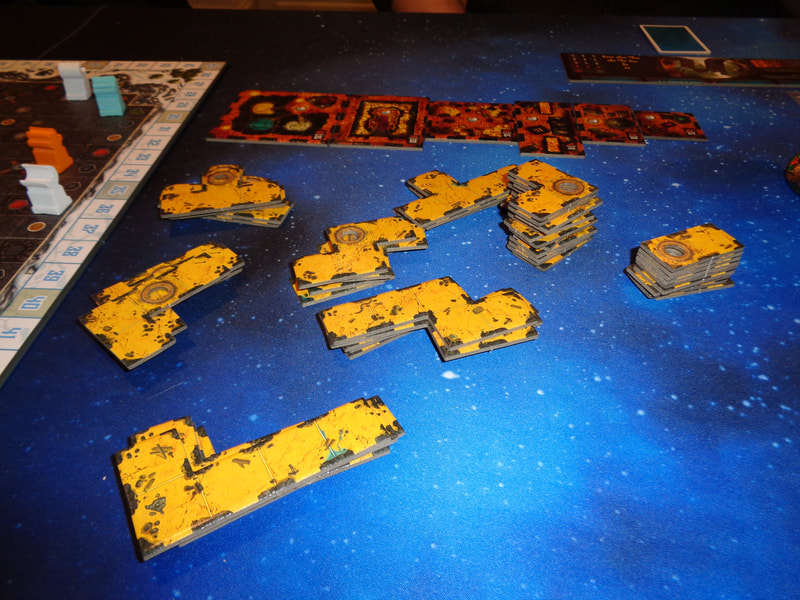
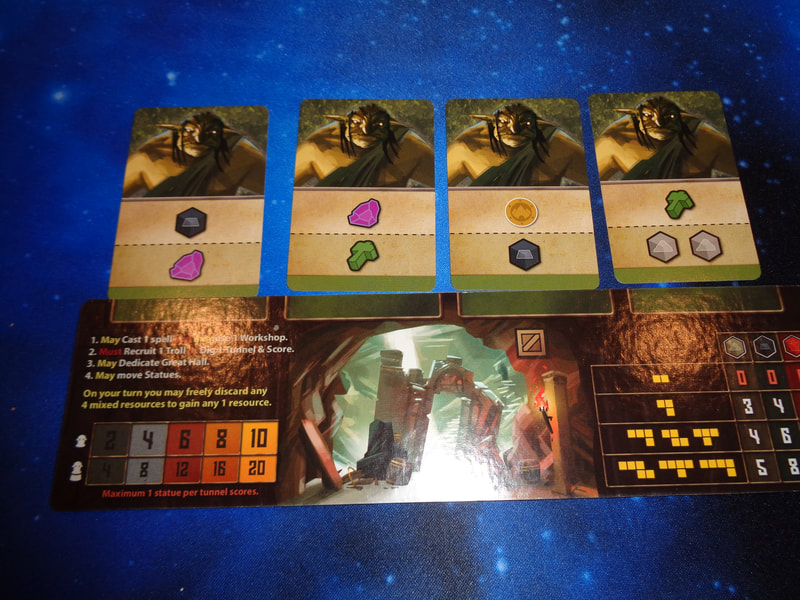

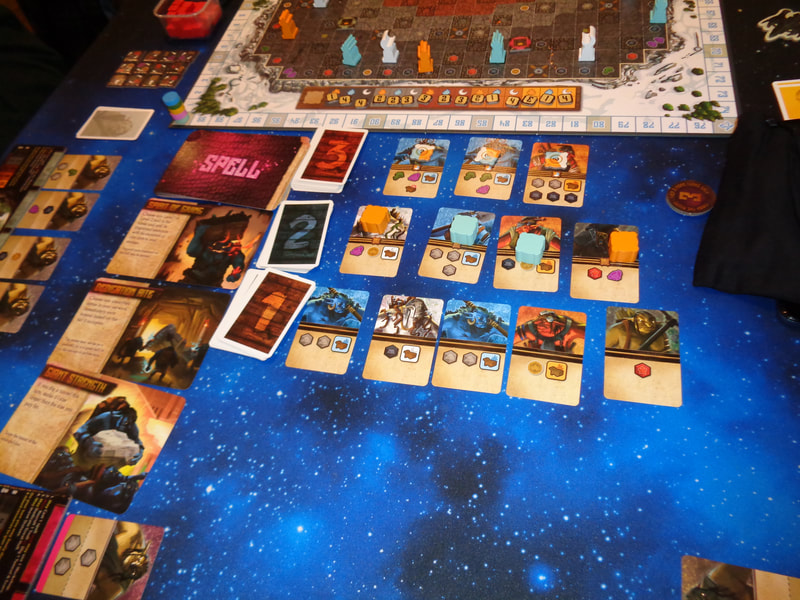
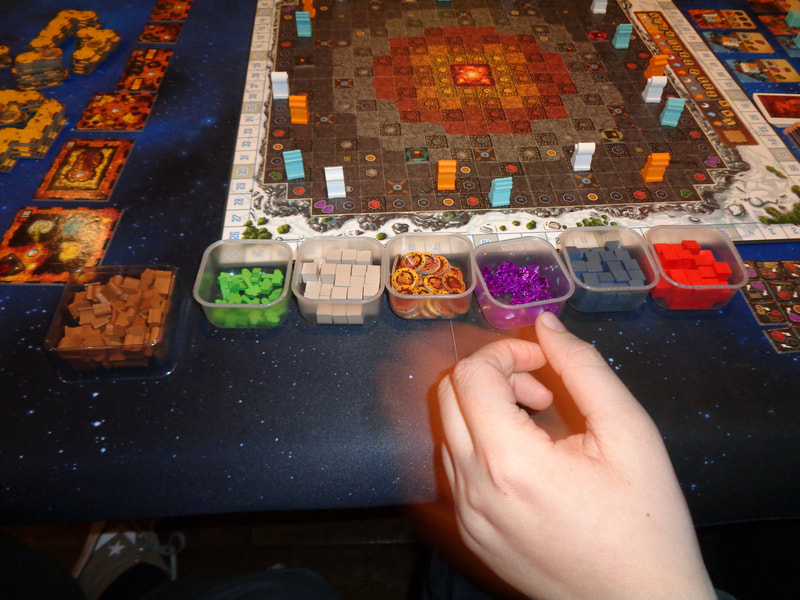
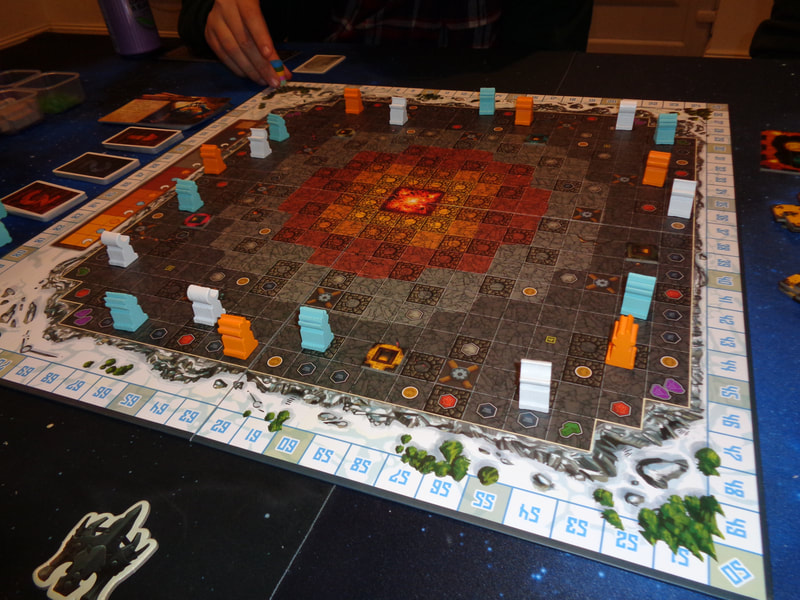
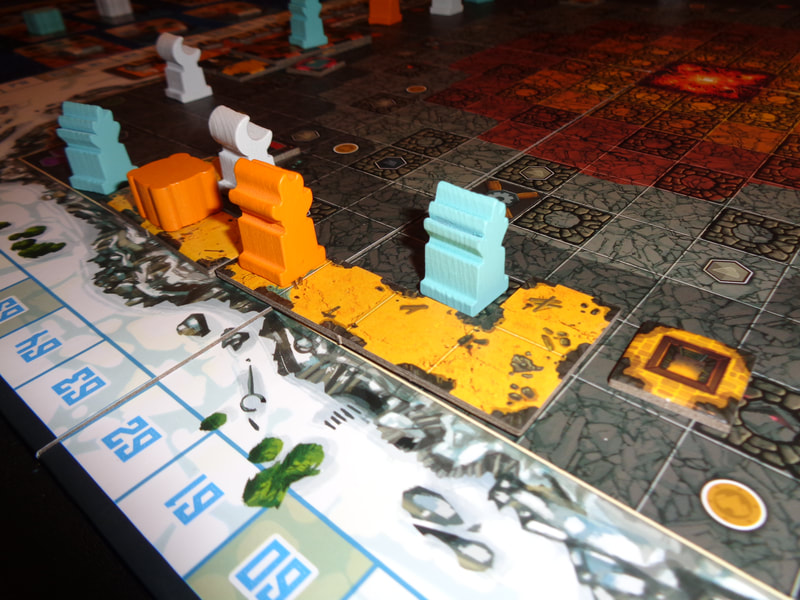
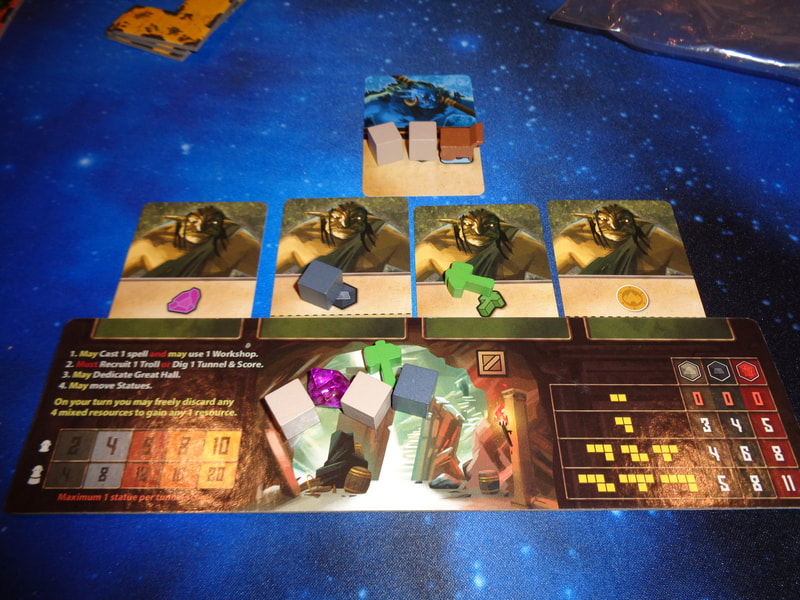
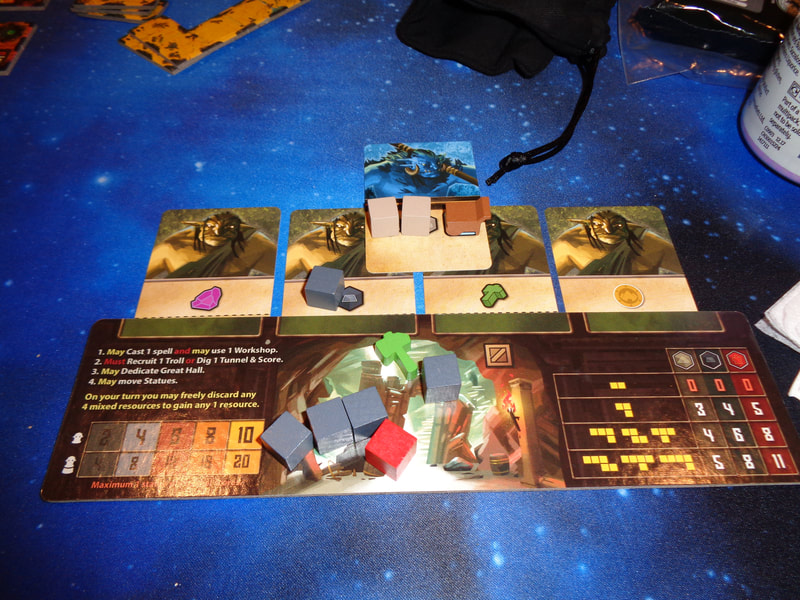
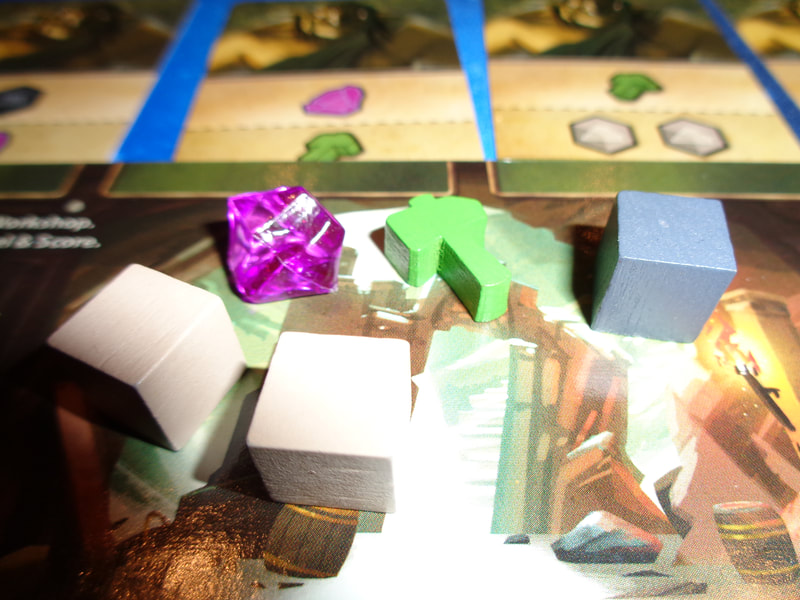
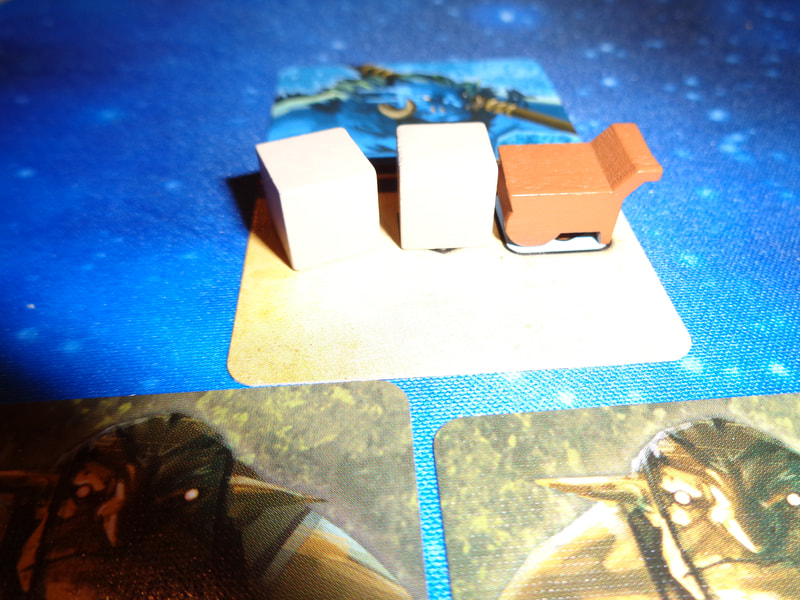
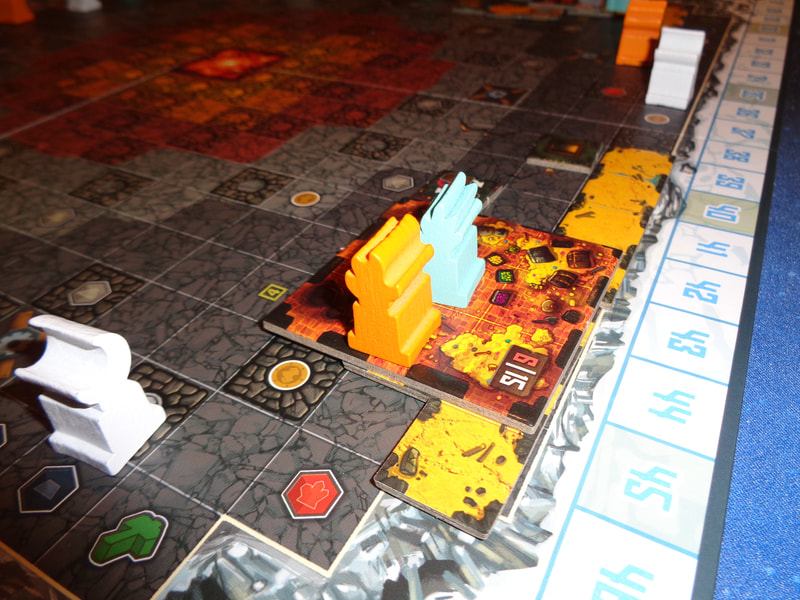

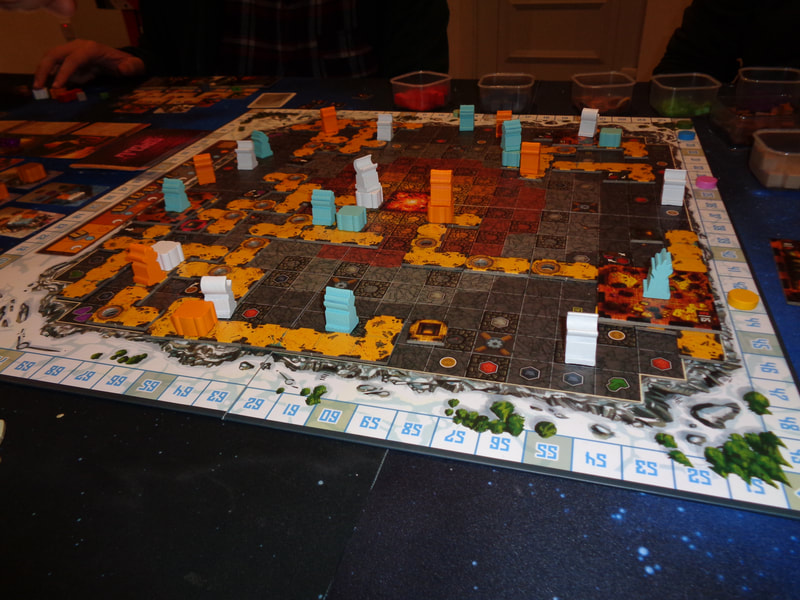
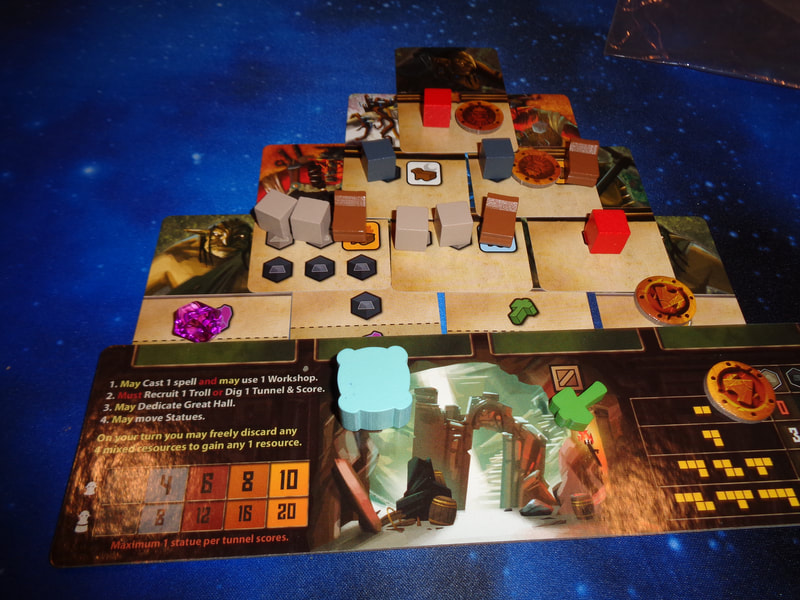
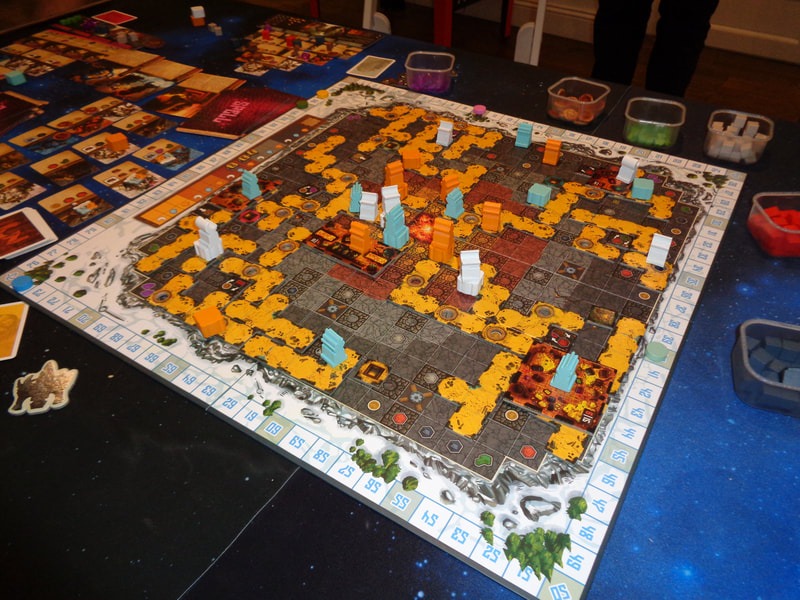
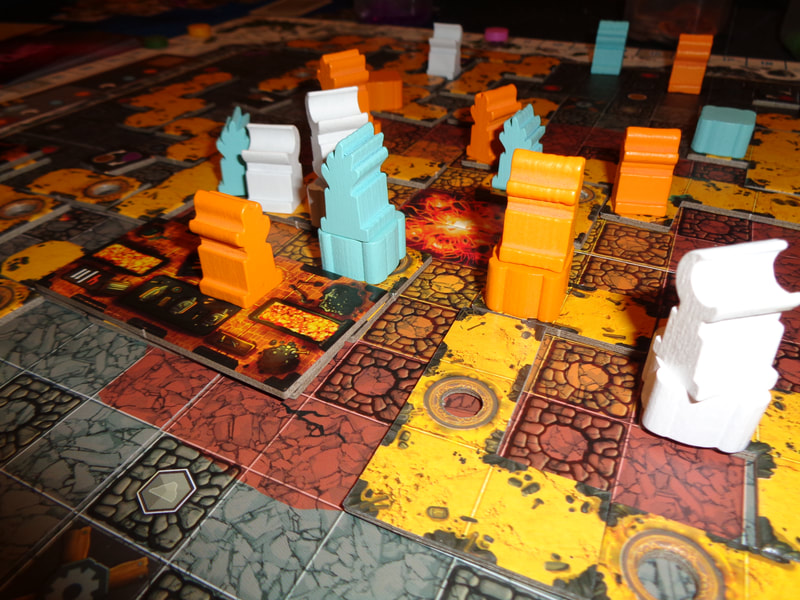
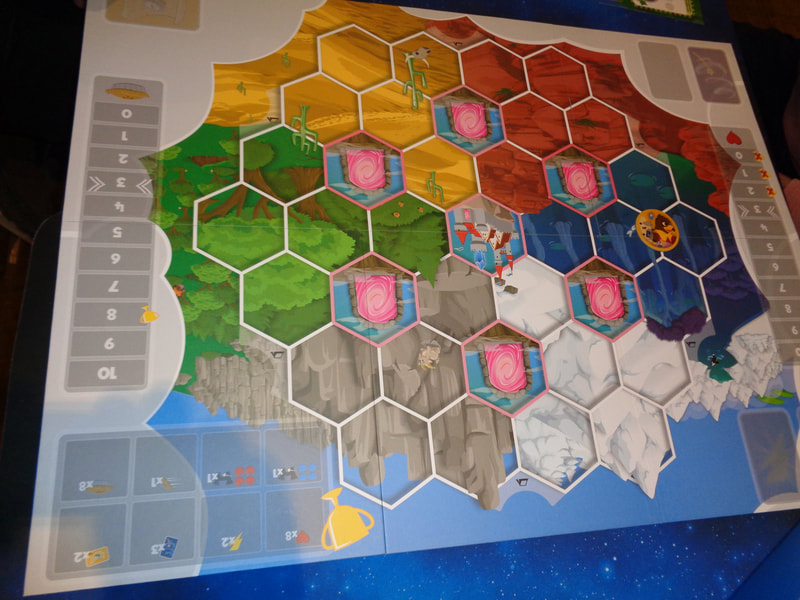
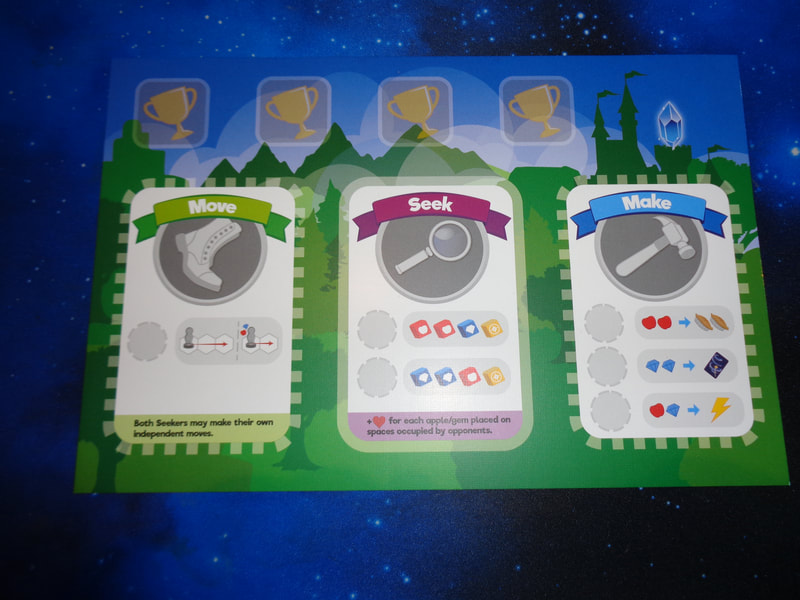
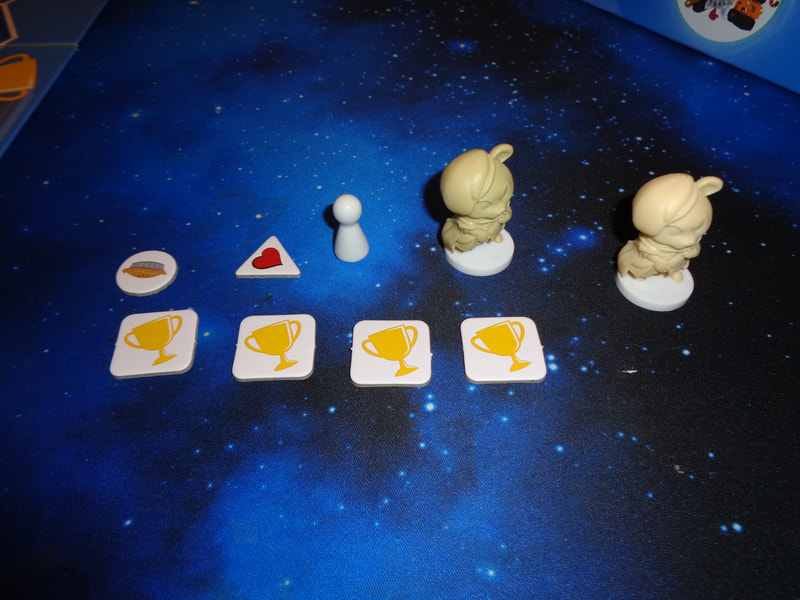
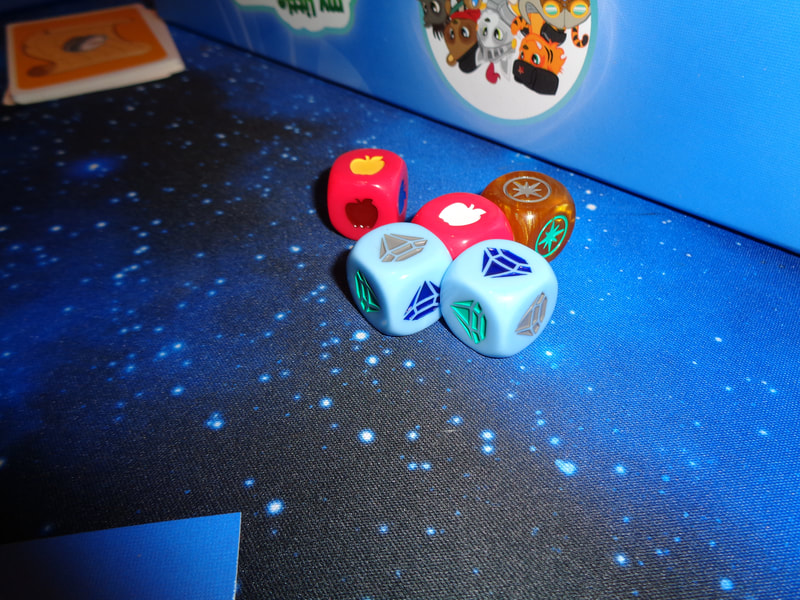
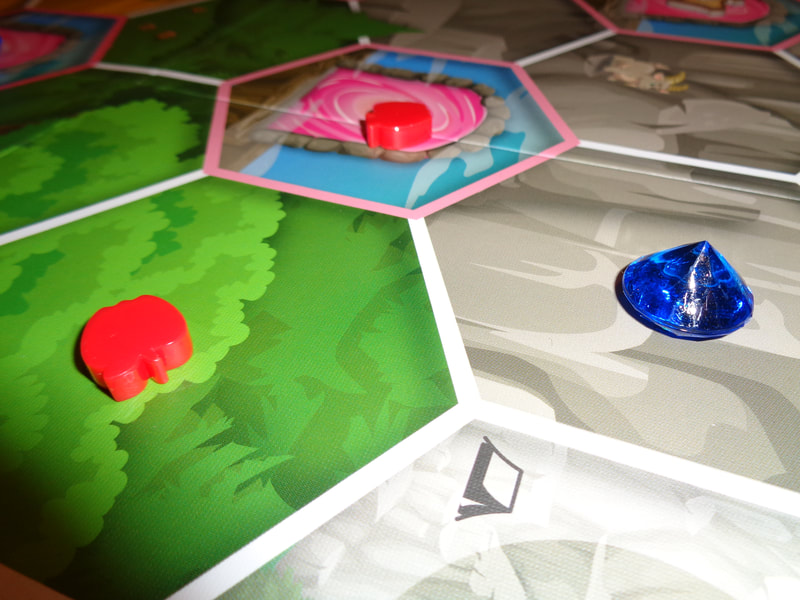
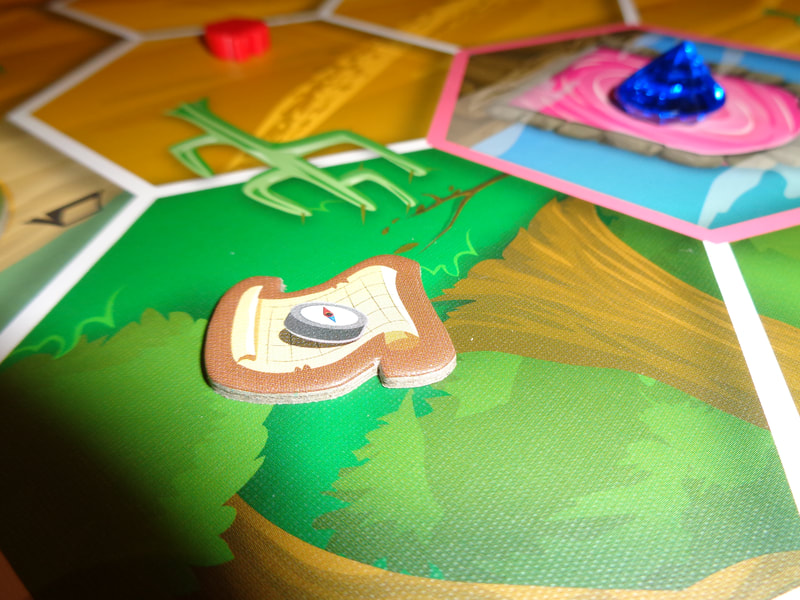
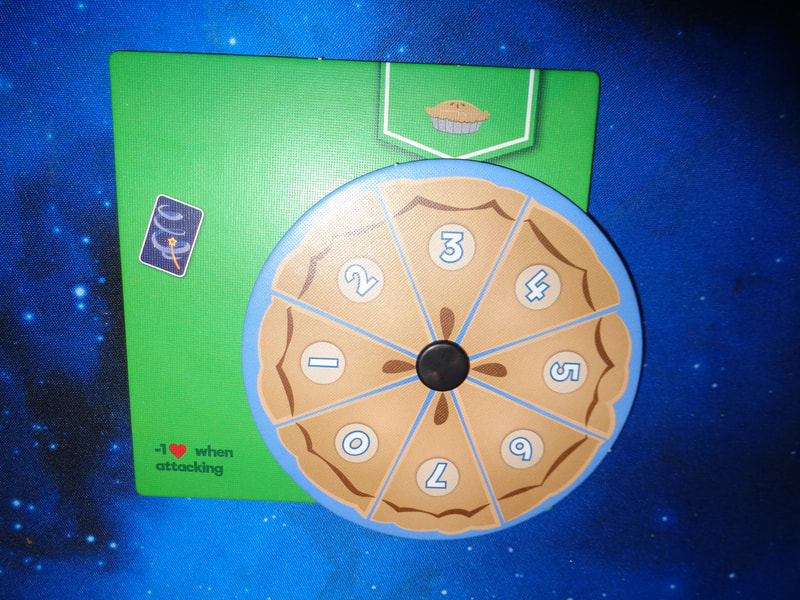

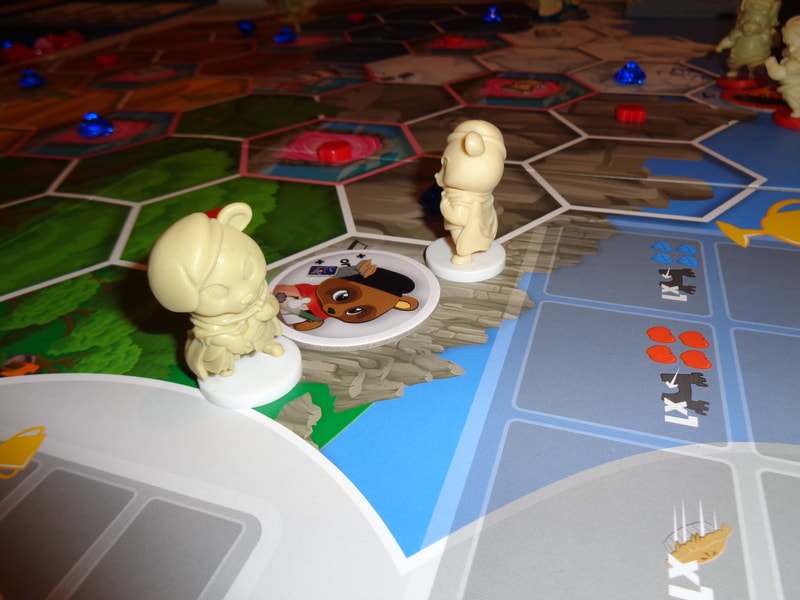
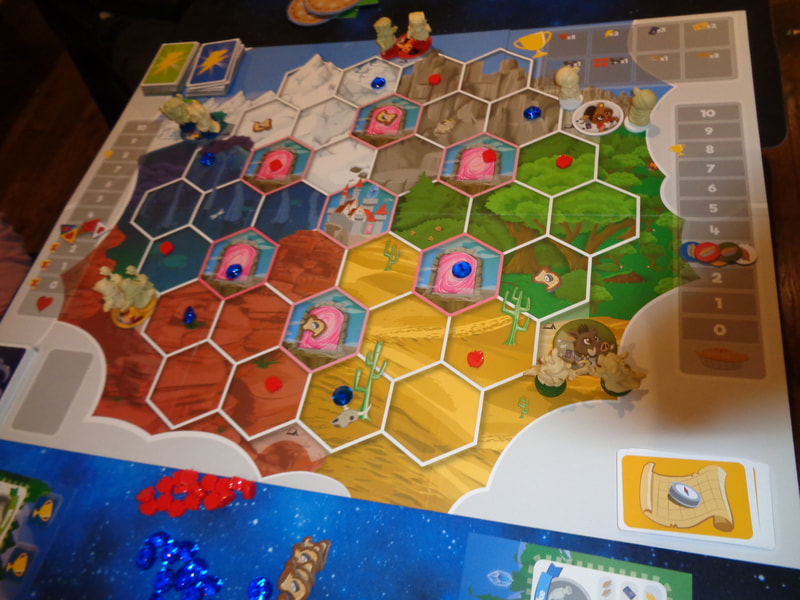
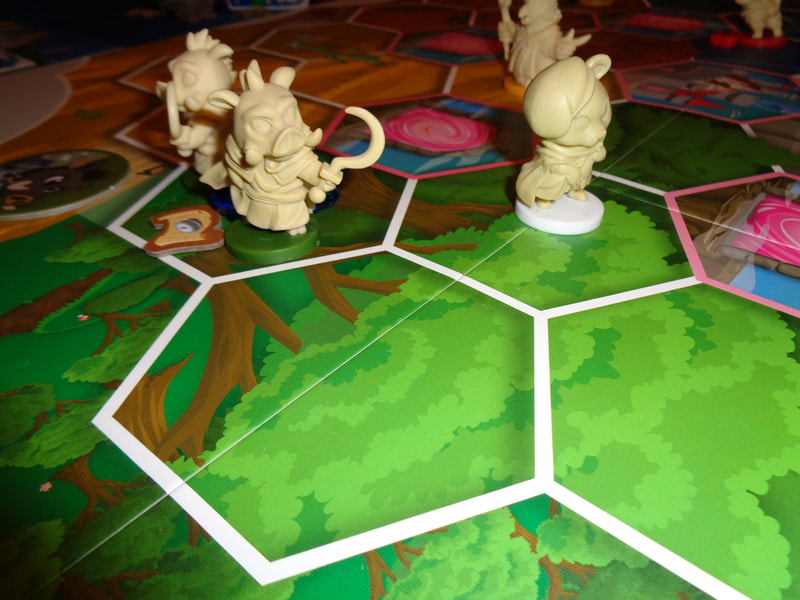
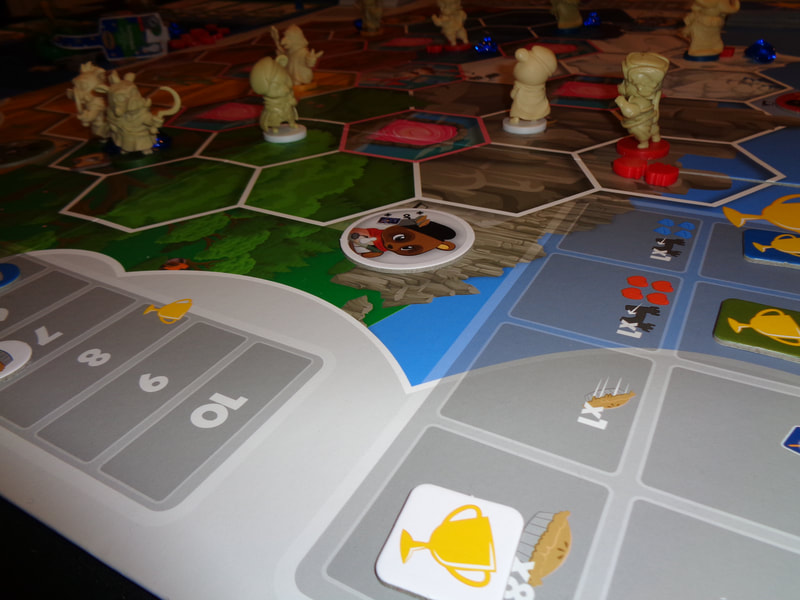
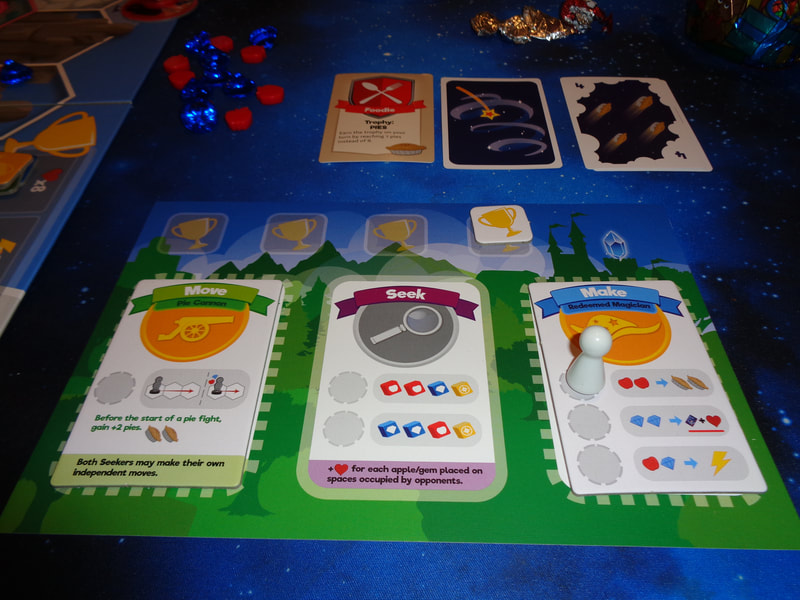
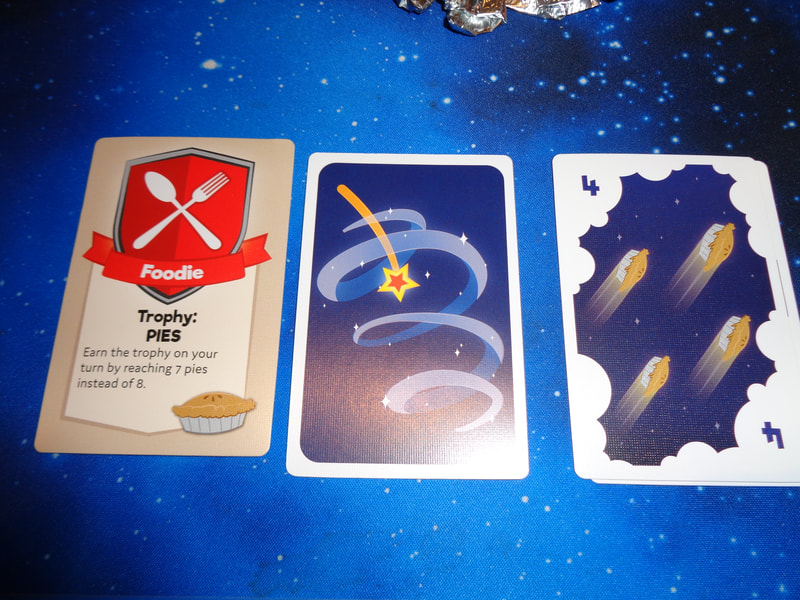
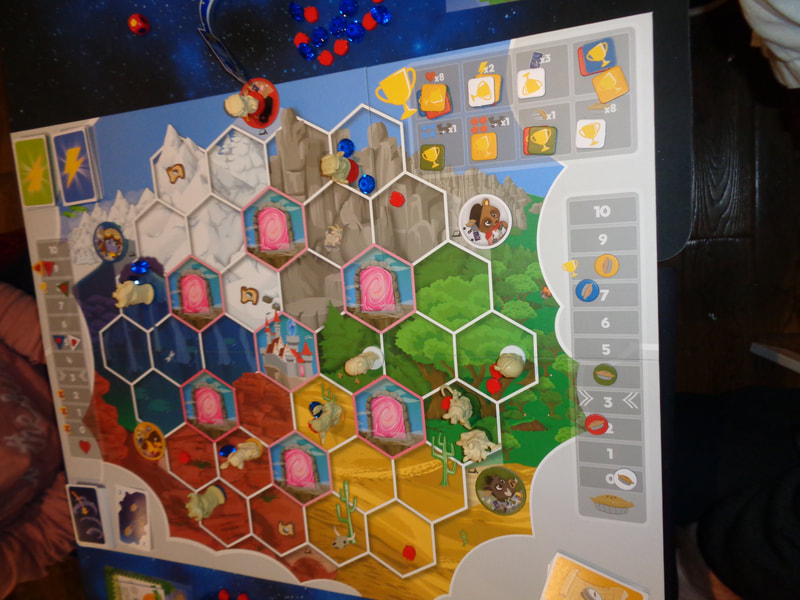
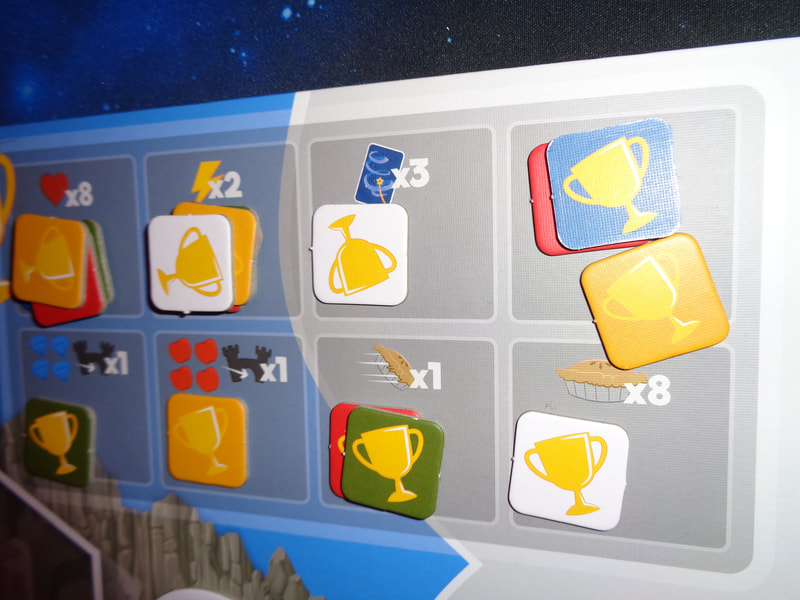
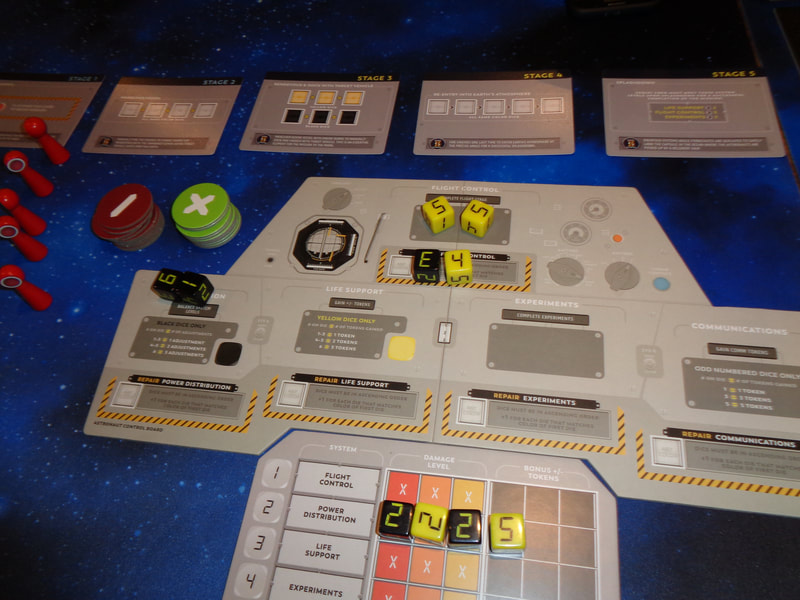

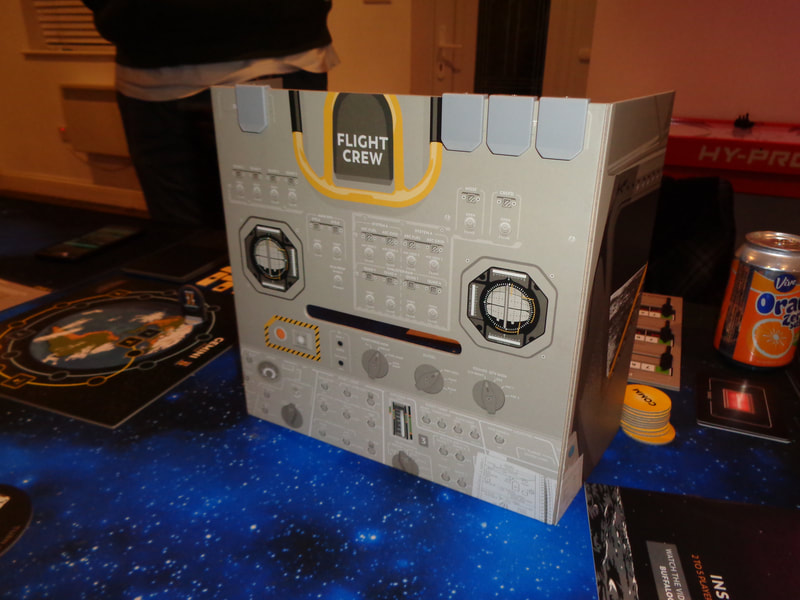
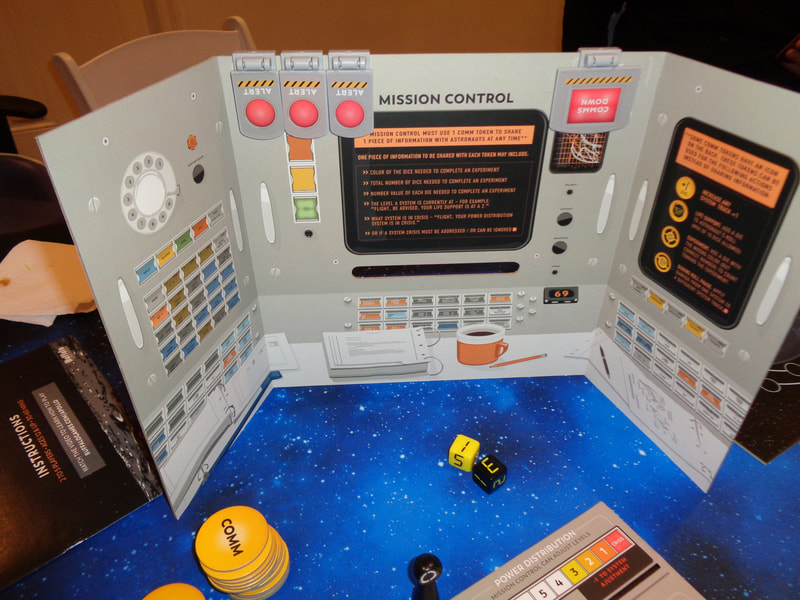
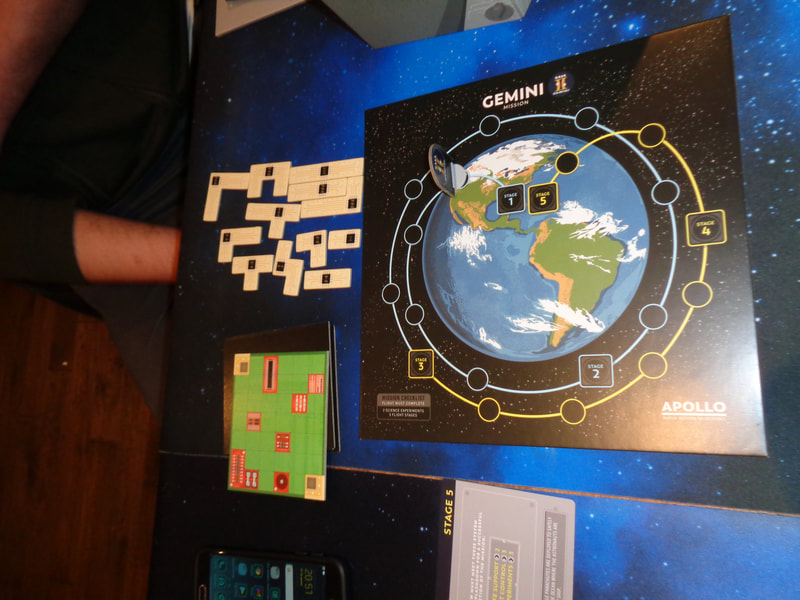
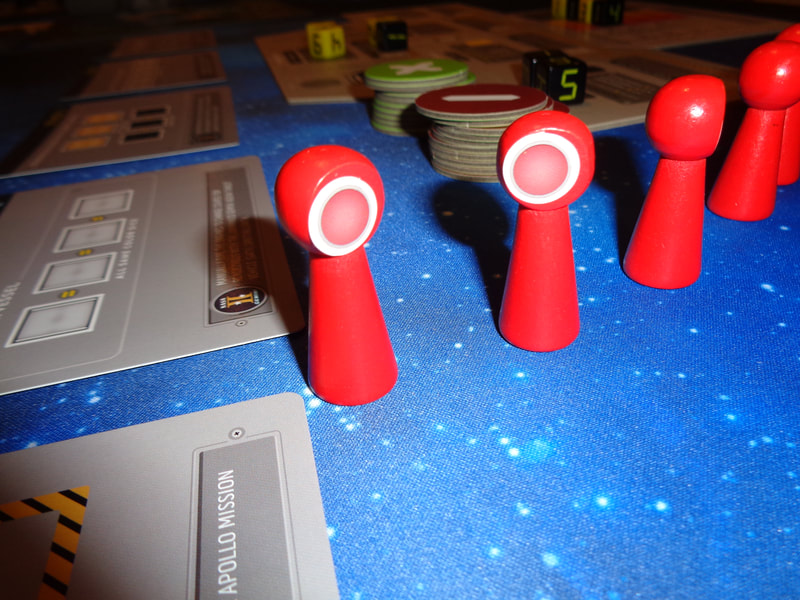
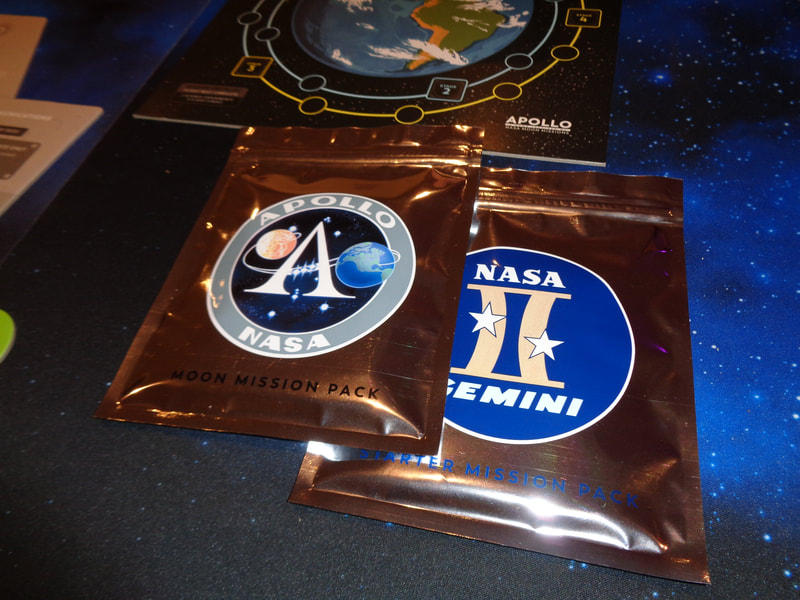
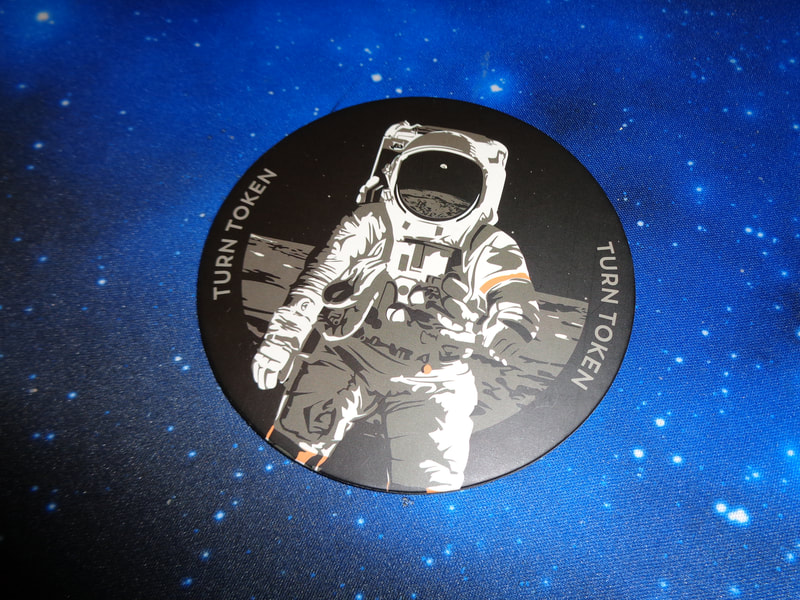
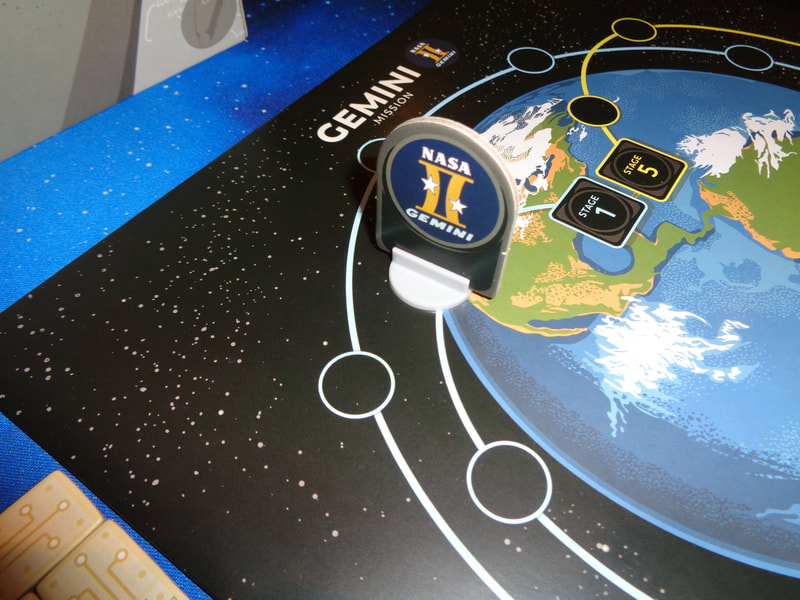
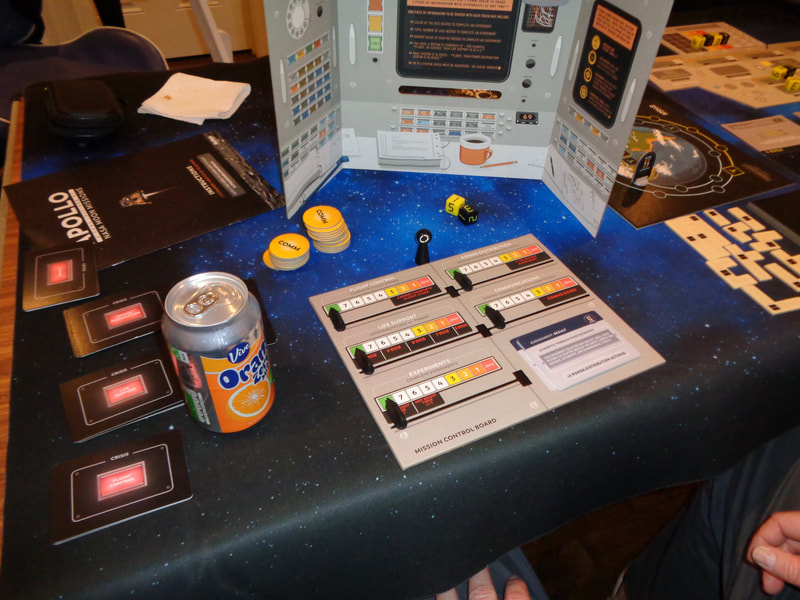
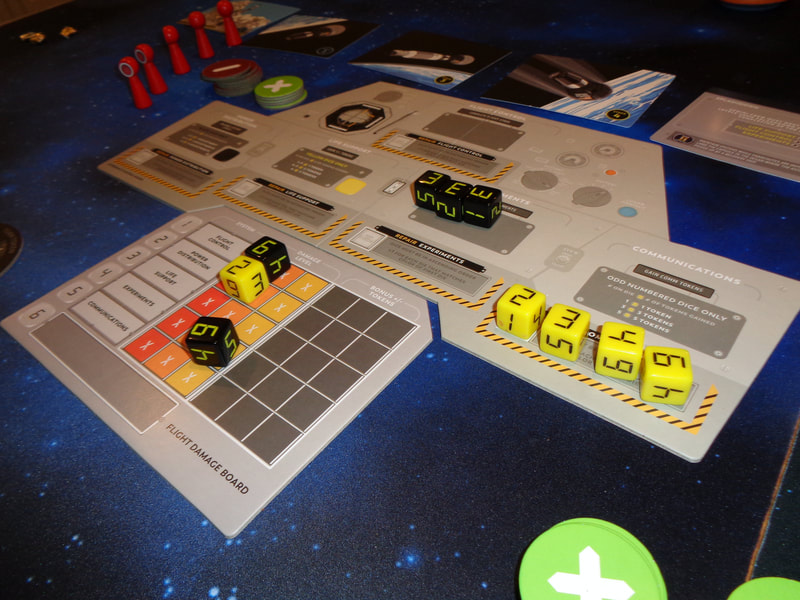
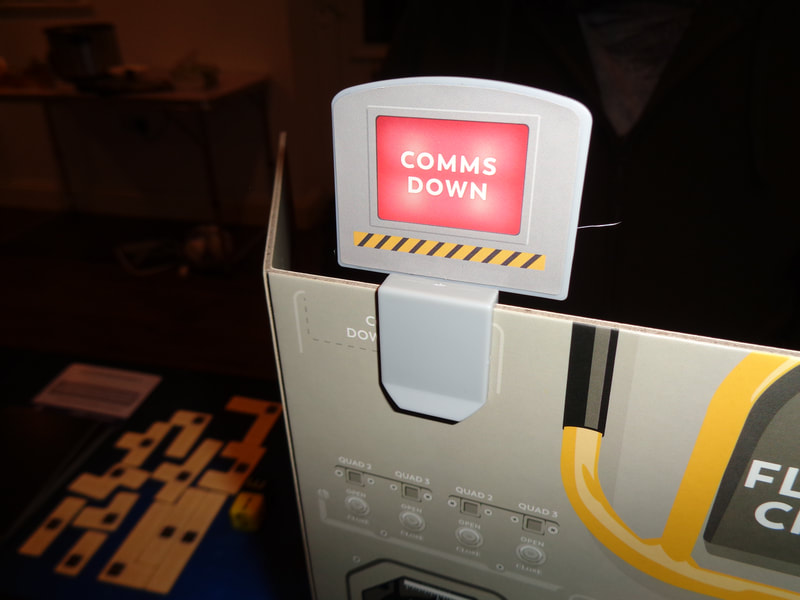
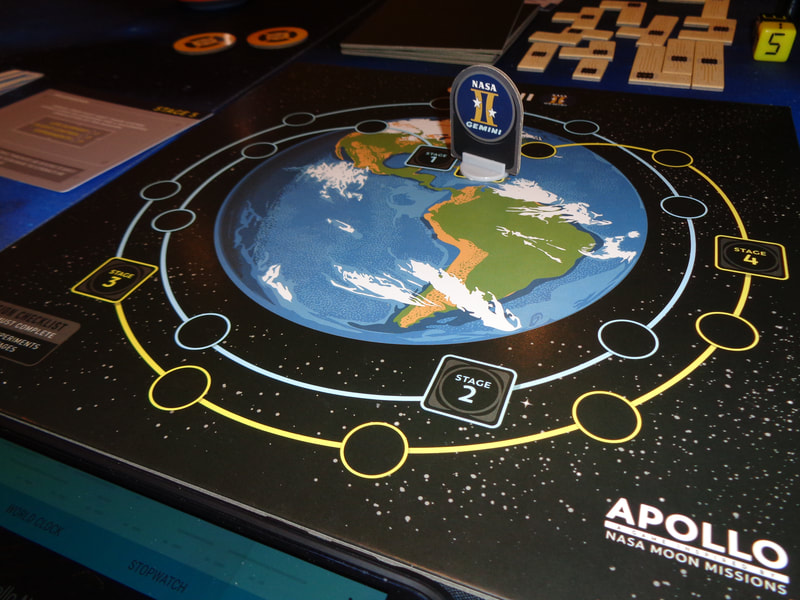
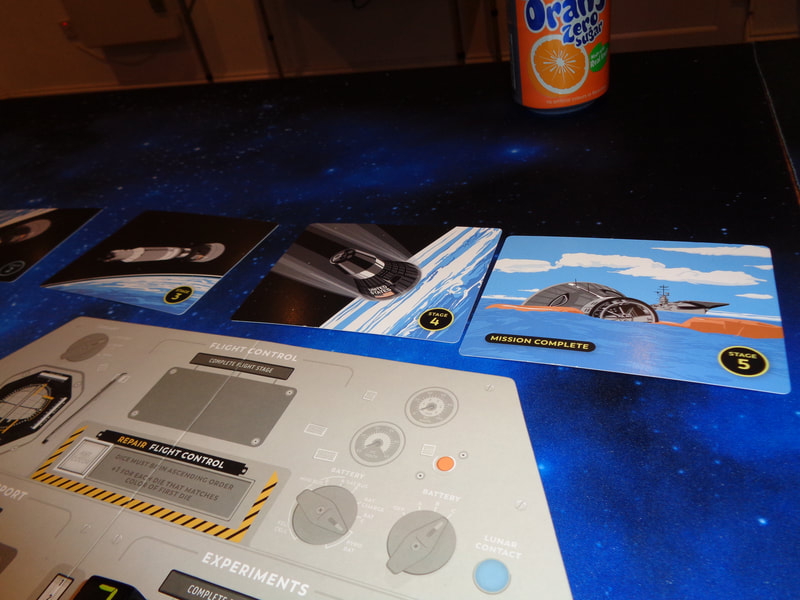
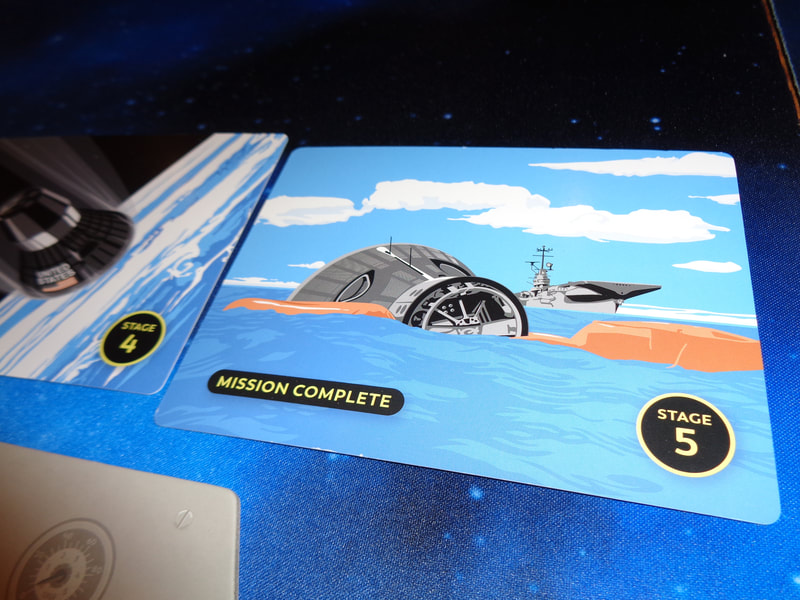
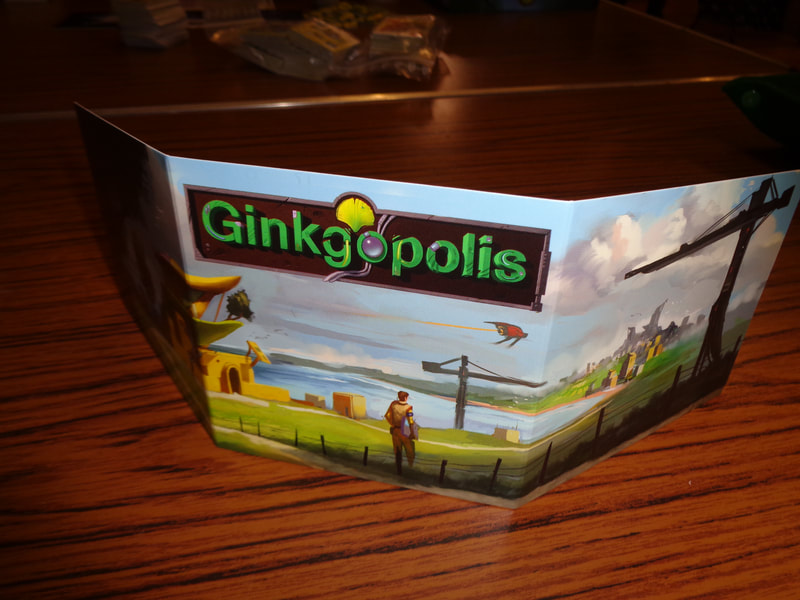
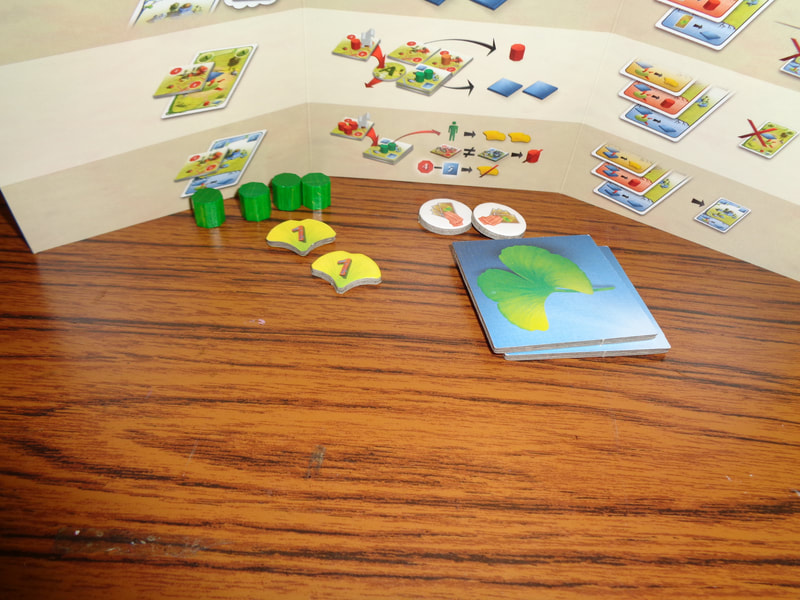
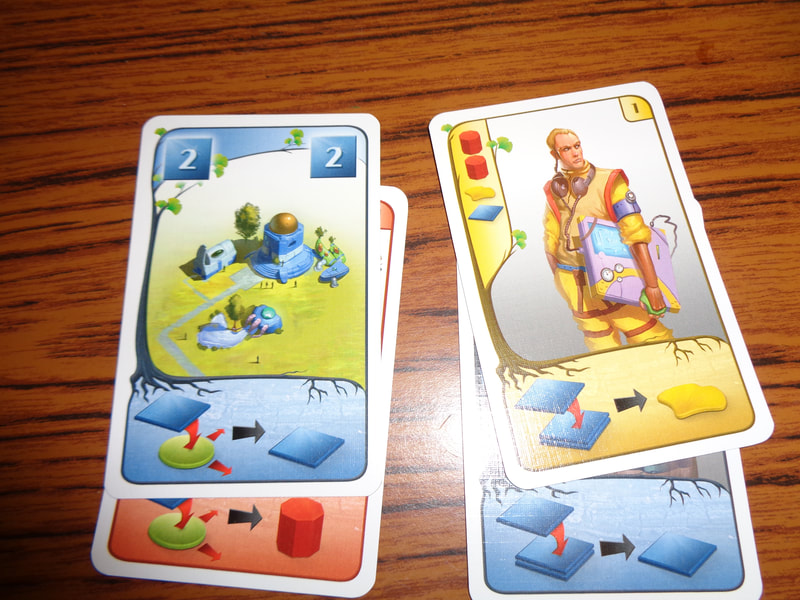
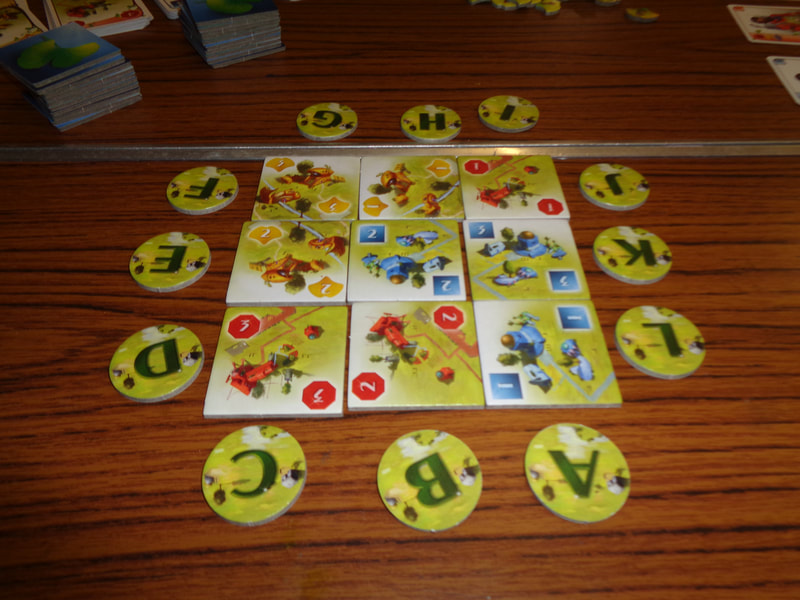
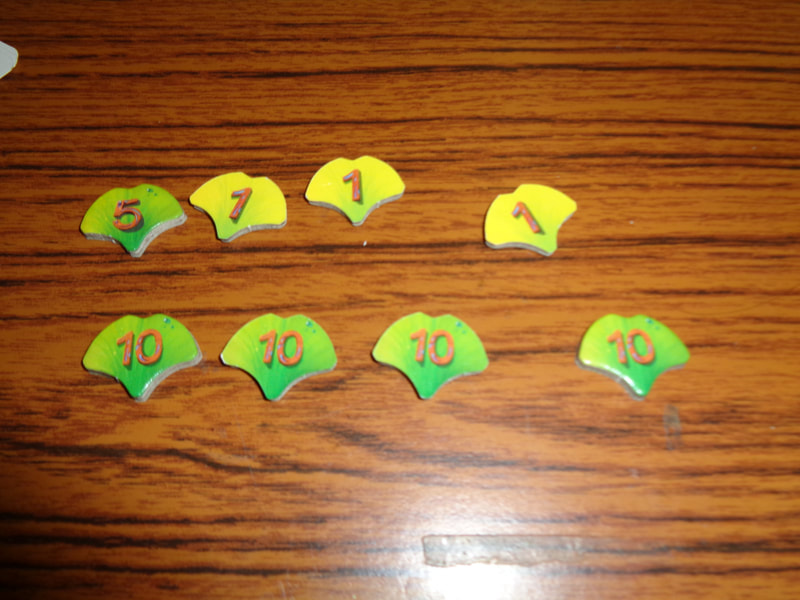
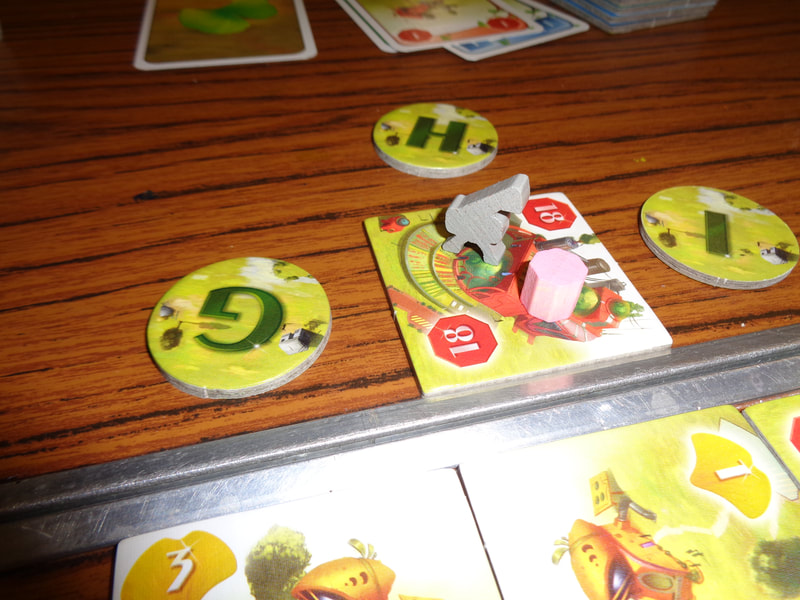
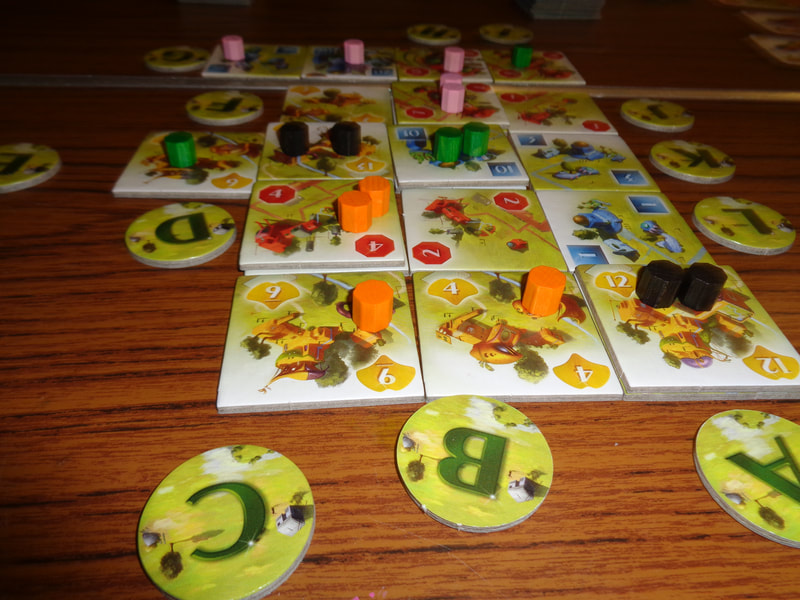
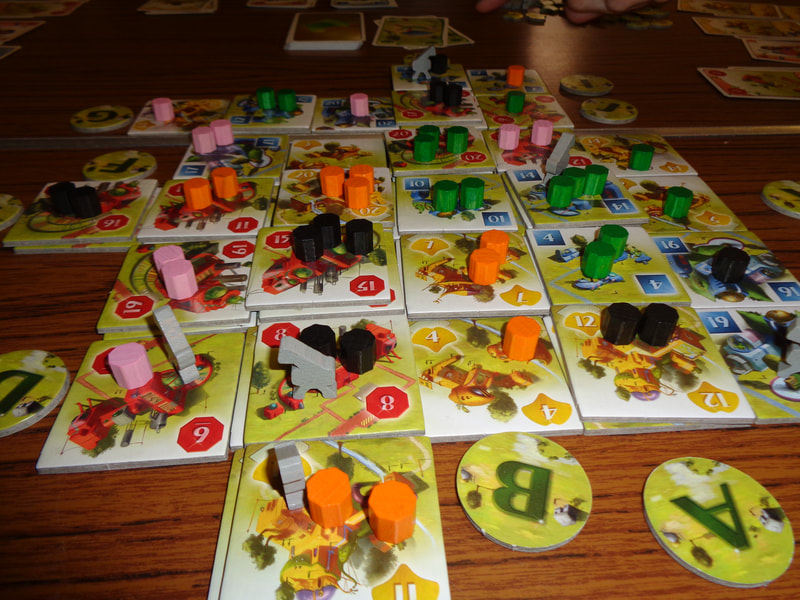

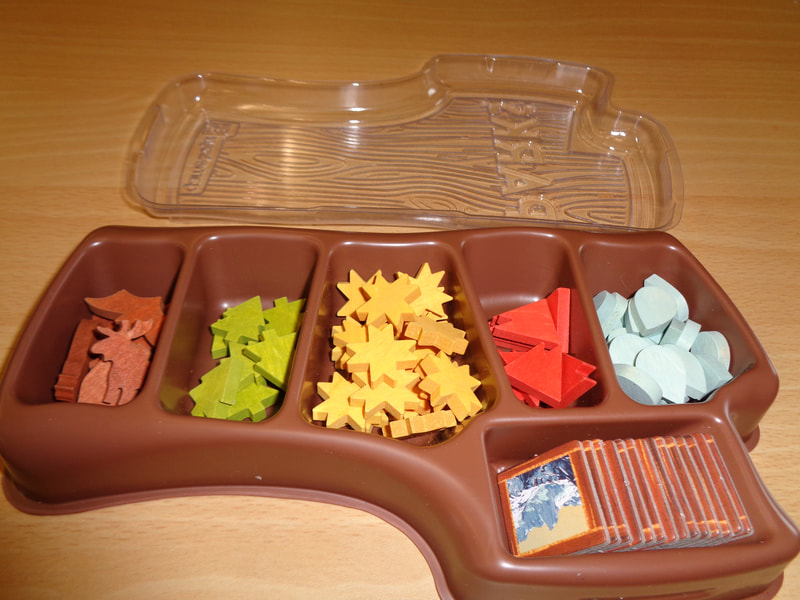
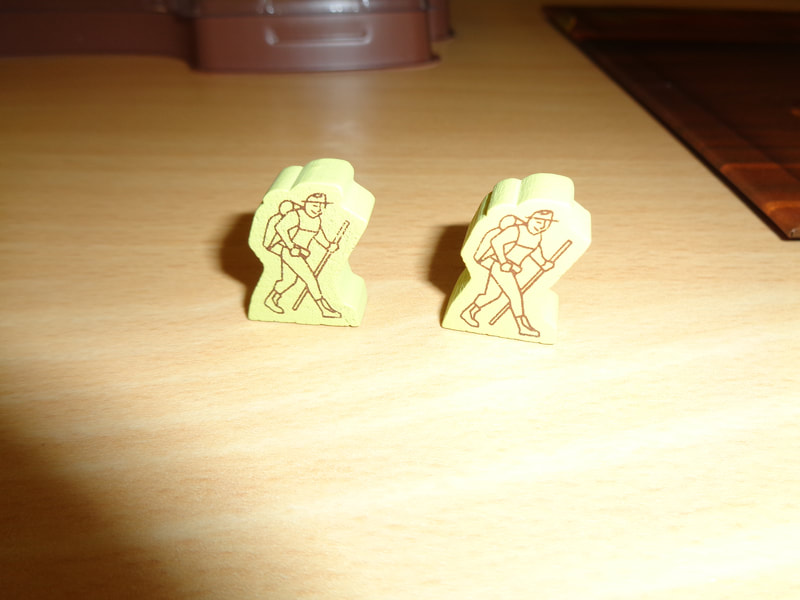
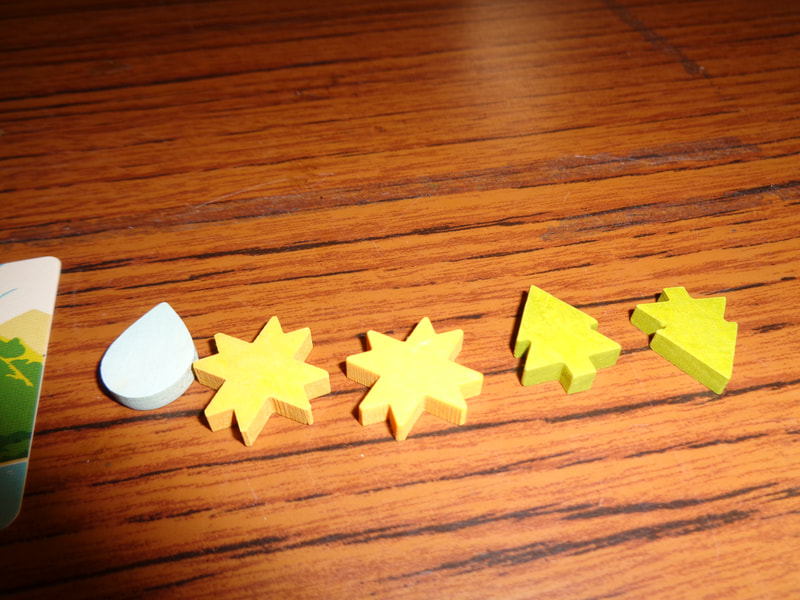
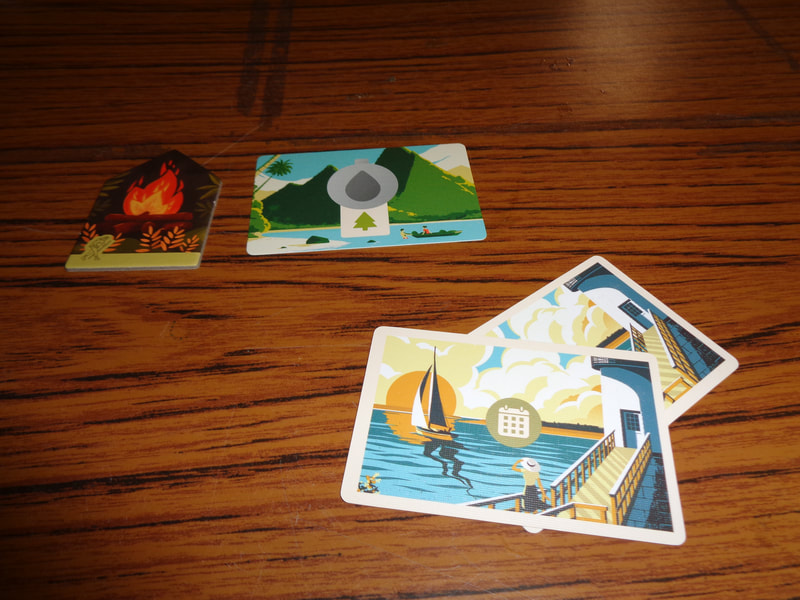
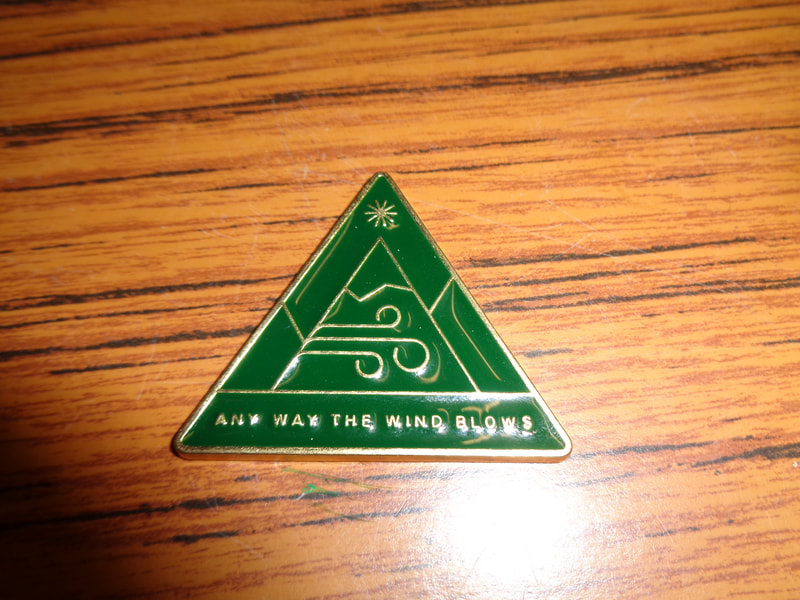
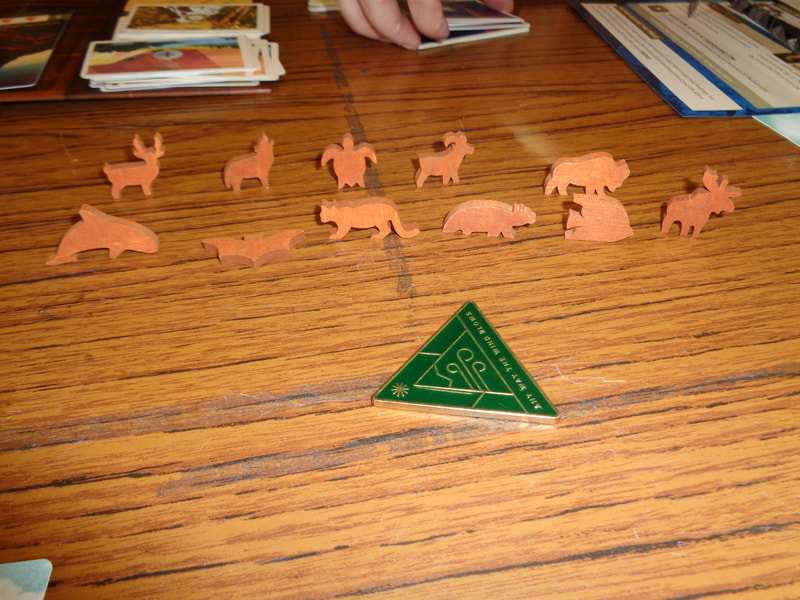
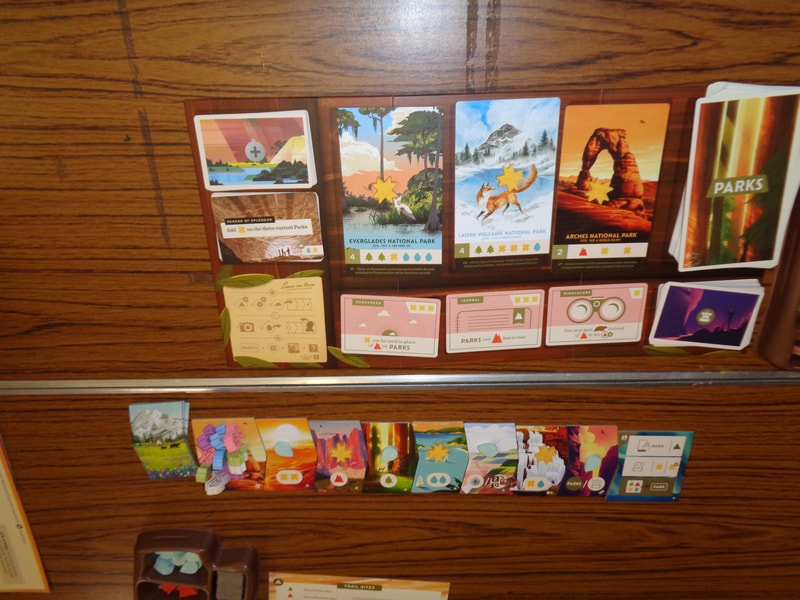


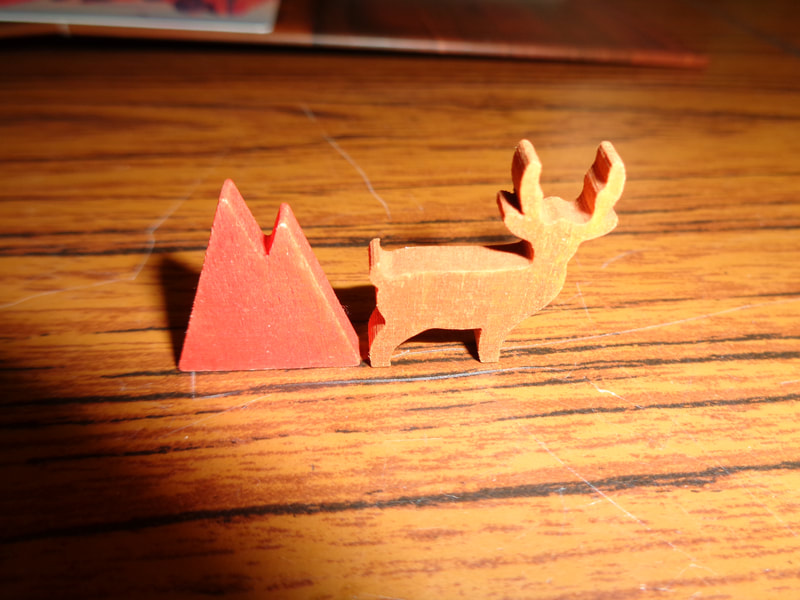

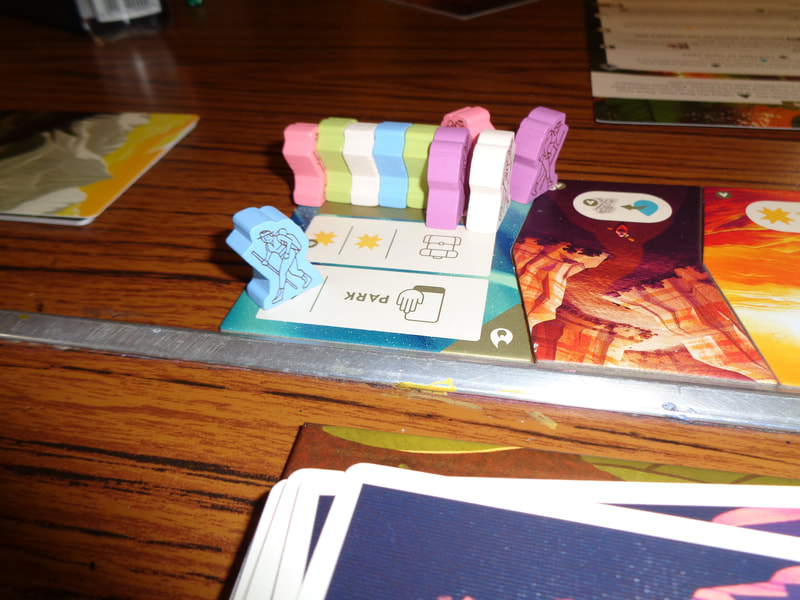
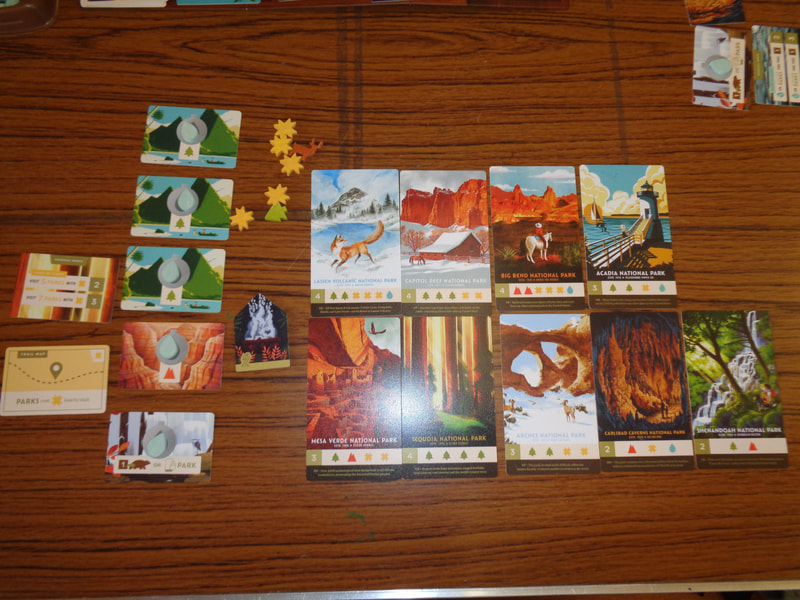
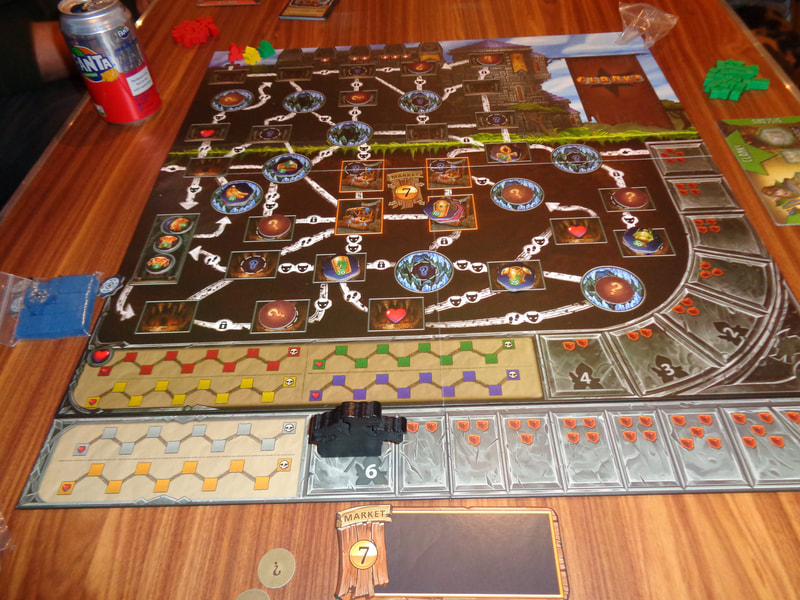
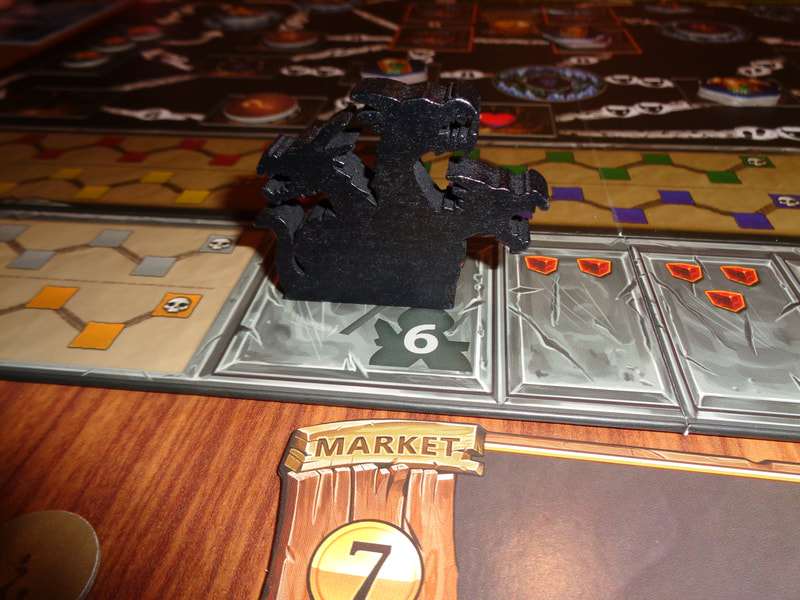
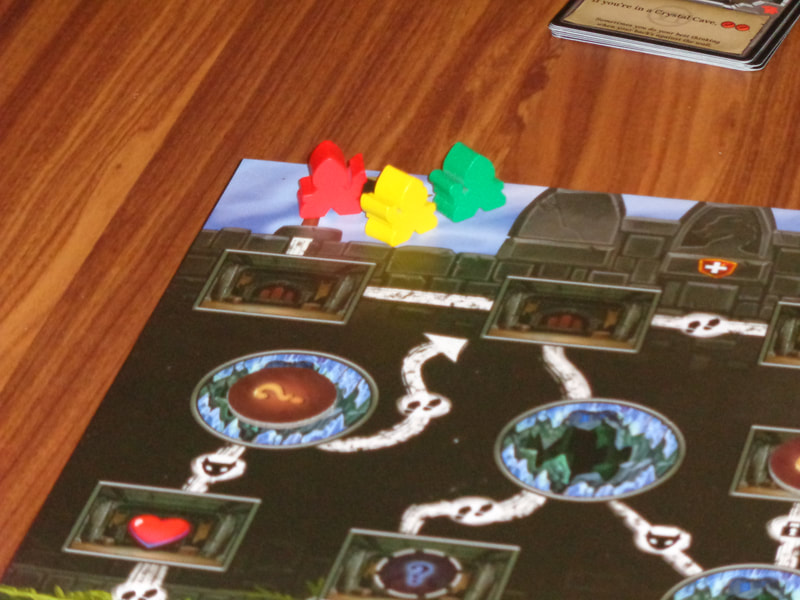
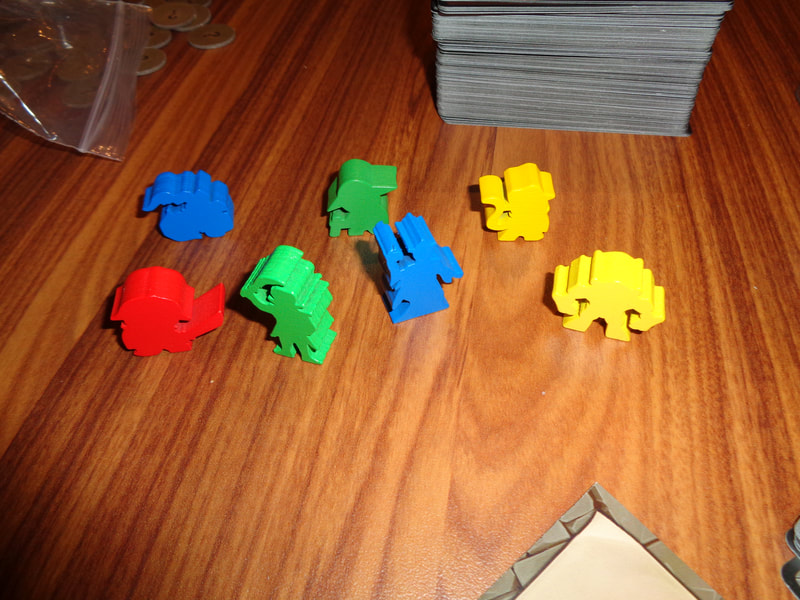

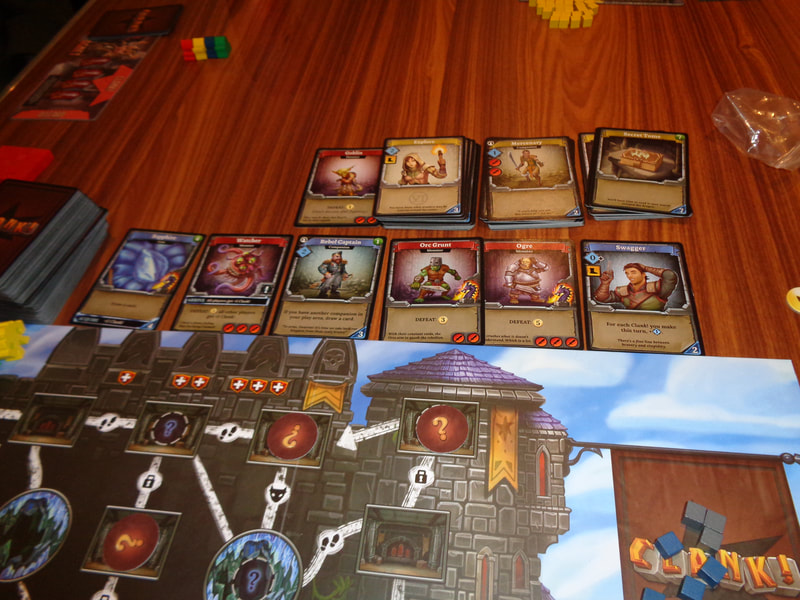
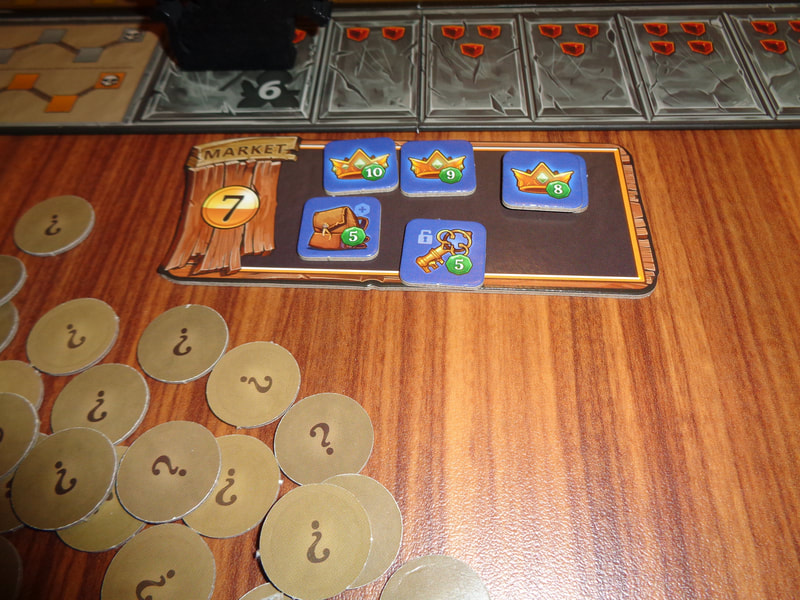
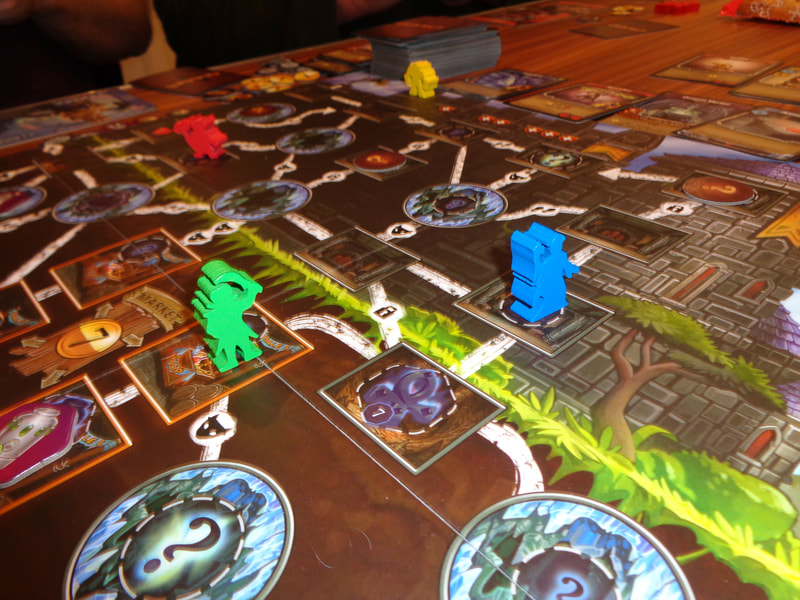
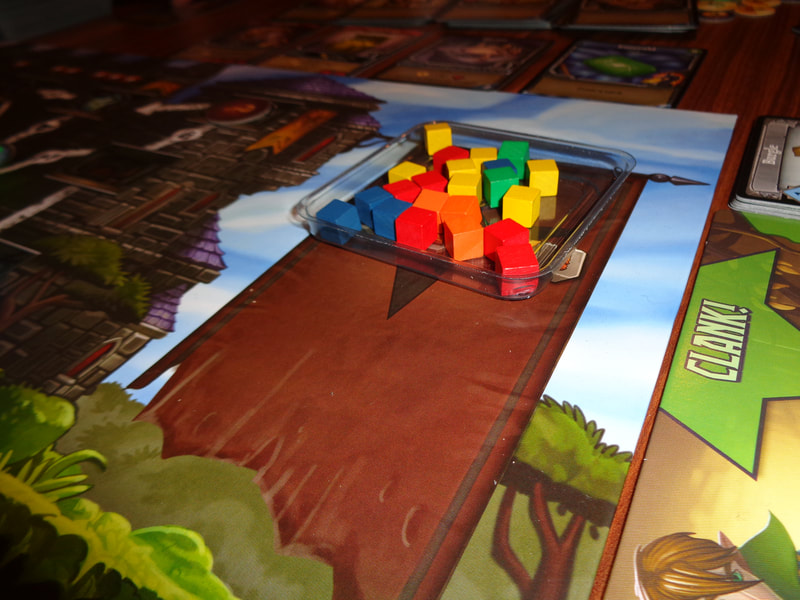


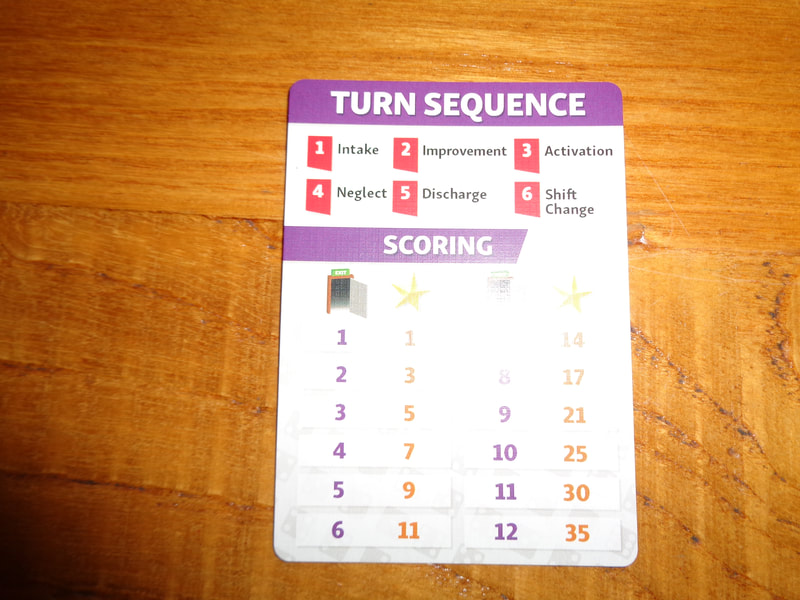
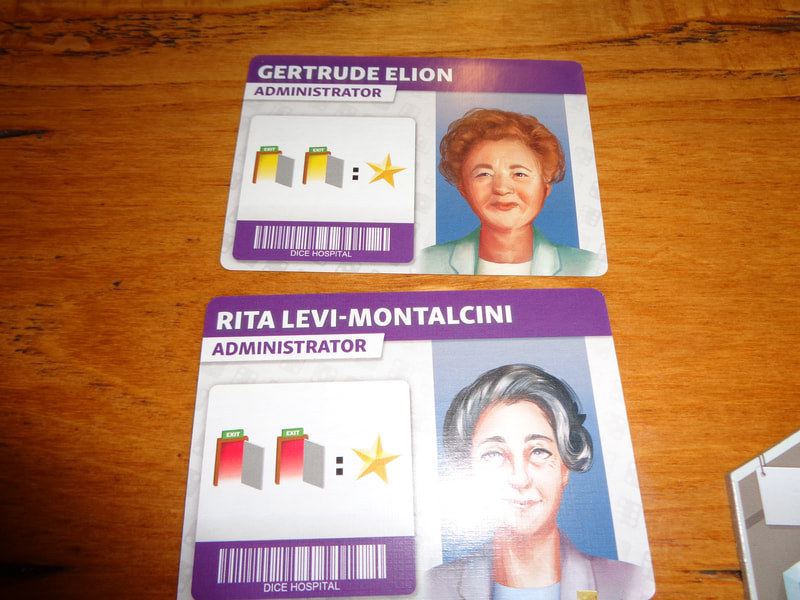
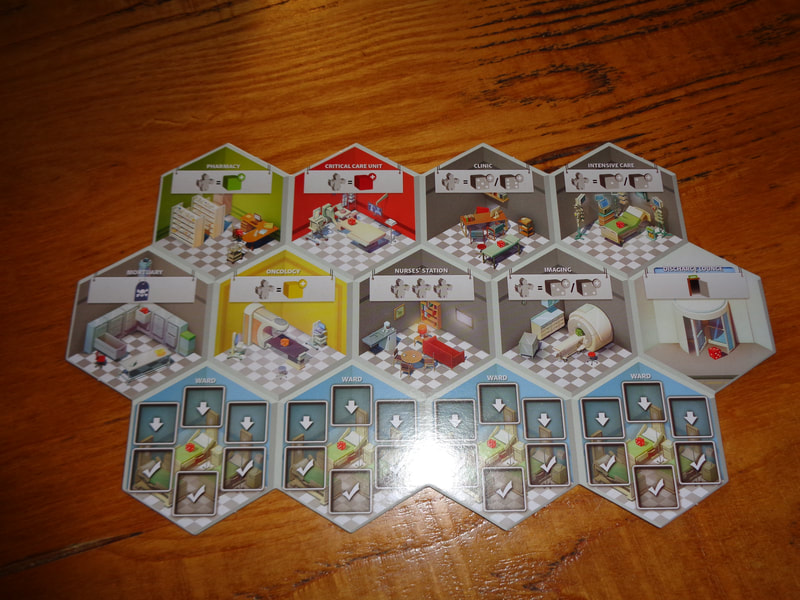
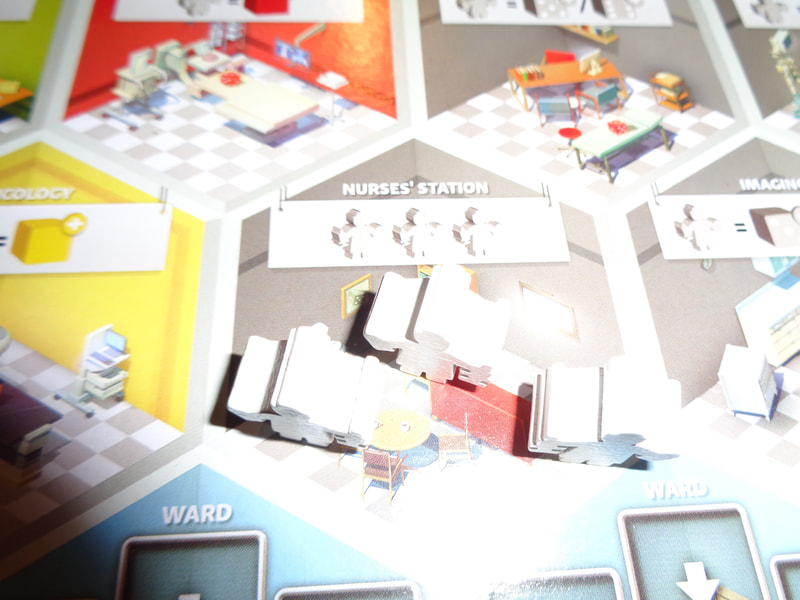

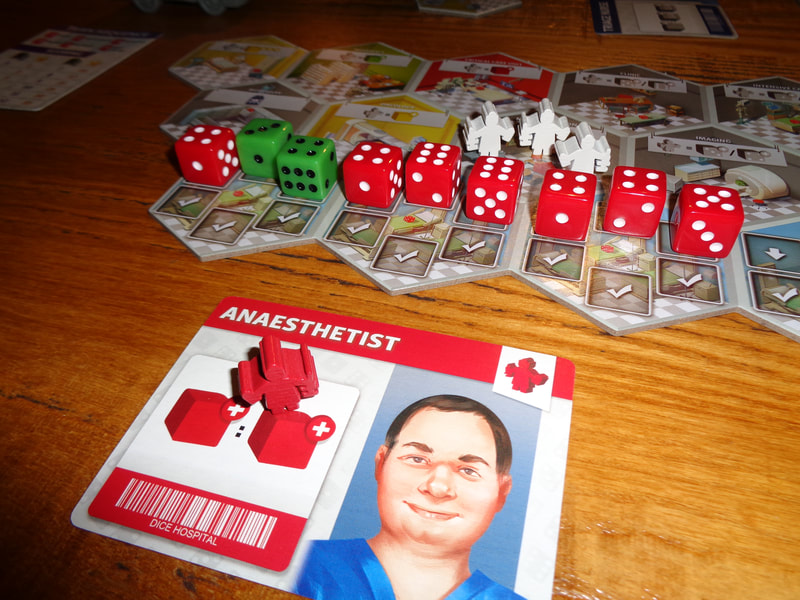



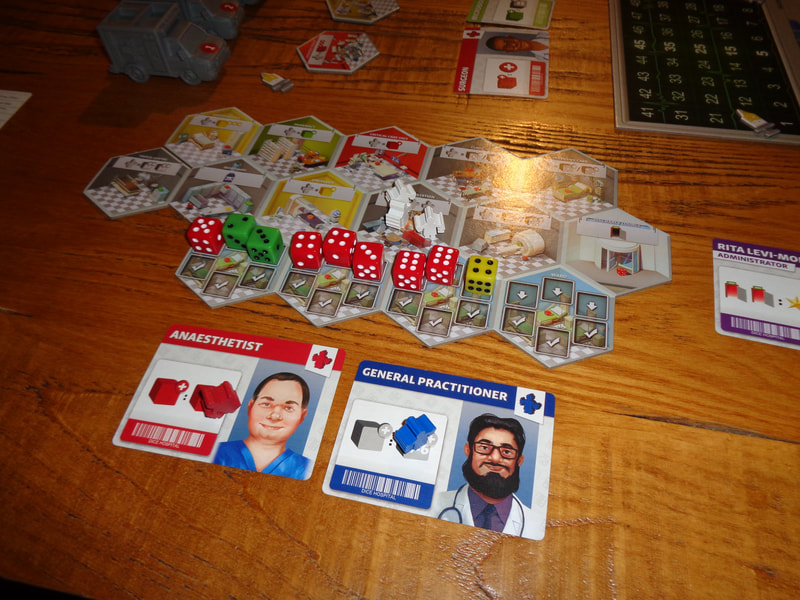
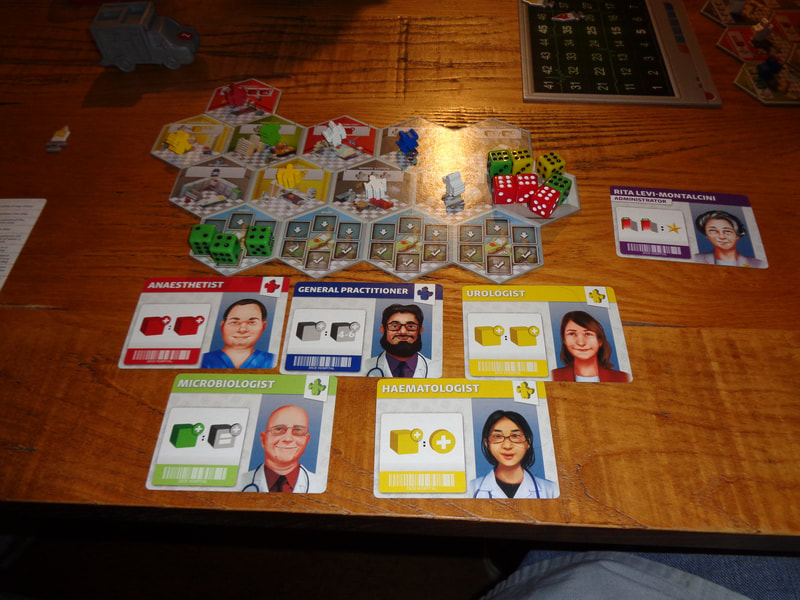
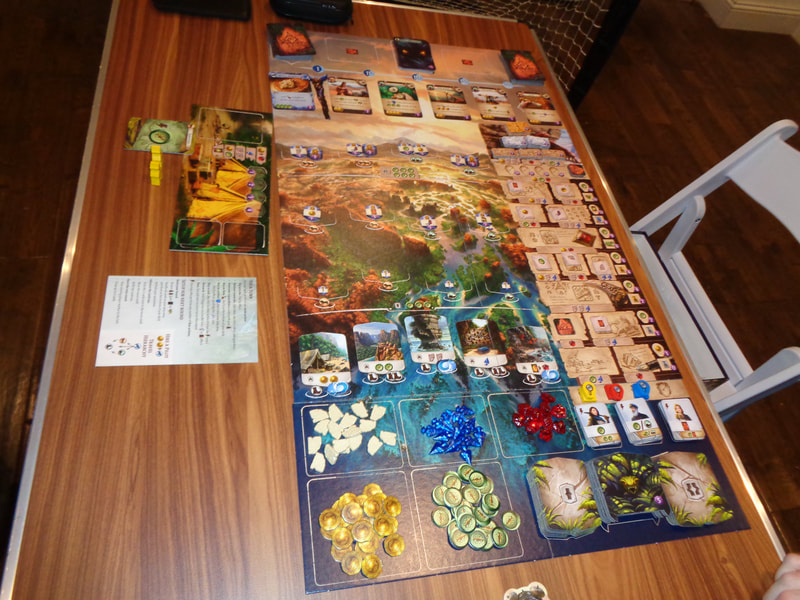
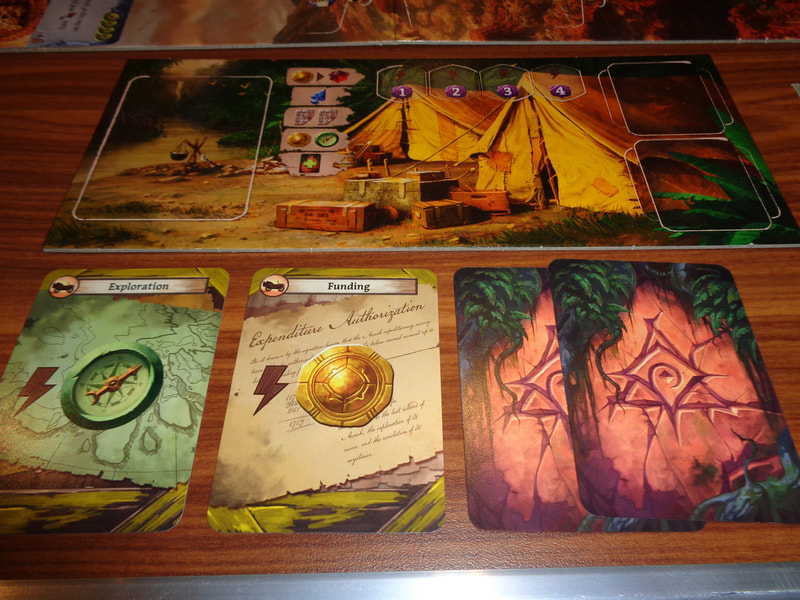
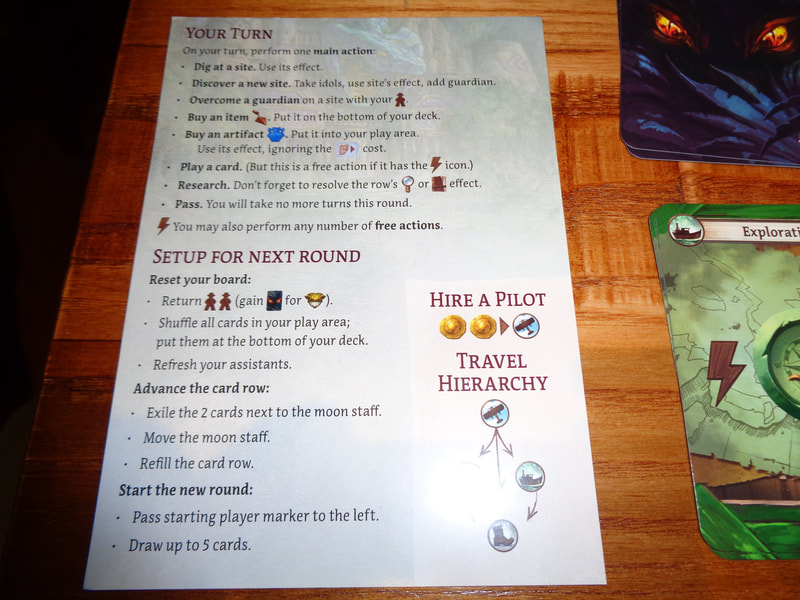
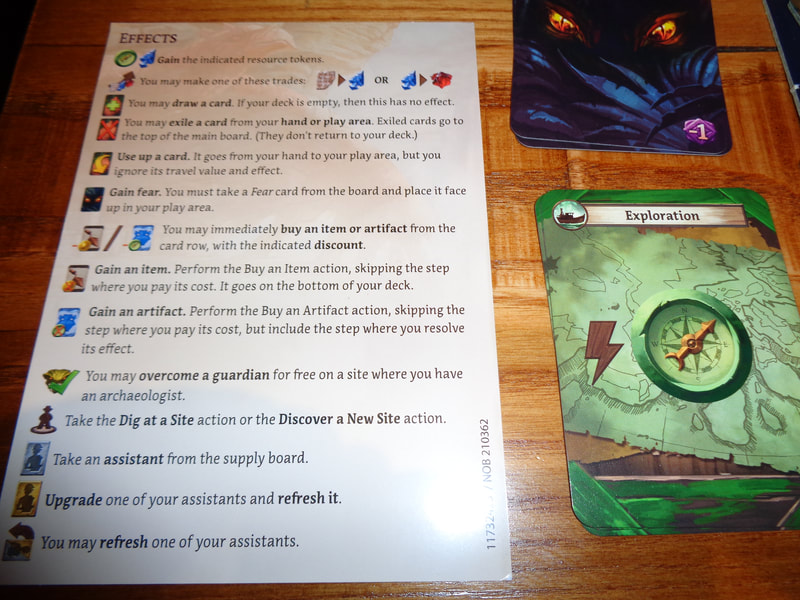
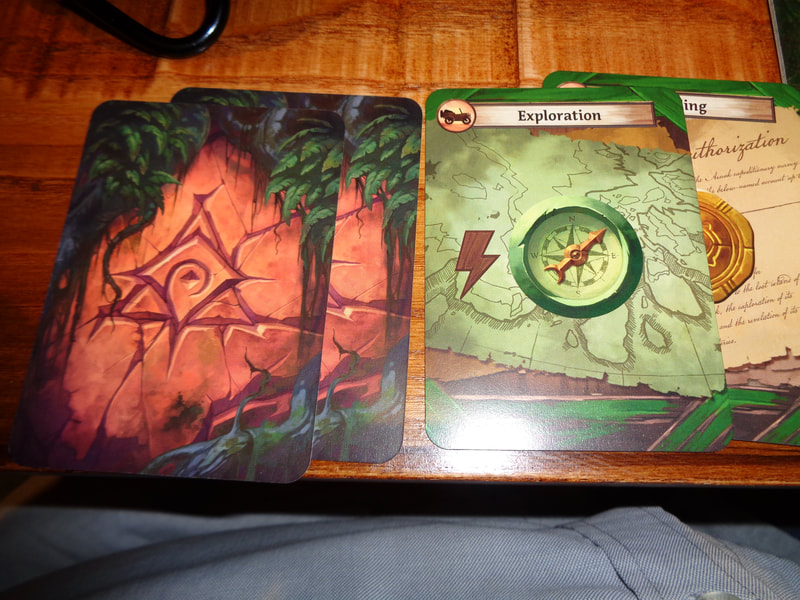
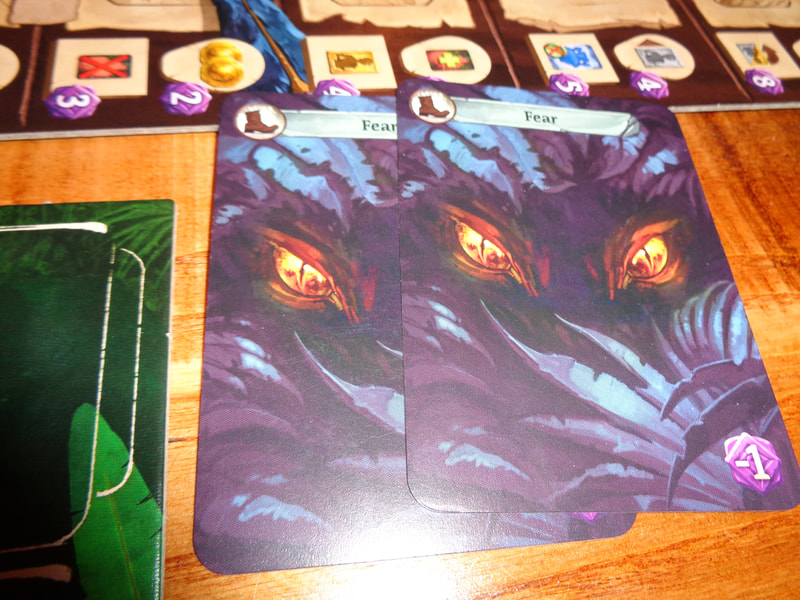
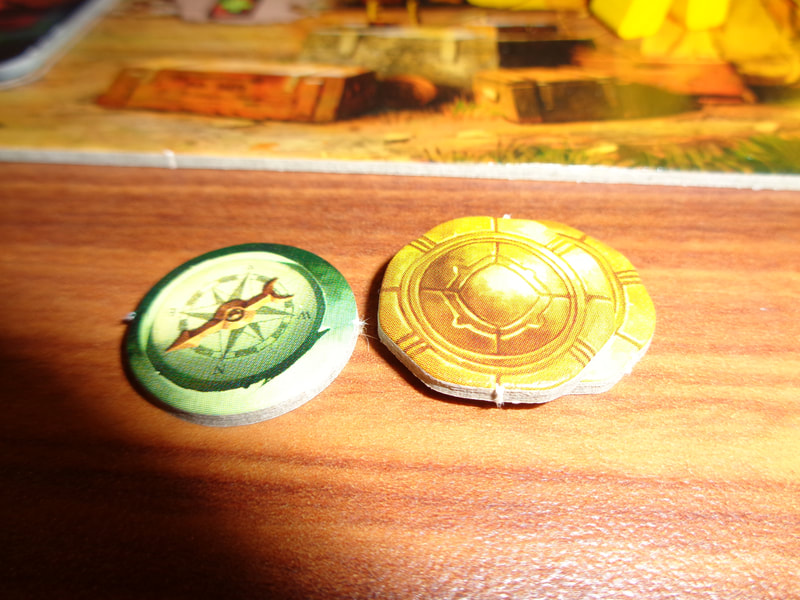
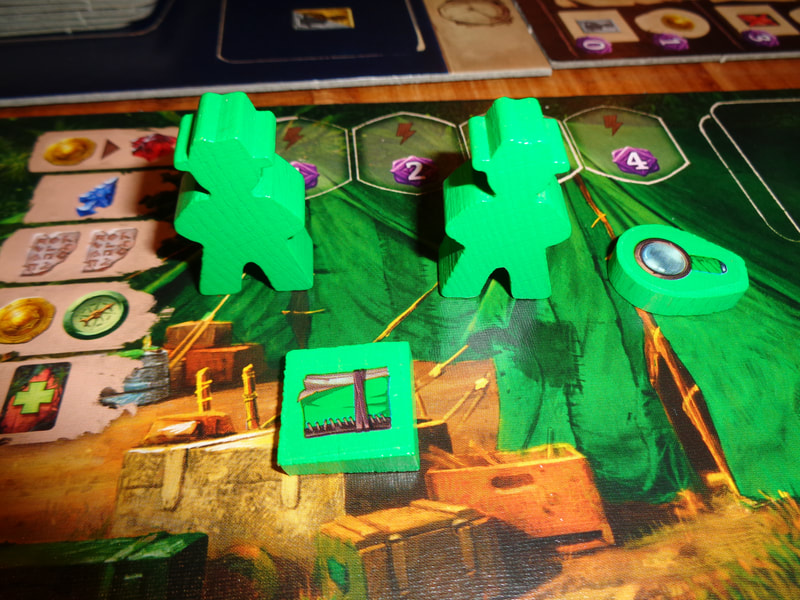
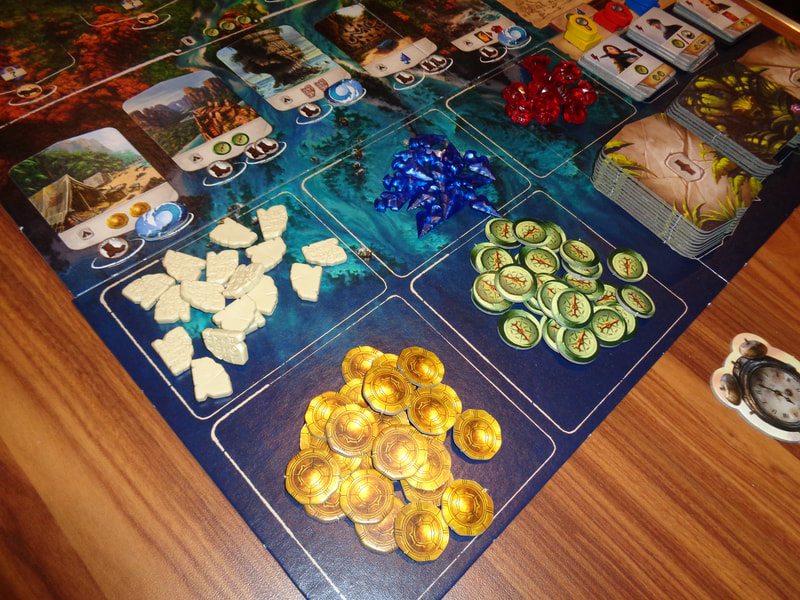
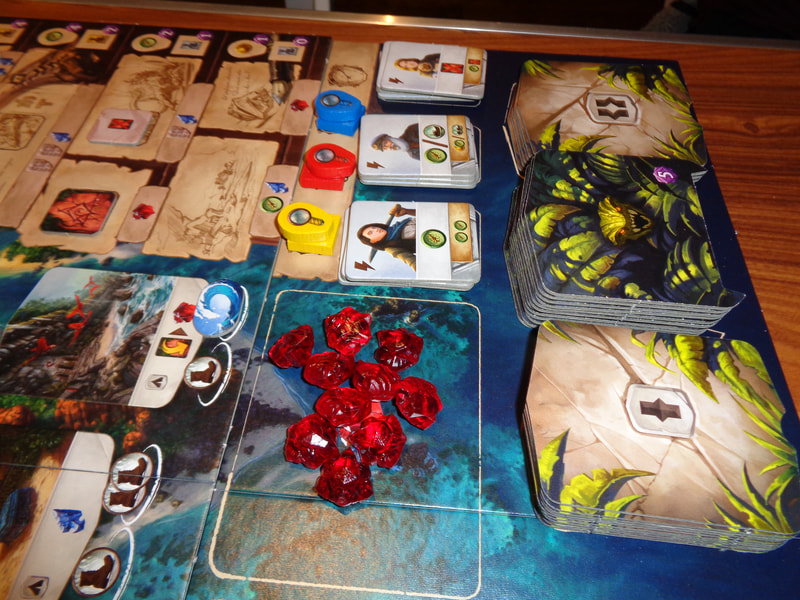
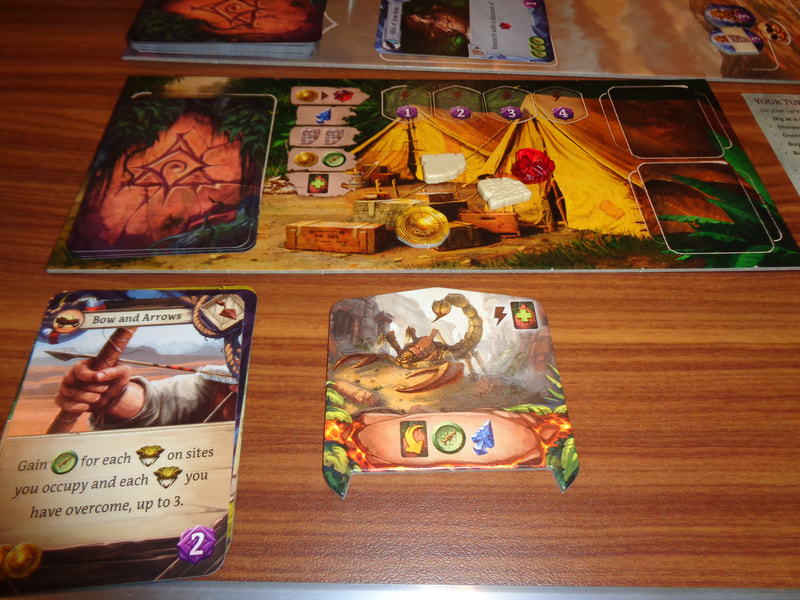
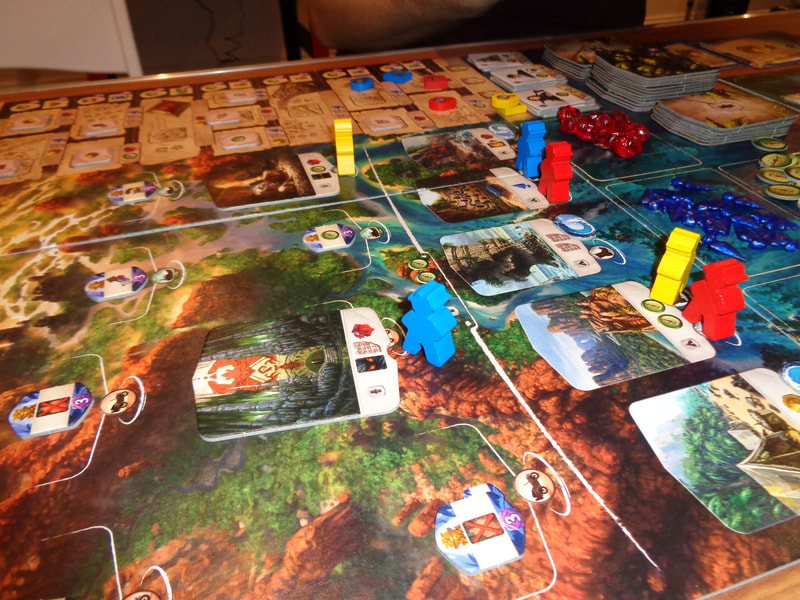
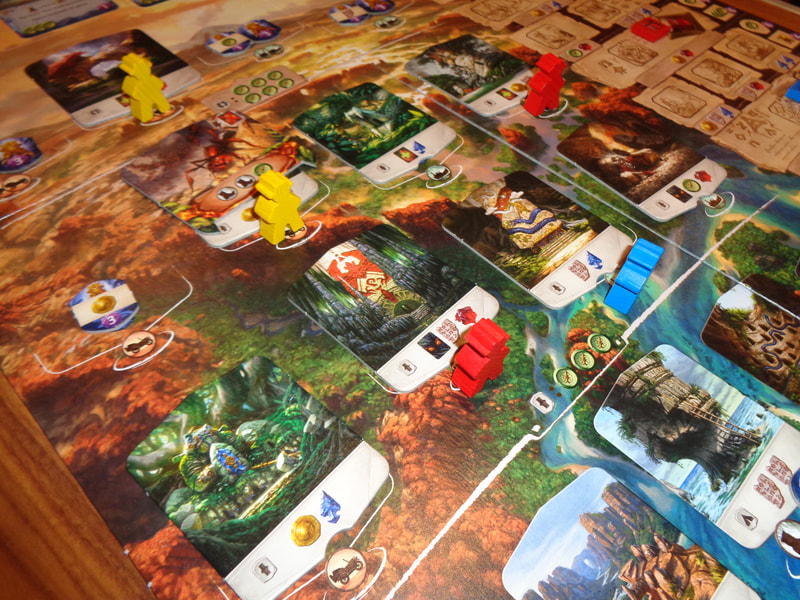
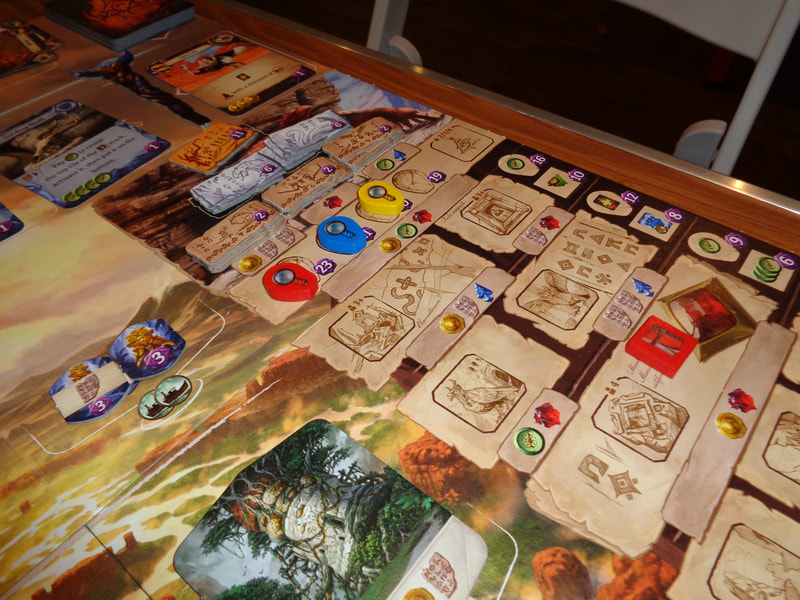
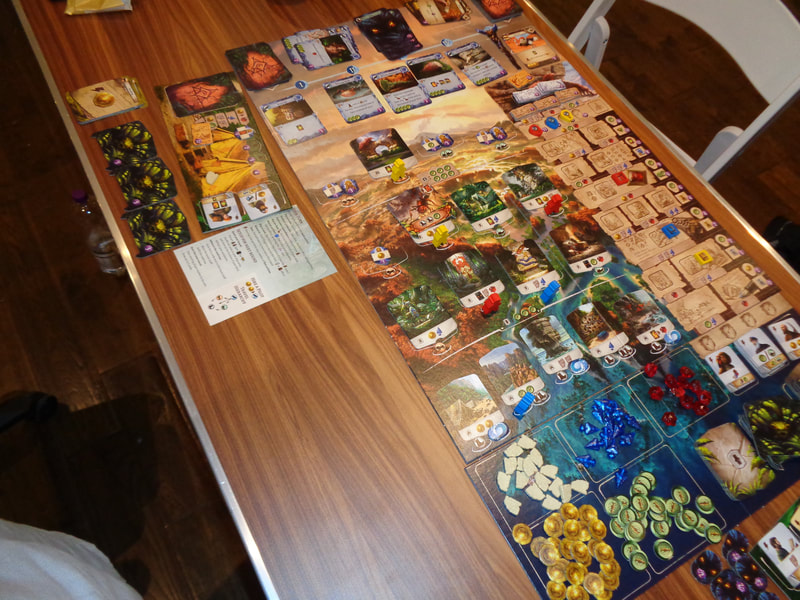
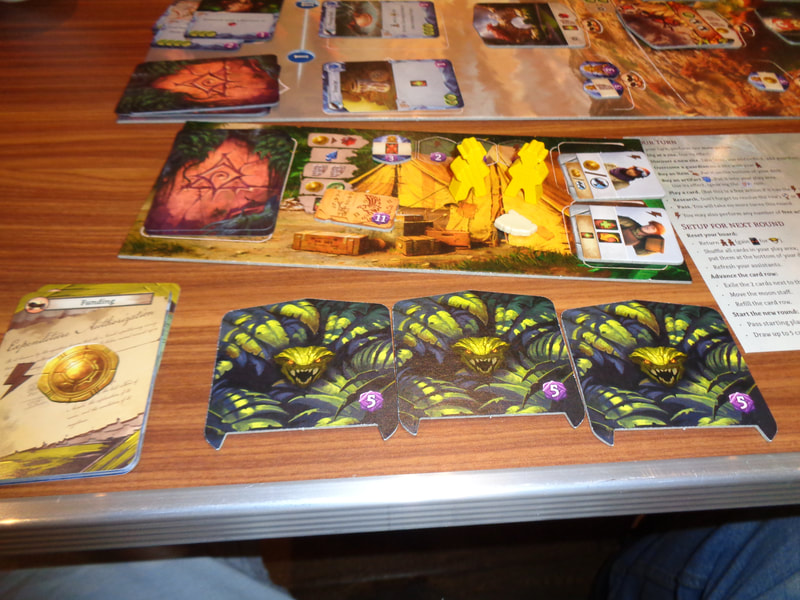
 RSS Feed
RSS Feed
